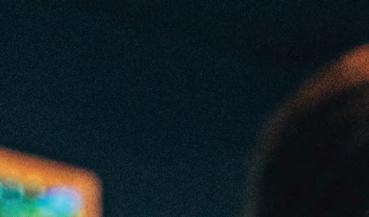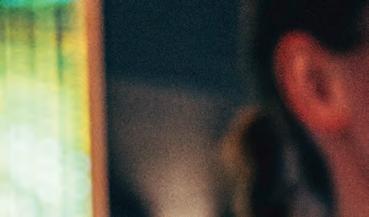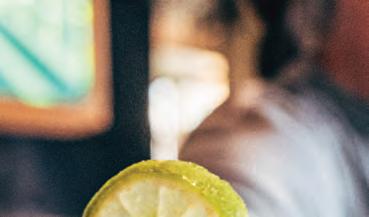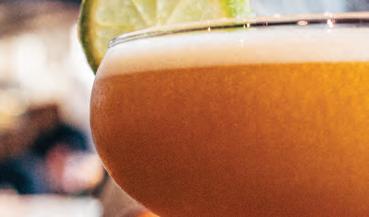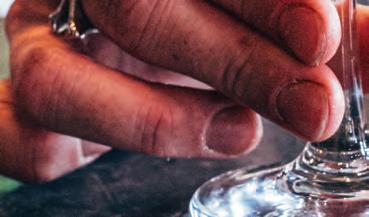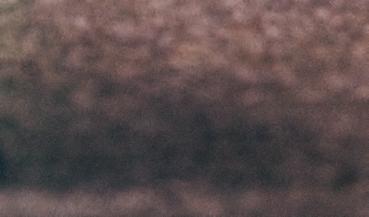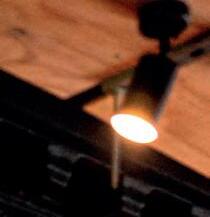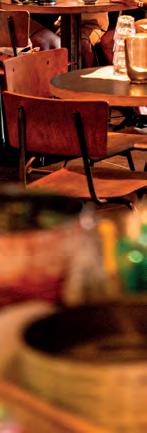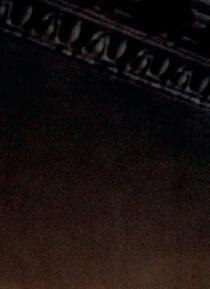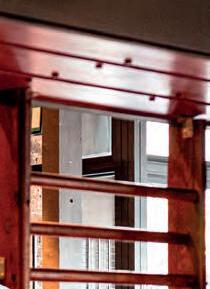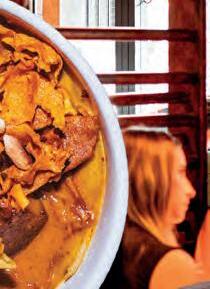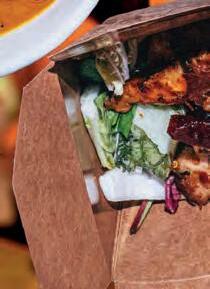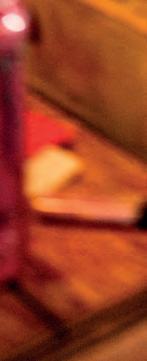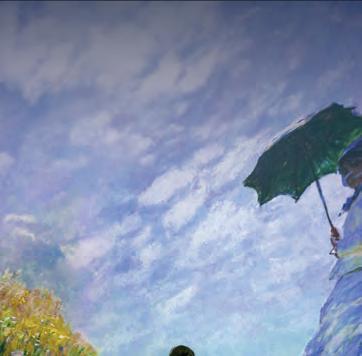
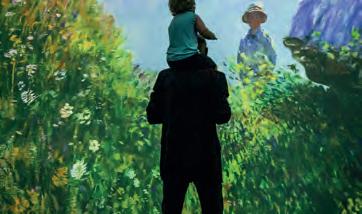
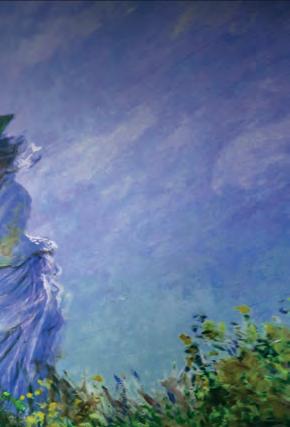
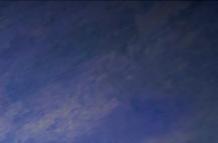



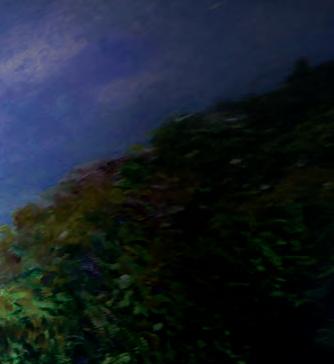
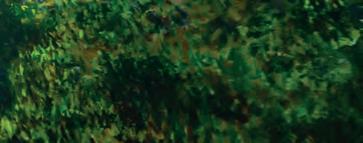

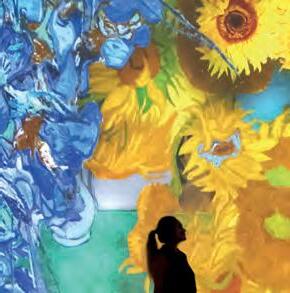
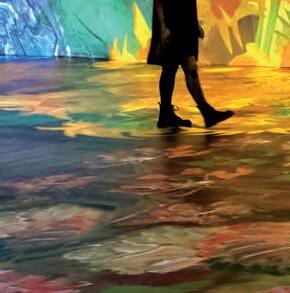
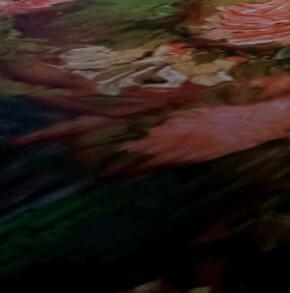

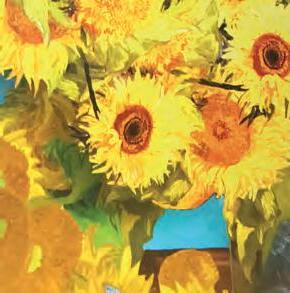
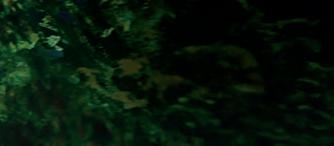





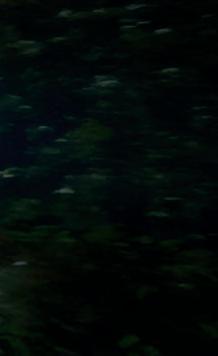




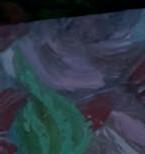
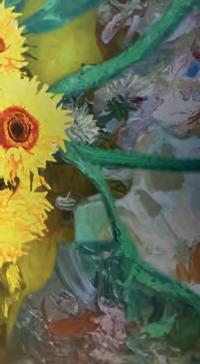
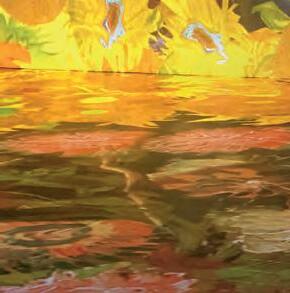
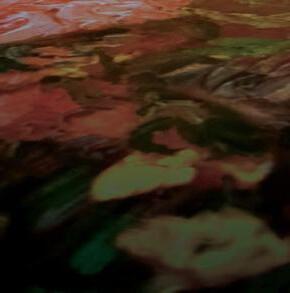

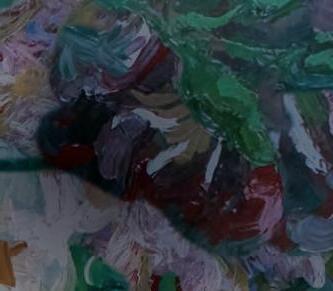




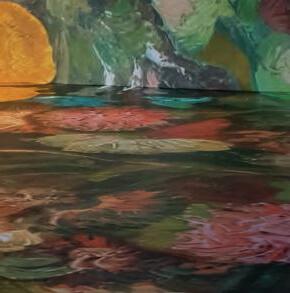
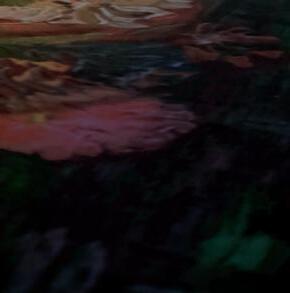
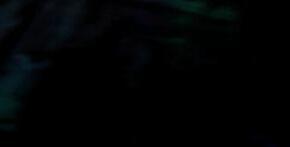
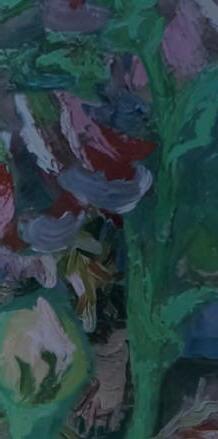
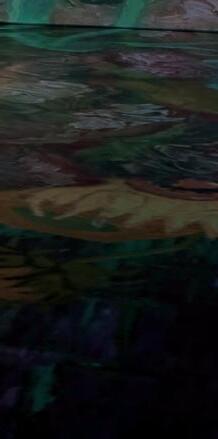

EAT
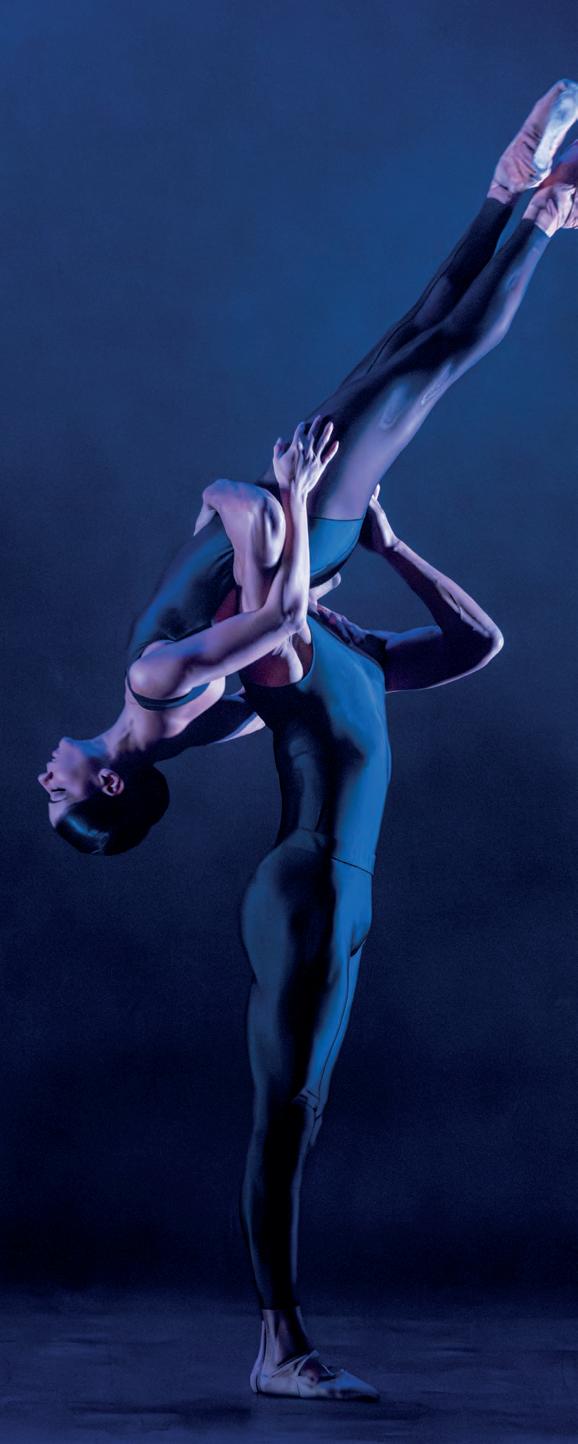
















































Happy 40th, The List. And thank you for letting me be a part of it.
For four decades, The List has been shouting about the best in arts, culture and events, from big names to best-kept secrets and everything in between. Since 1985, we’ve championed independent voices, supported local talent and tried to make sure that, whatever was happening in Scotland’s cultural scene, The List was ahead of the curve.
I’ve been lucky enough to be part of this story for the past 23 years and work on more than 400 issues of The List. That’s a lot of deadlines, a lot of gigs and shows, and a lot of incredible people I’ve had the chance to work with. It’s been a massive part of my life and has always been more than just a job to me.
I first talked myself into a role at The List in late 2001. I was doing press and PR for T In The Park and The List’s co-founder Robin Hodge asked to meet me to discuss the possibility of the magazine’s first-ever CD covermount. I had worked in the music industry in London and was sure I could help make it happen from my side but there was no one at The List who I could liaise with. So I suggested then and there that I could come and work for them: a promotions executive post was created and we pulled off not just one CD covermount, but two, and we were the first UK publication to give away digital downloads in 2005. As the saying goes, the rest is history.
In an ever-changing media landscape, The List has remained true to its values: independent, inclusive, intelligent and always curious, a vision that Robin Hodge has held very close to his heart since 1985 and one that myself and my brilliant team have the privilege to carry on.
A huge thank you to Robin for creating such an incredible village and to everyone who’s read us, written for us, performed in the shows, made the art, hosted the events or just cared about culture as much as we do. You’re the reason we do it. Here’s to 40 years of shining a light on creativity and here’s to the next 40.
Sheri Friers CEO


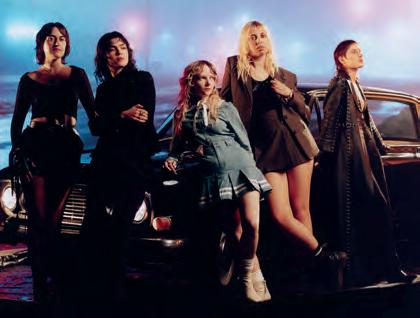
Afreka Thomson, Ailsa Sheldon, Brian Donaldson, Carol Main, Claire Sawers, Danny Munro, Donald Reid, Emma Simmonds, Eve Connor, Evie Glen, Fiona Shepherd, Gareth K Vile, Gary Sullivan, Greg Thomas, Isy Santini, James Mottram, Jay Richardson, Jay Thundercliffe, Jo Laidlaw, Kelly Apter, Kevin Fullerton, Lauren McKay, Lucy Ribchester, Marcas Mac an Tuairneir, Megan Merino, Murray Robertson, Neil Cooper, Rachel Morrell, Rob Adams, Robbie Armstrong, Robin Hodge, Sheri Friers, Suzy Pope, Vic Galloway, Zara Janjua



















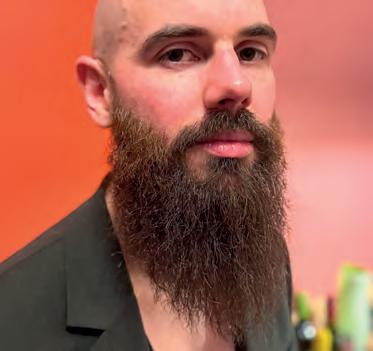
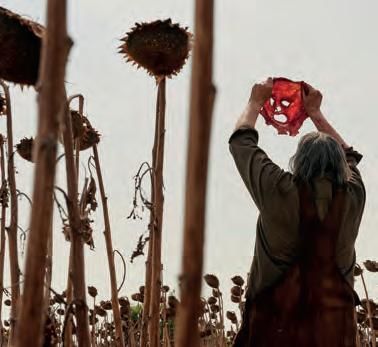

With the spooky season upon us, our resident columnist Kevin Fullerton aims an invective-filled sewage pipe at a few modern horrors in the world of art and culture
One of the most notorious serial killers of the 20th century, Ed Gein was prone to what one could call ‘arts and crafts’ projects constructed from his victims. When police raided his home, they found a ‘woman suit’ made of human skin and a chair upholstered in, well, also human skin. But the most intriguing (and probably apocryphal) finding is the foreskin he kept in his kettle. Imagine popping round to Gein’s for a brew. ‘This has a smoky tinge to it, Ed. Is it a lapsang souchong?’
‘Well,’ Ed would reply, with a roguish smile. ‘You’ll never guess . . . ’
The penile tea tastes of Gein were never covered in The Texas Chainsaw Massacre or The Silence Of The Lambs, but then scary movies seldom capture the real terror of contemporary living. Forget serial killers and ghouls: keeping up with the world of art and culture nowadays is like entering a psychotic phantasmagoria that would make Pinhead quiver the knitting needles from his latex flesh. Take Graham Linehan, for instance. No seriously, take him. Imagine having to share a plane with the writer-turned-quite-possibly-future-aneurysm-haver as he alternately screams dodgy sitcom ideas and grubbily types transphobic tweets into his phone with the air of a chronic masturbator high on his own fecundity. Idea: place Linehan and JK Rowling in a giant killing dome then tell them separately that there’s a trans teenager nearby. The ensuing carnage as they tear each other apart will be like the FreddyVsJason sequel we never got.
Then there’s Spotify, a serial killer of music careers that puts Norman Bates to shame. As if paying musicians a pittance for their output wasn’t villainous enough, Spotify’s CEO Daniel Ek recently used his mega-wealth to invest in a military tech company. Another idea for a film: TheStreamingFactory, a chiller set in a Victorian workhouse which uses mid-level music stars as its slave labour, each of whom is whipped by a cackling Ek while turning the crank of a gigantic gramophone. Perhaps Taylor Swift stands beside Ek, smoking a giant cigar and bellowing, ‘I’m so sorry, there’s no positive action that I, an actual billionaire, can do about the ailing music industry. I’m a mere musician like you.’
These atrocities are nothing compared to artists who insist on littering their albums with aspirational voice notes, manifesting their way through songs with well-meaning clichés ripped from your ailing aunt’s Facebook wall (Doechii, why hast thou forsaken me?). These are the real monsters of modern culture, and all should tremble in their wake. Worse than Linehan? Perhaps. The horror! The horror!
Sometimes it can be one battle after another to get a cultural artefact or human to begin with the same letter of the month in question (Quovember is always tricky). Thankfully the actual film One Battle After Another is just out, Paul Thomas Anderson’s latest, a comedy adventure with young/notso-young-anymore Leo DiCaprio. We’re covering him in much more depth later in this issue, but you can’t turn up a doublepoint-score mention when it falls in your lap so all hail the late dark prince Ozzy Osbourne and Black Sabbath: The Ballet which sashays and headbangs its way into Edinburgh soon. Russian stand-up Olga Koch is back on our stages with Comes
From Money, after which you’ll have ‘another little white bitch you will love to hate’. This is most certainly her words and absolutely not ours. Switzerland-based Syrian artist Osama Al Rayyan brings his sculpture/oilon-canvas exhibition Camping to Glasgow’s Modern Institute and, well, there’s no easy way to say this given the extraordinary lengths we travelled to not mention them in the summer (failed, admittedly), Oasis have released a recording of ‘Wonderwall’ from their Dublin gig. And not from the city of ‘thick shit’ aka Edinburgh. Again someone else’s words not ours. Liam Gallagher’s if you really have to ask. Though, in fairness, it was (quite literally) a toss-up.
As we say goodbye to the summer months and hunker down for autumn, we’d recommend wrapping yourselves up in the cosy sounds of this issue. This month’s soundtrack features music from Black Sabbath, Idlewild, Hot Chip, The Last Dinner Party, Sudan Archives, Patricia Brennan and many more . . .
Scan and listen as you read:



Kindly pop idol Will Young visited Edinburgh recently to drop off some Miraculous Meals at the city’s Dog & Cat Home and no doubt was unable to resist tickling a few cute pooches under the chin. His dog-food brand is aimed at supporting rescue centres and he’s been touring across the country in a lorry packed with delicious (if you’re of the canine persuasion) doggy scran. Here he’s pictured with his own formidable-looking companion, Domino.
In this series of articles, we turn the focus back on ourselves by asking folk at The List about recent cultural artefacts that touch their heart and soul. This time around, Lauren McKay tells us which things . . .
Made me cry: From Ground Zero is a collection of 22 short films and documentaries from Gaza, showing everyday life for Palestinians living through hell. When so many of the murdered are reduced to numbers, it’s a vital reminder of their humanity.
Made me angry: At the Palestine Museum, there’s a collection of drawings by young children showing an Israeli attack. The horrors of the scene in the bright, colourful scrawls of children offers a stark contrast between the innocence of the medium and the brutality depicted.
Made me laugh: The new series of Taskmaster is here! It’s always a tonic; a simple, silly pleasure that never gets old.
Made me think: My dad lives in the same village as Andy Goldsworthy, so I’ve stumbled upon his work often. But because he works with nature, most people don’t get that opportunity. The Andy Goldsworthy: Fifty Years exhibition got me thinking about creating art in an impermanent medium. For Goldsworthy, it’s the act of making art that’s important rather than it being seen, a philosophy that challenges our usual notions about art’s purpose and value.
Made me think twice: Resistance at Modern Two is about how protest shaped Britain and photography shaped protest. It documents the history of protest and counter-protest in the UK, from the suffragettes in 1903 to the Iraq War protests in 2003, as well as the role of the police. The timing is pertinent, and it proves the importance of both individual and collective resistance.









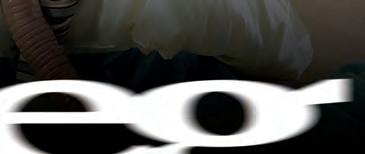



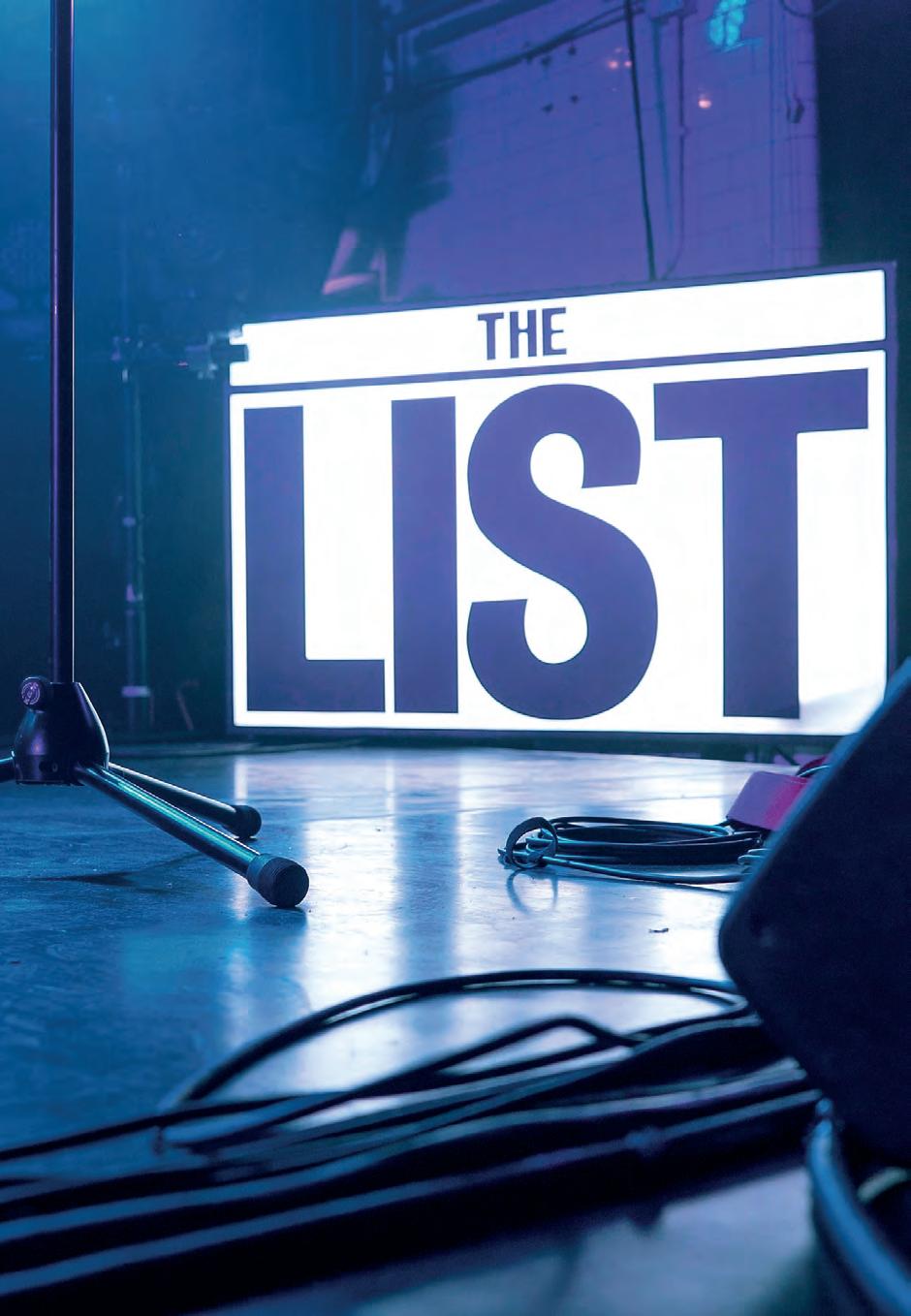
1985 July
Go-ahead for October launch given jointly by Robin Hodge, Nigel Billen and Sarah Hemming after months of discussion; magazine title agreed, logo designed by Simon Esterson approved, publishing company (The List Ltd) formed, and title registered with British Library
1985 October First issue goes to press; launch party held at Glasgow’s Third Eye Centre
Life, they say, begins at 40. The List is now officially into its fifth decade and while the magazine continues to move forward with purpose, this is the perfect opportunity to reflect upon all that has come before. And there’s no better way to start the reminiscing game than with this introduction by Robin Hodge, co-founder and former long-term publisher of The List, as he considers the early chaos, more recent challenges, and the joys of giving a platform to Scotland’s rich cultural life

If you had asked the team that launched The List magazine back in 1985 whether they thought it would still be going 40 years later, I think the answer would have been a resounding yes. But there would have been a proviso: such was the turmoil at the start, we would first have to find a way to survive 40 weeks. We struggled almost to exhaustion in those early months, working through the nights to get listings compiled, articles written and pages laid out ready for printing. We didn’t understand how to appeal to advertisers. We took time to learn how to get copies into shops. And our financial resources ran out in a few weeks, leaving us mired in debt which created all sorts of difficulties and took years to clear.
But however much wishful thinking was involved, we were confident that there was a real need for such a magazine. The range, the depth, the sheer quality of the cultural life of central Scotland was remarkable. It was crying out for a voice to acknowledge, acclaim and support it. And by letting people know what was happening, we would boost audiences and encourage more to happen. Ever since Alasdair Gray’s novel Lanark was published back in 1981, there had been a transformation in the perception of Scottish writers, musicians, filmmakers, artists and performers that they no longer had to head south in order to gain recognition. They could stay in Scotland, pursue their vision and achieve success.
That is not to say that everything was easy. It wasn’t. Without media attention, it was hard to find out what was on. Word of mouth took time to spread and so plays like John Byrne’s brilliant Writer’s Cramp didn’t sell out until late in its run. Musicians such as John Martyn and performers like Ivor Cutler struggled to draw in more than their dedicated core following. And young critics and writers
1986 June
Magazine nearly closes, five days late in publication due to production delays and problems raising funds to pay the printer’s bill and get copies released
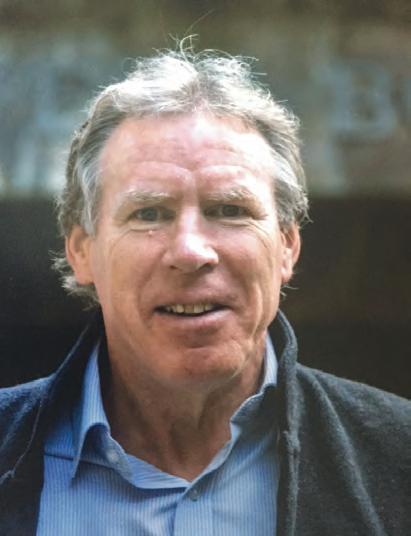
were unable to get published in the press without first serving time as a trainee reporter.
All this began to change once The List appeared. The task we set ourselves was to find out details of all the events that were happening, use our specialist expertise to identify and highlight what was most interesting and significant, and to acclaim the exceptional. All this was done by a dedicated team who were chosen because they knew their fields, could recognise real talent and were passionate in supporting the best of what was happening.
In time, we learned how to meet deadlines, how to connect advertisers with the customers they wanted to reach, and how to package each issue into an appealing product. We later expanded with our Eating & Drinking Guide, the I Saw You column, a radio station and Edinburgh Festival parties. The new writers we published were snapped up by the mainstream papers who were worried about being left behind. And the arts scene expanded and prospered.
Forty years on, The List magazine has handed over the task of publishing listings to the searchable web version and now concentrates on selecting highlights of what is happening each month with previews, interviews, profiles, reviews and features. It has transformed, from black and white printing on cheap newsprint to full colour on art paper; its frequency has shifted from fortnightly to monthly, and the business model from paid-for to free.
We did have an enforced break due to covid, but thanks to all those who supported the crowdfunding campaign, The List bounced back in 2022. Now under the energetic leadership of Sheri Friers, it continues to be needed and relevant. At heart, it still sees its mission as celebrating and supporting the cultural life of Glasgow, Edinburgh and further afield.
1986 July
First full colour editorial with 16-page supplement on the Commonwealth Games Arts Festival taking place in Edinburgh
1986 August
First coverage of Edinburgh Festival; Gus Macdonald, the new MD of Scottish Television, commissions us to produce two special editions of a new STV staff magazine
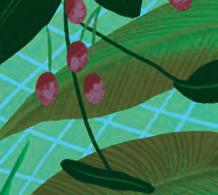


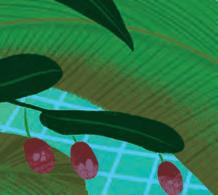




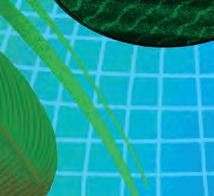
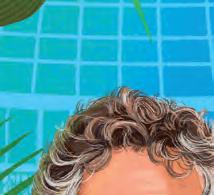
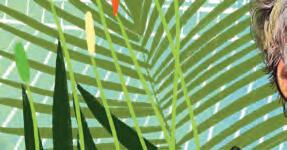


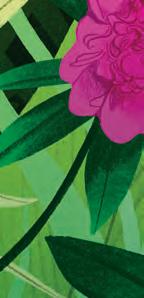

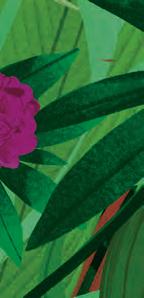
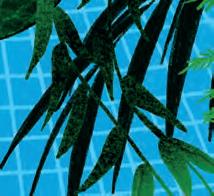


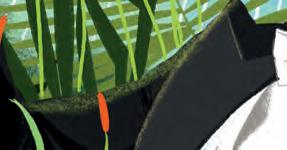





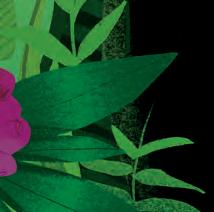

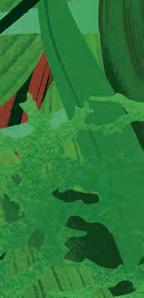



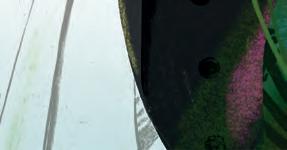

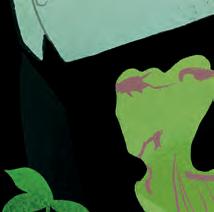

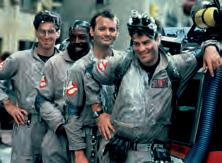
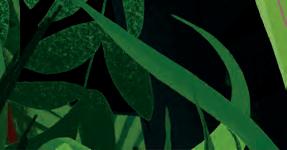
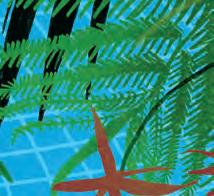
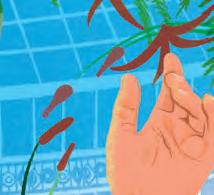



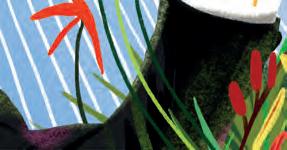
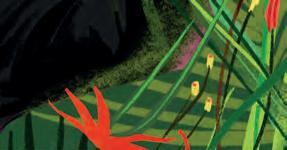
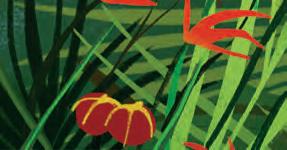
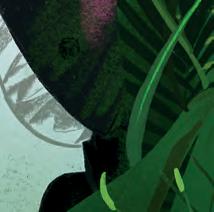
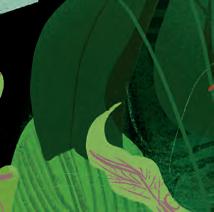


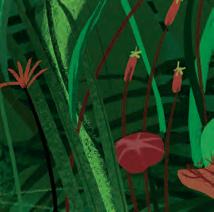







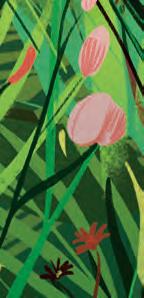


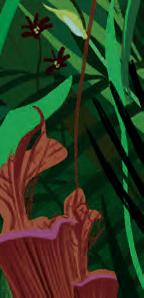
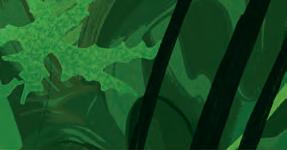

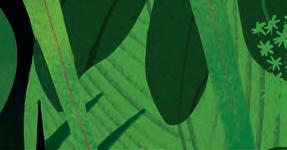





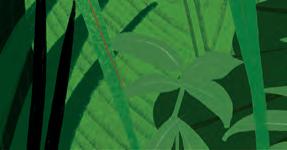
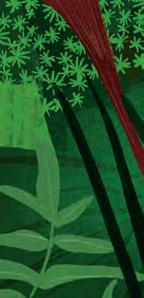
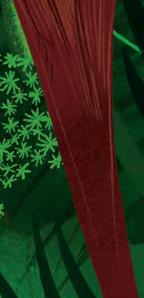

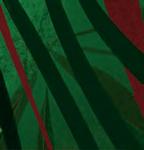
Across these pages, we hear from one editor per decade about their recollections of calling the shots for this magazine. Where else could we start but right at the very beginning . . .
The 1980s: Nigel Billen

Back in 1985, armed with youthful energy and a vague sense of possibility, I helped launch The List, a Glasgow and Edinburgh events guide that somehow still exists, four decades later. At the time, I was living in Edinburgh, fresh from university, trying to break into journalism. The Scotsman had just axed its graduate traineeship, so I was freelancing, borrowing ideas from Blueprint magazine in London, and publishing a ‘Survival Guide’ to the Festival that was really about surviving myself.
The List emerged from a kitchen-table conversation with Sarah Hemming and Robin Hodge in the only habitable corner of Tweeddale Court (the latter’s house). Robin had publishing experience and a building; I had a map, a few contacts and a £5000 parental investment (thank you, end-ofgarden sale). Robin put in three times that, and we were off.
Edinburgh in the mid-80s was no backwater. It was the golden age of the Festival and Fringe, and we felt confident we could shake up arts coverage. The local ‘what’s on’ guides were dull; we wanted something with the energy of Time Out, but with Scottish soul. Covering both cities was

a gamble (Glasgow and Edinburgh weren’t exactly holding hands) but we believed the arts were a shared resource. We even campaigned for a late train so audiences could get home after shows.
We had no hierarchy of culture. Opera, cinema, TV, theatre: all got equal billing. We embraced early tech (Amstrads! IBM clones!) but still laid out pages with scissors and glue at 3am. We debated politics, covers and cartoon strips. I once insisted on putting Bernard Manning on the cover for shock value; Sarah disagreed, rightly.
The magazine gave us access to extraordinary people (Billy Connolly, Annie Lennox, Liz Lochhead) and became a hub for a new kind of journalism. It was always financially precarious, but creatively rich. I met my future wife working there. I introduced Simon, who named the magazine. Sarah’s now theatre editor at the FT. And me? I’m just amazed we did it. n Nigel Billen was co-editor of The List from 1985–1989, and later had editing jobs at Scotland On Sunday, The Observer, The Royal Academy Magazine, and Ace, the Lawn Tennis Association’s publication.

16 October 1985
Billy Connolly
Nigel Billen had to work for months in order to secure an interview with Billy Connolly who had a major antipathy towards the Scottish press. But his persistence won through in the end. Too late for the very first issue, it just scraped through in time to grace the cover of issue number two.
With that, Nigel helped establish The List’s style and tone: intelligent, questioning, discerning and acclaiming real talent but never sycophantic or cynical. It all makes for a great read and offers a real insight into one of the leading characters to have shaped modern Scotland. (Robin Hodge)
1986 October
Georgette Renwick joins as accounts manager and stays 26 years, playing a crucial role in steering the magazine through the financial crises of the early years and preparing the way for more successful times
1987
Gus Macdonald arranges for The List to have extensive advertising airtime on STV in exchange for ad space in the magazine; two young advertising creatives, Tim Robertson and Adrian Jeffrey, come up with a radical new idea for TV ads which go on to win a host of Roses Awards, the industry Oscars; circulation soars

Carol Main has a unique place in The List story. Her byline appears in the very first issue and she continues to pen previews and write reviews of the classical music world today. Here she looks back on the days of delivering copy on a floppy disk and not having Google to research concerts

OFor those who say that contemporary news has never been bleaker, there was plenty to get morose about in 1985. But we’re going to sidestep all that misery to reflect upon the more fun cultural elements of the year in which The List was born
n the big screen, cinemagoers enjoyed the first instalment of the Back To The Future trilogy, Out Of Africa (poignant now, given the recent passing of Robert Redford), A View To A Kill with Roger Moore’s final appearance as 007, Brazil, A Room With A View, My Beautiful Laundrette and a pair of Brat Packer flicks in the shape of The Breakfast Club and St Elmo’s Fire
In TV land, long-running programmes which debuted this year include our very own Taggart, cheeky dating show Blind Date, miserable old EastEnders, its cheerier antipodean bedfellow Neighbours, The Golden Girls and the Cybill Shepherd/Bruce Willis wisecracking detective show, Moonlighting Meanwhile, cameras were allowed to show a debate in the House Of Lords for the first time (not sure if this counts as a TV highlight though) and a mere 1.9 billion worldwide tuned in for Live Aid
In the world of sport, the main highlight up here was the 100th Scottish Cup Final in which Celtic met Dundee United (the magazine’s current editor was in attendance but for reasons of public safety, his age and allegiance shall not be revealed . . . all we’ll say is that the little guy went home happy) while another huge TV audience (18.5 million) stayed up late to see upside-down-spectacles man Dennis Taylor beat Steve ‘Interesting’ Davis on the last black to win snooker’s world championship.
As for those in the public eye who are also 40 years young in 2025, how about this little lot: acting talents such as Keira Knightley, Léa Seydoux, James Norton, Jonathan Groff, Rooney Mara, Kaley Cuoco, Gal Gadot, Phoebe Waller-Bridge, Amanda Seyfried and Anna Kendrick; music people Lana Del Rey, Caroline Polachek, Charlie ‘Busted’ Simpson, Lily Allen, Leona Lewis and Carly Rae Jepsen; also, comedy’s James Acaster, Hasan Minhaj and Michelle Wolf, Euphoria creator Sam Levinson, fitness guru Joe Wicks, former First Minister Humza Yousaf, plus sporty people Lewis Hamilton, Megan Rapinoe, Cristiano Ronaldo, Luka Modrić, Chris Froome and Michael Phelps.
In terms of October births in that hallowed year, we are delighted to share the month with Saltburn director Emerald Fennell, Girls Aloud’s Nicola Roberts, amazing footballer/not-so-great manager Wayne Rooney, Bruno Mars, and the drummer from Hanson. Happy birthday one and all.
“
It
After 40 years writing for The List about classical music, it feels strange to recall that being a journalist was never my intention. It just sort of happened with one thing leading to another, including presenting Radio Forth’s classical music programme where I had interviewed Scottish Opera’s PR manager, who generously recommended me to the magazine’s editors. Being what was then called a music administrator was, however, very much a career intention, and it was my day job running the National Association Of Youth Orchestras that opened doors to radio and writing.
The List was initially published every fortnight, usually with a couple of panels for classical coverage and as many event listings as I could gather. Google and websites didn’t exist, but I loved to know what was going on and to interview artists on the phone about their performances. My handbag was always stuffed with leaflets and brochures picked up at venues and even more came through the post. There were usually around 40 classical events listed per issue between Edinburgh and Glasgow, and even though we don’t publish listings in the same way, the numbers and range of events happening now have undoubtedly grown.
Although today’s digital world wasn’t even imagined, I did have a computer (an Amstrad) and faithfully delivered my copy on its removable disc every two weeks to the office in Tweeddale Court. It was a great way of getting to know colleagues and definitely way more fun and personable than today’s solitary pressing send on an email.
n Carol Main has been The List’s authority on classical music and opera since day one and was recently appointed as the new chair at Scotland’s National Centre For Music.

1989 August
1988 May
Shift to weekly publication for the Edinburgh Festival with a new record 96 pages 1987
First Student Guide is published
Peter Brook creates a new theatre space in Glasgow’s Old Transport Museum (later renamed Tramway) and stages his monumental dramatisation of The Mahabharata
Glasgow Garden Festival transforms a whole stretch of the Clyde





























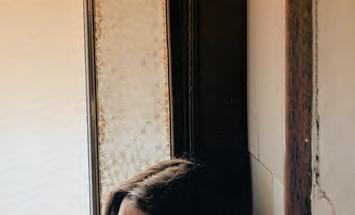






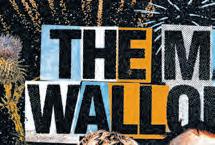


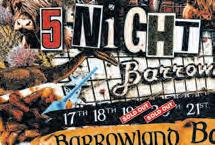


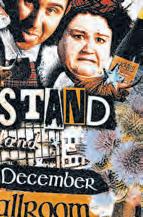










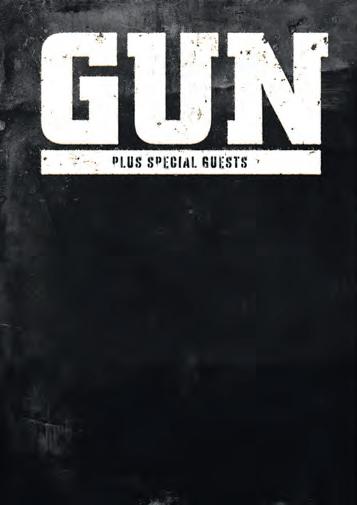

































































































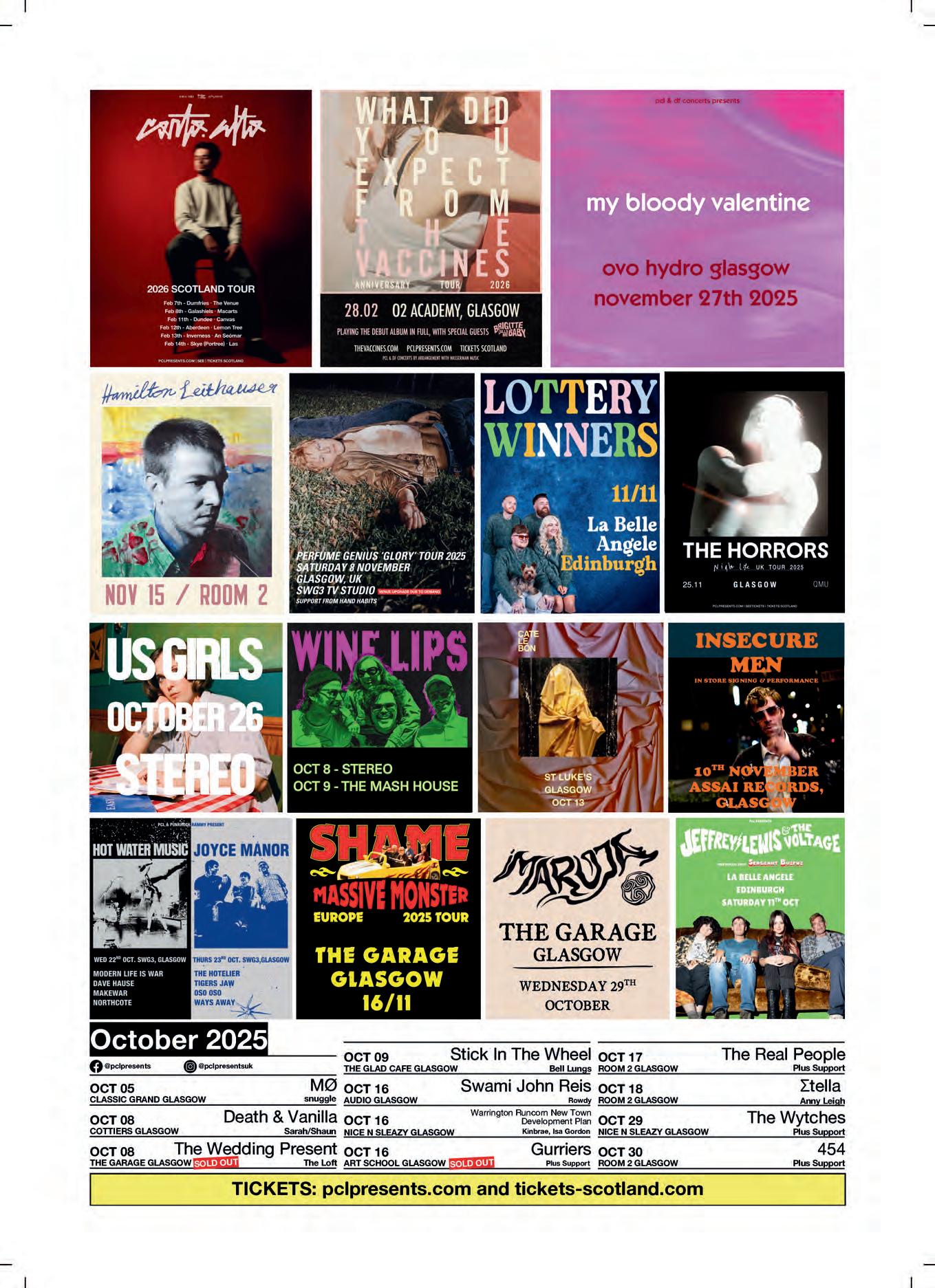

The List to me is more than a magazine. It is a chapter of my life I’ll never forget, a doorway into the worlds of art, music, books, film, theatre . . . and Festival parties. To say I felt like an imposter when I joined its staff in 1994 is an understatement. I confess: I stared at Kylie and Jarvis Cocker while skulking at the back of an Edinburgh International Film Festival party. And I went weak-kneed next to Alan Rickman, dressed in black and wearing that lip curl he perfected as the Sheriff Of Nottingham in Robin Hood: Prince Of Thieves.
One memory for me, though, lingers more than most, and opened up a world I was privileged to write about. It began with a taxi ride in the summer of 1995. The cab driver knew the destination, but not the reason for our trip. I knew the ‘why’ but not the ‘where’. As we drove through London, my stomach churned. I’d managed to secure an interview with the Booker Prize-winning author Salman Rushdie, who had been in hiding following the fatwa issued in 1989 by the then-leader of Iran, Ayatollah Khomeini. The fatwa had condemned the Indian-born British writer to death after the publication of his 1988 novel The Satanic Verses, perceived as blasphemous by some in the Islamic world.
As an assistant editor of The List, I was being taken to meet Rushdie in an anonymous hotel suite somewhere in the capital, accompanied by security and his publicist. Having jumped through the required hoops, including being frisked, I was greeted by a gracious man with a disarming smile. Rushdie was excited about the publication of his fifth book, The Moor’s Last Sigh, and keen to speak to journalists about
it. He also patiently answered questions about his effective imprisonment and exile from India. The hotel suites were tasteful, but his existence was suffocating.
During our interview, Rushdie appeared optimistic he would leave the fear and the fatwa behind, convinced his books would do the speaking for him. It was to take years for him to gradually come out of hiding after Iran’s government declared in 1997 it would no longer enforce the fatwa.
Three decades on, Rushdie’s interviewers now ask him about the 2022 attack on a New York lecture stage during which he was stabbed 15 times and lost his sight in one eye. He had been due to give a talk about freedom of speech. I will always be grateful to this titan of a writer who forgave me for what must have been a faltering interview in intimidating circumstances for us both. I was just one of a line of journalists he trusted with his story that day.
It was a woad-wearing Mel Gibson, rather than Rushdie, who made the cover of that issue in September 1995. My editor Lila Rawlings had interviewed Gibson before the European premiere in Stirling of his blockbuster film Braveheart. But bravery comes in many forms, sometimes far from the red carpet. n Kathleen Morgan was editor of The List from 1995–1998, and went on to edit The Herald Magazine and Sunday Herald Magazine; she is now a group editor at Think, where she looks after titles such as the RPS Journal for the Royal Photographic Society.
26 March 1993
Tom Lappin was one of our lead feature writers in the early 90s and he suggested a cover feature on the resurgence of interest in the classic 60s TV series The Clangers. Tom tracked down Oliver Postgate, creator of the little hooting creatures, and discovered how their world emerged. Julie Burchill and Toby Young, editors of the super-cool voice of the avant-garde, The Modern Review, saw the article and bought the rights to republish it. (Robin Hodge)
1990 January
Glasgow reinvents itself and takes a leading role as European Capital Of Culture


1990 June
Big Day Out is a huge free music festival with stages across Glasgow city centre
1990 October
Twin Peaks on the cover; sales reach a new record
Shirley Manson on the east/west divide: ‘People in Edinburgh don’t like to see anybody being successful, whereas in Glasgow they’re more encouraging’ (1987)
Peter Capaldi on the north/south divide: ‘The road from London to Glasgow means something slightly different if you’re Scottish; there’s another culture at the end, a mythological Glaswegian golden city’ (1993)
Martin Scorsese on his continued failure to get a major gong at the Oscars: ‘There’s no prize that’s going to make me feel better about myself. But if I didn’t get it for those pictures, what am I going to get it for? What more do they want to know?’ (1994)
David Bowie on public adoration: ‘I think you have to decide whether you want people to love you in which case you do things that match the audience’s expectations, or if you want to work in a more creative fashion which is not going to be universally adored’ (1995)
Patti Smith a year later on the very same subject: ‘I’m not like Judy Garland where I need people to tell me they love me so I can exist for another day’ (1996)
Madonna on fame: ‘It can end up becoming a substitute for real love and I think probably in different times of my life it has been’ (1998)
Steve Pemberton on The League Of Gentlemen’s TV debut: ‘It’s Take The High Road meets Texas Chainsaw Massacre’ (1999)
Ford Kiernan on Harry’s Hill’s TV show: ‘I mean I like him and all the rest of it, but there’s a pile of shite if ever I’ve seen it’ (1999)
Lothian And Borders Police press officer DS Ashworth on Irvine Welsh’s debut novel: ‘I can’t speak on behalf of the whole force but all the older Leith cops like me that read Trainspotting were all amazed at his grasp of the 80s drug scene in Edinburgh’ (2001)
Ricky Gervais on the public’s often warped sense of worth: ‘Some people value an actor from Hollyoaks above someone who’s cured cancer: “what’s he ever done? I haven’t seen him dancing with Suggs on Night Fever. Look at his hair: it’s rubbish”’ (2004)
Vernon God Little author DBC Pierre on the secret to life: ‘We’re human beings and we’re fucking stupid. Once we accept that, things look much rosier’ (2006)
Quentin Tarantino on whether he likes his own new film: ‘You don’t ask the chicken to comment on his soup’ (2009)
John Waters reflects on the notorious scene in his 1972 movie Pink Flamingos in which drag icon Divine engaged with some canine faeces: ‘We did it to startle people, to get their attention. It’s probably illegal now’ (2014)
Hannah Gadsby on her groundbreaking show Nanette having to share the Edinburgh Comedy Award in 2017: ‘Absolutely no disrespect to John Robins, but just in that moment with the public discourse around women’s voices and the #MeToo movement, I saw it as quite a conservative decision when an arts festival could really have stepped up’ (2019)
Social-justice campaigner Mikaela Loach on how her very public obsession with all things pink and Barbie clashed with the actors’ union dispute. ‘The Barbie thing seemed a good platform to reach new audiences, until I realised the dilemma with strikers’ (2023)
Gary Oldman on why he’s only ever directed one film, 1997’s Nil By Mouth: ‘I’ve been in films where they promise one thing, and then they cut the budget, and then we haven’t got the days, and then they’re tearing pages out of the script, and they’re changing the story, and then it’s all what I call a “fuck, bollocks and a scramble” at the end of the day’ (2025)

We said what?!
Did we get it right every time? Mainly, but not always . . .
About British football: ‘Wherever you care to look, the professional game in Scotland is healthier and its future prospects brighter than those of the English Football League’ (1985)
About Steve Coogan: ‘He is seriously out of his depth in front of a live audience’ (1990)
About Blur: ‘Leisure is an able debut. Whether Blur are vital enough to last out the year is quite another matter’ (1991)
Overheard in the editorial office about The Sopranos aka the best TV drama of all time: ‘You know, it’s fine’ (1999)
About Sara Pascoe: ‘Sheepish delivery and curious lack of stage presence’ (2011) We’ve interviewed countless artists over these 40 years and many of them have said some pretty interesting and/or odd things. Here’s a
1991
Simon Dessain becomes a director of The List Ltd
1991 December
Cover price raised to £1 for the Christmas double issue and maintained through the new year
1994
Tony Elliott, founder of Time Out, offers to help with crucial introductions to the major film promoters who control vast advertising budgets; Robin Hodge was invited to the annual, boozy long lunch at Time Out’s offices which opened up significant new revenue
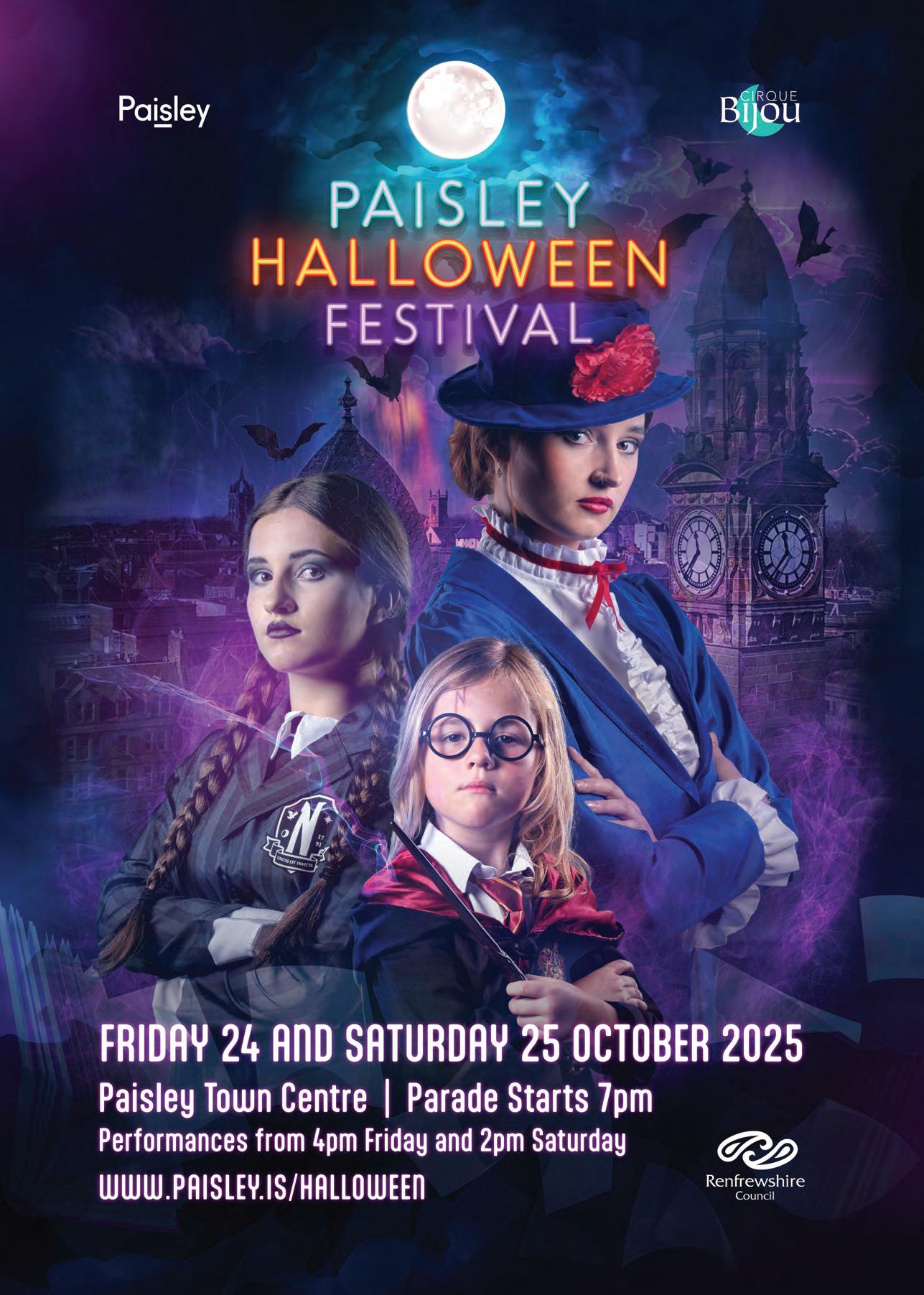





















In 1984, Bruce ‘The Boss’ Springsteen was singing a song with the same name as this headline title. The following year, Robin ‘The OG Boss’ Hodge was working with his editors to come up with The List’s very first cover. Here, we reveal the ten individuals and bands who have appeared most on the front of this mag across 40 years







































1995 February
Editor Lila Rawlings introduces the first I Saw You messages for those who believe in love at first sight; it develops a strong following over the next few years, boosts circulation and is reputed to have led to many marriages
Given those previous statistics, Ewan McGregor never had to wait that long to find his wee face back on our magazine’s cover. This trio fortunately didn’t hold their breath in between their appearances on the front
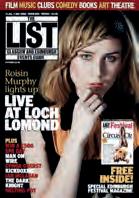
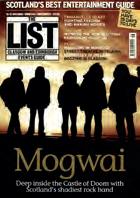
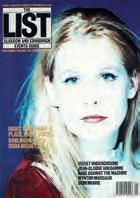
‘Let’s talk about sex’ sang Salt-N-Pepa, but it also feels as though that may have been the introductory statement to many a List editorial meeting down the years. Granted, a lot of these covers were from the February/ Valentine’s issue so feel perfectly justified, but from bananas to bare bums, we unleash our publication’s fruitiest front covers
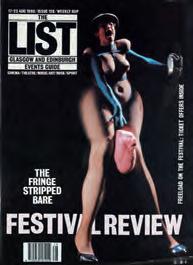
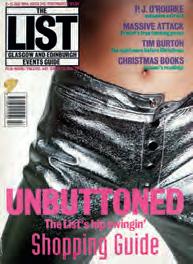








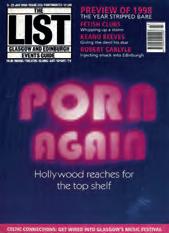
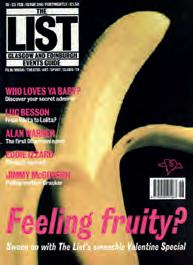
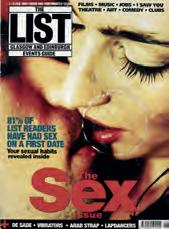
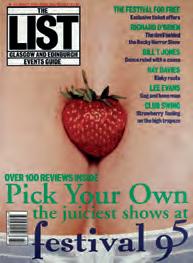

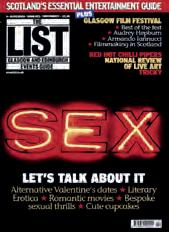
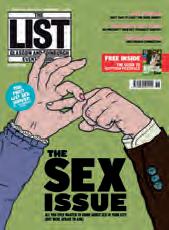
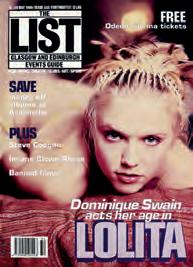
1999 November

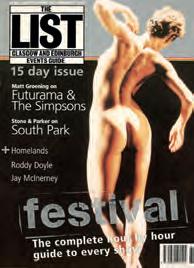
Trainspotting is released in cinemas; we give it unprecedented backing with the front cover and a six-page feature plus a giveaway official film poster with the first 5000 copies





Purchase your 3, 5 and 10-Day Tram City Zone Ticket bundles on the et app and save on your commute.
Activate your ticket before boarding, or you may be charged the onboard fare of £10









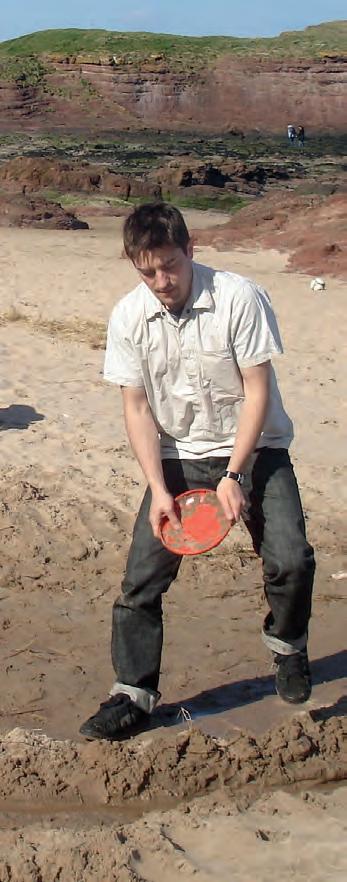

2001 March
First issue to run full colour throughout, with a new design template developed by Stephen Chester
runk on culture, drunk in the local Blackfriars bar: in the early 2000s The List was intoxicated by devolution and an emerging national confidence. We launched the Hot 100 at the end of 2003 and included a 16-year-old Nicola Benedetti; novelists Ali Smith and Andrew O’Hagan; actors Shirley Henderson and Brian Cox (‘something of a plague in Hollywood at the moment’, we said). A swagger was replacing the old cultural cringe: music editor Mark Robertson was bubbling about a new single from a then-unknown Glasgow art-rock band called Franz Ferdinand, so we took a risk and splashed them on the cover in January 2004. By the end of the year, they had topped our Hot 100.
Glasgow’s visual artists were dominating the Turner Prize, delivering a succession of winners and shortlisters. And in 2006 the National Theatre Of Scotland burst onto the scene. Meanwhile, Edinburgh’s festivals were blossoming: The List launched a Festival Guide which boosted newsstand sales, though in the end it would not be enough to stem a drift towards online media. In 2007, we warned of the ‘hyper-speed colonisation of the internet by big business’, knowing full well that our own indie magazine was implicated.
Since the fall of the Berlin Wall, politics had largely taken a back seat in mainstream culture, but now there were rumblings. In June 2005, the team led on the Make Poverty History march which we described, dubiously, as ‘Scotland’s biggest ever demo’. A free wristband covermount delivered, unquestionably, the magazine’s highest-ever sales figure.
The question of Scottish independence was emerging. In my first month as editor in 2003, we received a letter asking ‘when are you going to devote an issue to the new parliament in Holyrood? Scotland is about to get a building that will redefine democracy for the 21st century.’ In my last issue, in 2007, the debate was hotting up: a piece by our publisher Robin Hodge made an emotional case for the Union. But architect Malcolm Fraser expressed the desire for something altogether different: ‘More dissidence; less self-obsession and more care for our fellow beings; a wee revolution.’ Shortly afterwards, Alex Salmond was elected First Minister. n Nick Barley was editor of The List from 2003–2007, and went on to be director of the Edinburgh International Book Festival; he is now director of the National Poetry Centre in Leeds.
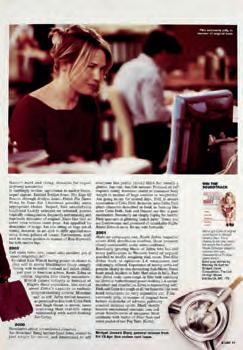
29 March 2001
This was one of those rare issues when, with 48 hours to deadline, we had nothing for the cover other than a film poster image (which we never liked using as it looked like an advert) and some bland quotes released by the publicists. By chance, that evening I attended a press reception in Glasgow and saw Hannah McGill; I explained the problem and asked her to think about an angle that might work to cover the film’s release. By 9am the next day, Hannah presented her brilliant pastiche of the diary, chronicling Bridget’s heartfelt response to the filming of her story. The issue went on to sell out in many shops. (Robin Hodge)
We publish The Orange Guide To Best Scottish Films of all time (winner Trainspotting) followed in successive years by similar guides to Best Scottish Bands (winner Belle & Sebastian) and Best Scottish Books (winner Sunset Song)
2003 December
Our first Hot 100 is launched by editor Nick Barley, with film director David Mackenzie at number one
First Festival Guide is published as conceived by Mandy Mungall and Nick Barley
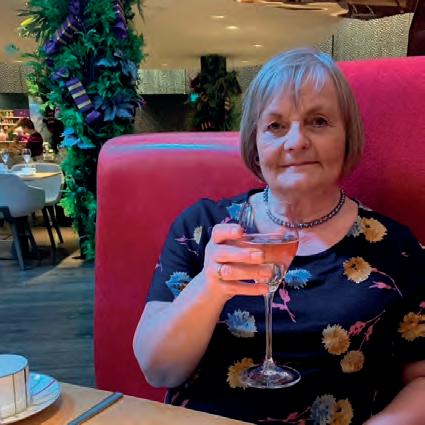
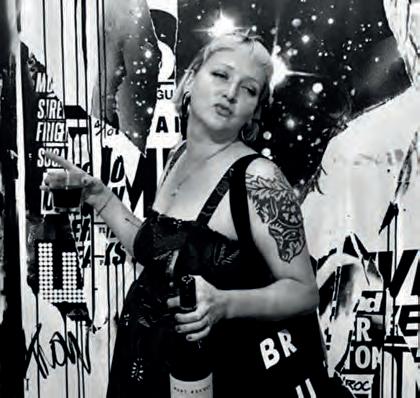

Any organisation that exists for 40 years will experience loss along the way. Robin Hodge pays heartfelt tribute to those who are sadly no longer with us
Beatrice Colin was a radio dramatist, creative writing lecturer and highly acclaimed novelist after her stint at The List in the early 90s where she wrote about theatre and was editor of the visual art and kids pages. By the time she got to us, Beatrice had shown her eclecticism by starting her own clothing design business and had been in various bands on the thriving Glasgow music scene. She moved to Brooklyn and then back to Scotland ahead of writing her most acclaimed work, The Luminous Life Of Lilly Aphrodite
Georgette Renwick was looking forward to joining us for the 40th anniversary celebrations. She enjoyed parties and would often be among the last to leave the dance floor. Georgie had started work at The List in 1986 and helped steer the course that enabled us to become viable and eventually profitable. Through extremely challenging moments, Georgette proved she was made of determined stock, remained calm at all times and found a way out of each crisis.
Jeanette Lennartsson joined in 1994 as designer and brought an international aesthetic and a sense of elegance to the covers and page layouts that she produced for us. She brightened up the office with her irrepressible smile and was much missed when she left in 1998 to take up a role on the teaching staff at Edinburgh College Of Art.
Jess Barrow had been president of the Students Union at Edinburgh College Of Art where she campaigned in support of the striking miners. She joined us in May 1987 and quickly rose to become advertising manager. She played a vital role in keeping the ship afloat in the precarious early years, pulling in money for advertising while ensuring that socialist principles were upheld as best she could. She left in May 1990 to take on a campaigning role with Age Concern Scotland.
Jo Kennedy was the one grown-up in the team that launched The List back in 1985 (or so it often felt) and had worked previously with Nigel Billen as typesetter on the lifestyle magazine Scottish Portrait. Jo had the most sophisticated machine in the office and she helped develop a system that would interpret the star codes (*1, *2 etc) that the editorial staff had to put into their Amstrad-generated copy to indicate a change to bold, italic, roman type. Every article had to go through Jo’s hands but
2004 August
A doubled-up package with a Festival and nonFestival magazine
2007
she would never lose her cool or her keen proofreading eye, only leaving The List once it was well established in 1997.
John Higgins loved a party and would liven up any situation he found himself in. He took over responsibility from Jess Barrow for the crucial role of generating advertising revenue and worked here until October 1994 when he left to travel abroad. It was John who persuaded us that there should be a party to mark the opening of the Edinburgh Festival and he organised a gathering at the Traverse. This was a great success and led to many legendary nights over the following years.
Lucy Munro joined us in May 2001 and quickly made her mark. She maintained a high quality of design across all our publications and there was always something elegant and contemporary about her work. Lucy would rise to whatever challenge she was given and came up with new ideas and concepts time and time again. She was always a delight to work with: kind and supportive to those around her and often finding ways to ease tensions through a well-judged joke and that wonderful laugh.
Norman Chalmers was both a talented musician on the concertina and a passionate champion of traditional music. He was part of the original team that launched the magazine back in 1985 as our folk and world editor. He would travel regularly to the Western Isles and phone in his listings and copy, often very late in the day. He also performed in Jock Tamson’s Bairns, the major production by Communicado which marked the opening of Glasgow’s year as European Capital Of Culture in 1990.
Sue Wilson wrote for The List over many years, mainly on folk music, and was passionate about the importance of recognising and nurturing new talent. Sue would attend multiple local festivals each year and would nearly always find someone to get excited about.
With a delightful half-smile on her face, she lit up our office on the many occasions she would drop in with her copy or to propose an article. In honour of her work, the Sue Wilson New Writer Award has been established and is presented each year at the Scots Trad Music gathering.
n See more of these memories at list.co.uk
A major investment in digital operations as we take on five key members of the multiple award-winning team at Scotsman.com
2008
Simon Dessain takes over leadership of the digital team attracting investment from Scottish Enterprise and others
2008
New website launched with searchable listings and articles

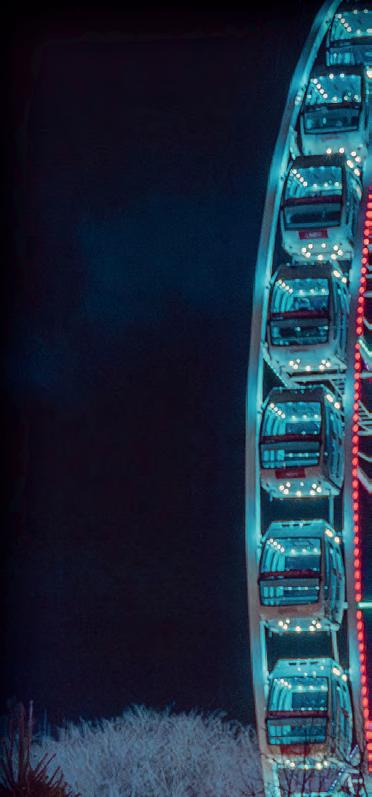


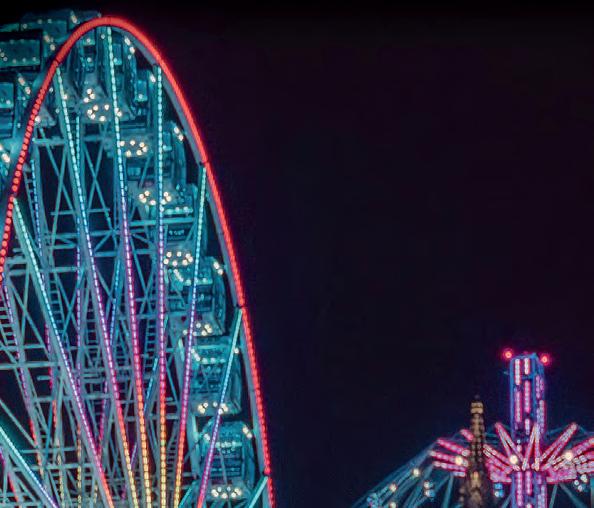

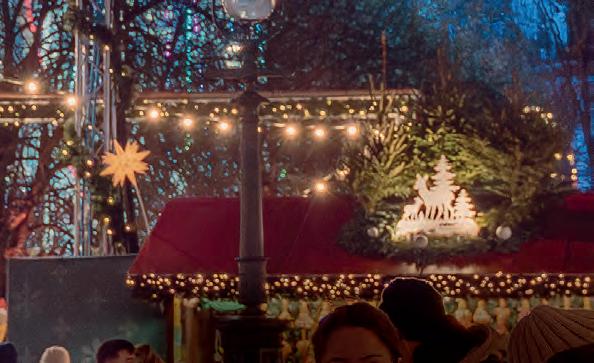

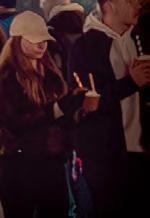









The List has always been a publication that erred towards the sweary, which in the light of creeping censoriousness in public life remains a badge of fucking honour. Had we been an asterisk-addled magazine, this new-year Q&A with Scotland’s master of the profane, Mr Francis Martin Patrick Boyle, would have made for an eye-befuddling and mind-adjusting experience. In a previous decade the closest we came to interviewing him was via fax when he sent over a hilariously libellous cartoon he hoped we would use for a comedy special (but probably knew deep in his heart we never could). In 2012, we offered him a platform to let rip with utter abandon and boy did he use it. (Brian Donaldson)
While The List in the 2010s was dedicated to year-round coverage of arts and culture in Scotland and beyond, I always felt that Edinburgh Festival season was when the team truly had a chance to shine. It was an exhilarating feeling to have so much happening right on our doorstep, with a seemingly endless array of options to explore when it came to recommending the very best things for our audience to experience.
When planning for our three annual August issues, the first thing we looked out for was great pictures. Then, and now, competition for eyeballs was fierce and having truly eye-catching covers for print editions was essential. So in 2017, when we received attention-grabbing images from a promoter for the then littleknown clown Natalie Palamides (wearing a look of sheer disgust as egg yolk ran down her face), we all sat up a little straighter.
It was her Fringe debut and nobody on the team had yet seen her perform. But there was something alluring about her work, which came with the endorsement of the truly surreal Doctor Brown, who had recently won the Edinburgh Comedy Award for Best Show. So I had a chat with Natalie, which turned into an engaging interview. Based on that, as well as the striking photos and gut instinct, we took a chance and put her on the cover for the very first edition that August. It was an excellent choice: her show, Laid, was incredible, sold out its entire Fringe run and, by the end of the month, she had won the Edinburgh Comedy Award for Best Newcomer.
It remains my favourite example of how my brilliant colleagues and I at The List loved uncovering new talent and giving it a platform, and how joyous that buzz of discovery can be, not just for us but for our readers too. The Edinburgh Festival was always my favourite time of year as editor, and working with the extraordinary team from that period is still one of my fondest professional memories.
n Yasmin Sulaiman was editor of The List from 2014–2018, and later focused on building the creative and tech ecosystems in Scotland and the UK, working with freelancers, founders, and governments; she also just finished up a stint as a Trustee at the Edinburgh International Festival.
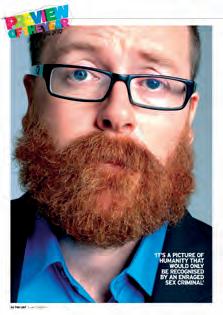

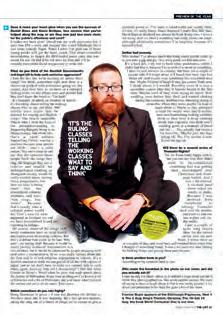
First Guide To Scotland’s Festivals is published in association with Creative Scotland and VisitScotland
2012
Publication of We Create, a survey, summary and celebration of the creative arts across Scotland

D1985 may not be one of those years that archivists bang on about being the best 12 months of music in all of the world’s history. But as this playlist proves, it has more than a few bangers to its name. So dip in and enjoy the likes of Talking Heads, Miles Davis, Kate Bush, Sade, Tom Waits, Prince, and our very own Jesus And Mary Chain . . .
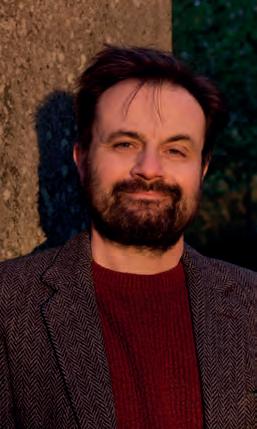
irectors of Edinburgh’s festivals are by their very nature a rare breed, but we had three future chiefs within our ranks: Nick Barley became Edinburgh International Book Festival boss, Hannah McGill was leader of Edinburgh International Film Festival, and Simon Gage headed the Edinburgh International Science Festival for almost 30 years.
Those who crossed the divide to become performers themselves include stand-up comic Siân Bevan, and synth-pop queen Lauren Mayberry as Chvrches leader and now solo star. Susanna Beaumont took her vital experience as the mag’s art editor to open up the Doggerfisher gallery and launch Design Exhibition Scotland while Avril Mair became editor of the ultra-cool i-D, and those equally fashionable bods at The Face lured Craig McLean into the role of deputy editor before he went on to ghostwrite Phil Collins’ bestselling memoir.
Early-00s editor Mark Fisher is one of the nation’s most esteemed theatre critics and finally turned his lifelong love of Swindon rock outfit XTC into a book. Mid-90s editor Lila Rawlings is now a successful film producer and won a BAFTA in 2021 for Sitting In Limbo while one of the magazine’s founders, Sarah Hemming, is currently theatre critic at the Financial Times. Another ex-ed Alan Morrison is Creative Scotland’s head of music while the magazine’s second editor Alice Bain has written extensively about art and dance.
Back in the world of film, former editor Gail Tolley is head of documentary development at Minnow Films and her predecessor in the big chair, Jonny Ensall, keeps the decks spinning for the pop-up
Simon Dessain becomes CEO
This magazine has long had a reputation for helping young journalists find their voice and later sending them off into the world as better writers and maybe even better people. This column could have filled several pages easily, so here’s a mere snapshot of those who loved and left us
Detour Discotheque. Aaron Hicklin headed to the US where he was editor-in-chief of LGBT magazine Out, Lucy Ash is a multiple awardwinning presenter of radio and TV documentaries, and Mark Robertson worked in communications at Edinburgh International Festival and now at National Galleries Of Scotland, while also joining the board at MacArts near his Borders home.
There are many authors with The List on their CV such as Doug Johnstone, Kirsty Logan, Alan Taylor, Claire Prentice, Miranda France, Alice Thompson, Kirstin Innes, Allan Radcliffe, Lynsey May, Arusa Qureshi and Charlotte Runcie, while Rob Fraser has gone on to a successful writing career in TV and theatre. His List contemporary Peter Ross has straddled journalism and book writing with distinction, claiming multiple wins at the Scottish Press Awards and is an Orwell Fellow while also publishing four highly acclaimed non-fiction books.
Continuing to have writing in their back-pocket, some moved into an altogether different field: Rodger Evans pens short stories and is a parliamentary speechwriter at Holyrood, Eddie Gibb moved into PR communications at thinktank Demos and is now spreading the word at Future Of London, and Andrew Burnet is interpretation manager at Historic Environment Scotland. Meanwhile, Jonathan Trew moved into the walking tours game covering the likes of Glasgow’s music history alongside one of the mag’s current veterans Fiona Shepherd (he was dubbed by Hank from Kentucky as ‘the guide with 1000 stories’), and Ellie Carr became a student of modern pain science, founding The Pilates Hub where she cured the lower back issues of at least one List journalist.





























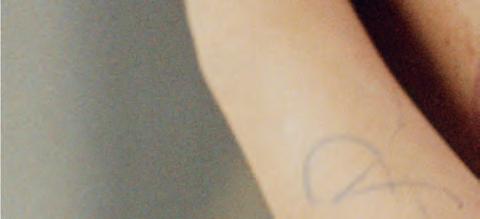
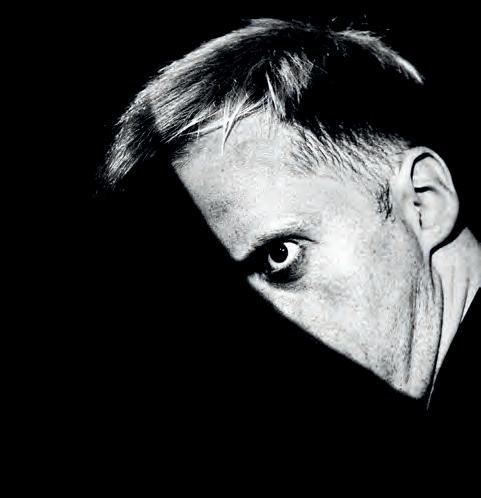

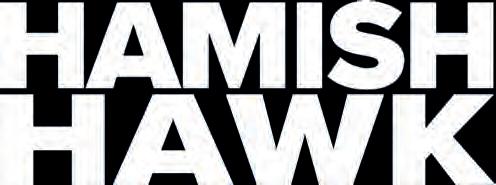



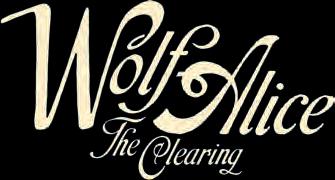







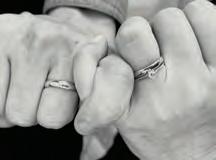







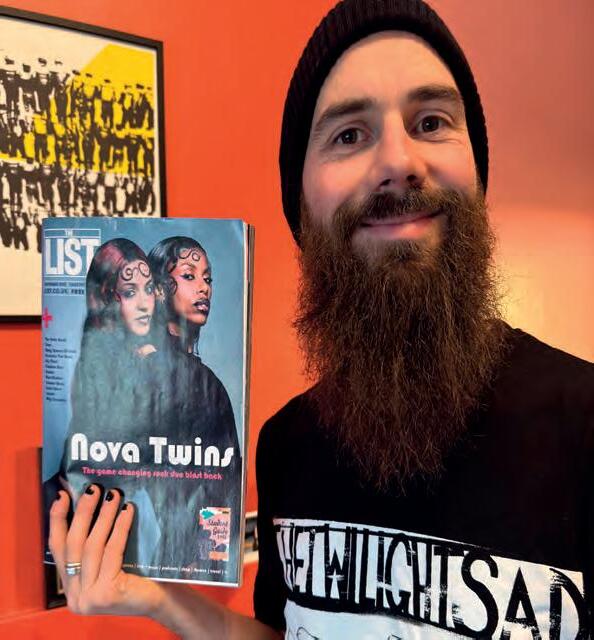
This is a mag that’s existed in my life in some form or another since I was born
‘WOnline news editor and magazine columnist Kevin Fullerton looks back on his path from being a keen consumer of The List to joining its ranks in troubled times
elcome to The List Hot 100 Party 2022!’ I shouted to the packed crowd at Edinburgh’s Virgin Hotel. That night, we celebrated the dynamic face of Scottish culture with performances from Jay Lafferty, Marjolein Robertson, Alan Bissett, Bee Asha and Rebecca Vasmant. For my part, I introduced the evening (which took a bit of dutch courage), approached my comedy hero Rab Florence (which took a little more dutch courage), and blitzed the free bar for as much of the courageous stuff as I could stomach. It was the kind of rammy that would have seemed almost unthinkable a year before, when it looked like the magazine itself was about to be sent ungraciously to the big printing press in the sky.
I joined The List during the pandemic’s height: an arts and culture addict writing for an arts and culture magazine when there was very little arts and culture to be found in Scotland. Shuttered shops had plunged a knife into the print edition. The List had become an online-only proposition. As I logged into meetings (having never met any of my coworkers face-to-face), an existential malaise hung in the air. Was a magazine that had endured through thick and thin about to become another covid casualty?
Then came the crowdfunding, a wellspring of support and the formation of a new company. By March 2022, we were back in print with future rap royalty Bemz gracing our cover and we were one of the few print magazines thriving.
The last issue before covid lockdown forces suspension of publication for two years
We’ve since found ourselves managing the expectations of a publication that both looks to the future of art and culture in Scotland while being a standard bearer for the past four decades of this country’s cultural past. We’re both a wellspring of information about the here-and-now and a legacy publication: striking that balance is a constant reminder that Scotland is home to an almost infinite number of creative niches thriving in their own delightful way.
The indie fanboy in me has revelled in meeting some genuine heroes from Scottish music, from Aidan Moffat to Siobhan Wilson, and James Graham of The Twilight Sad to Young Fathers’ Alloysious Massaquoi. And the past four years has been a process of cutting my teeth on the precise art of writing for print. I had grown accustomed to the sprawling word counts of online media, penning essays and thinkpieces uncorralled by the sturdy judiciousness of an expert editor. I found myself trimming words surgically, straining to meet a word count and learning the valuable lesson of ‘always kill your darlings’. This is a mag that’s existed in my life in some form or another since I was born, and now sits firmly at its centre.
We’ve made radical changes since the relaunch (ditching listings from the print edition, making the design sleeker and less crowded), but there’s one thing that we’ll maintain for the next 40 years of this publication’s life: a fullthroated, unabashed love of Scottish arts, from the smallest exhibition to the largest stadium act.
Magazine reborn and rebooted with a monthly publication schedule and listings shifted online
2023
Expand to Australia with the first guide to the Adelaide festivals
Want a bit of fun? Want to win two tickets to our Hot 100 party? Want both things? Then have a gander at the questions below and either enter online (answers to list.co.uk/competitions) or send a carrier-pigeon stamped-addressed card with answers to ‘The List in Scotland Edinburgh’



At the 2018 Edinburgh Comedy Awards, whose speech included this quip: ‘I remember being reviewed back then by The List . . . are they still going?’
• Johnny Vegas
• Steve Coogan
• Doug Stanhope
• Daniel Kitson
Who won the Spirit Of The Fringe prize at this year’s List Festival Awards?
• Cat Power
• Sacred Paws
• Pussy Riot
• Edinburgh’s landlording community
Which member of the core Sopranos cast have we not interviewed?
• Vincent Pastore (Sal ‘Big Pussy’ Bonpensiero)
• Steven R Schirripa (Robert ‘Bobby Bacala’ Baccalieri Jr)
• Vincent Curatola (John ‘Johnny Sack’ Sacrimoni)
• Michael Imperioli (Christopher ‘No Middle Nickname’ Moltisanti)
In an early Student Guide, the health section featured a picture of a golden-age Hollywood actress accompanied by this caption: ‘A picture of health. Dead now unfortunately . . . ’ Who was said late star?
• Ingrid Bergman
• Marilyn Monroe
• Ginger Rogers
• Rita Hayworth
The List CEO Sheri Friers is life partner of which iconic drummer?
• Idles’ Jon Beavis
• Idlewild’s Colin Newton
• Billy Idol’s 1990s sticks man Mark Schulman
• Animal
2024 August
First List Festival Awards
In the first issue of a year during the 2000s, the mag wondered whether its cover star was ‘The new Ewan McGregor?’ Who was being handed this passport to glory/poisoned chalice?
• Conor McGregor
• Ewan McGregor
• Callum McGregor
• James McAvoy
Which one of these is our most regrettable coverline?
• Why won’t Angelina Jolie keep a man?
• Would you date this man? Win a one-to-one with Russell Brand!
• Sharon Stone: did she open her legs for Bill Murray?
• All of the above, and equally
Who is the only person to have topped our Hot 100 twice?
• Peter Capaldi
• Anna Meredith
• Richard Gadd
• Armando Iannucci
During 2003, our letters page (yes, we once had such a thing), featured this complaint: ‘On opening this edition of The List, I was shocked and appalled by the image that l was first greeted with’. A picture of whom had caused such consternation?
• George Bush
• The List deputy editor
• Billy Connolly
• Morrissey
Which behemoth-like cultural figure once appeared on our cover alongside the line: ‘Dickheid or deity?’
• Dick Francis
• Moby Dick
• Dick Van Dyke
• Irvine Welsh
2025 October
A special issue to mark 40 years of The List




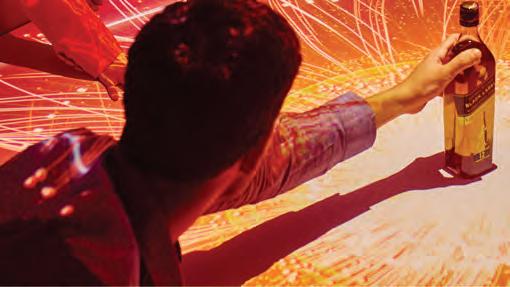
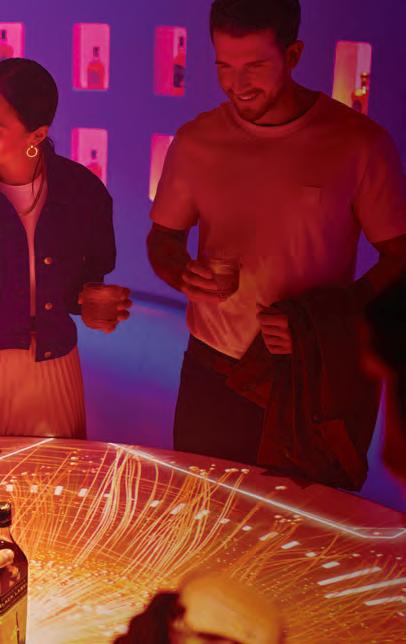

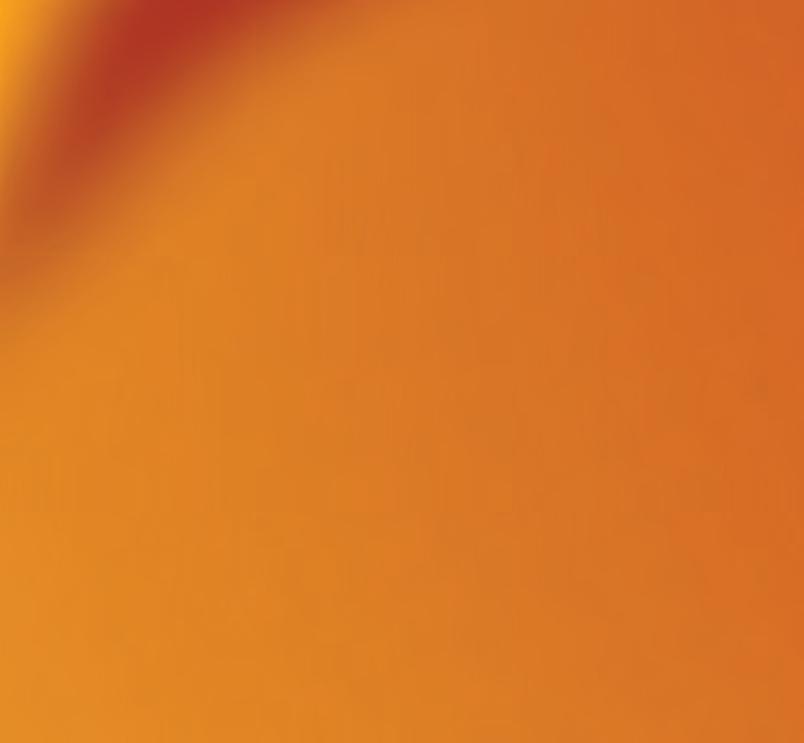

Sake lovers rejoice: the skilled team behind Yamato have opened a new izakaya, a relative rarity in Edinburgh. Chef-owner Max Wang’s all-day Japanese-style bar and casual restaurant is ‘Japandi’ minimal with a relaxed vibe. Start your morning right with a Japanese breakfast: think grilled fish, miso soup, steamed rice and pickles. Or try a twist on the traditional full brekkie, with miso-glazed bacon, onsen eggs and shimeji mushrooms. Later on, feast on bar snacks: hand-rolled sushi, bowls of ramen or udon, yakitori skewers and kakigori (topped shaved ice), with that sake, the house IPA or ceremonial-grade matcha. Kanpai! (Ailsa Sheldon) n 151–155 Morrison Street, Edinburgh, instagram.com/nishiki_edinburgh



















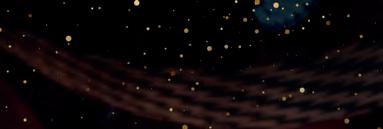

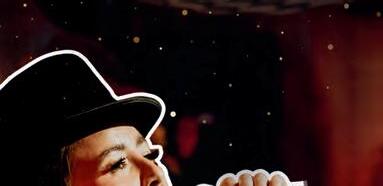


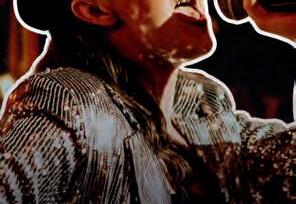























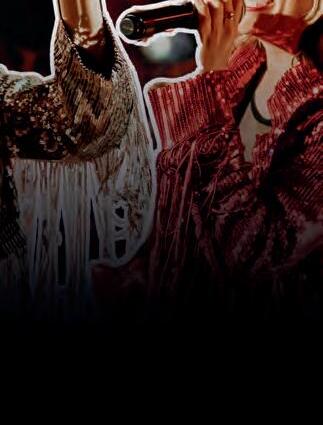





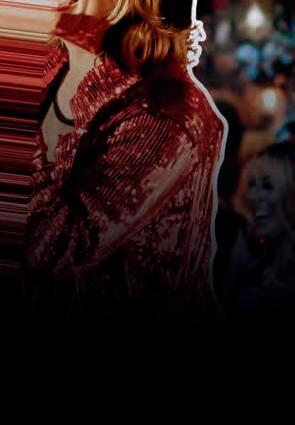
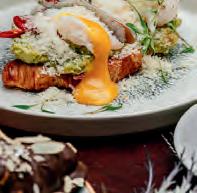














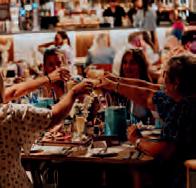

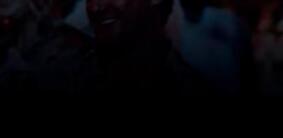






Smelly sauerkraut is probably the biggest barrier. Or slimy kimchi. Or exploding bottles. Truth is, the British never really took to fermentation, apart from, well, beer and wine and cider and cheese (and tea and coffee and chocolate). Oh, and sourdough. Shop-bought booze or yoghurt may technically qualify as fermentation, but nurturing jars and bottles of stuff that fizz, or growing mould in your fridge or kitchen cupboards, is seen as slightly eccentric, potentially unpatriotic and definitely dangerous.
On the other hand, a wave of open-minded home cooks, chefs, gardeners, travellers and tipplers have been eagerly uncovering and exploring the exotic worlds of microbes, bacteria and yeasts, emphasising their capacity to conjure up unusual but exciting tastes, flavours and health-enhancing properties in food and drink. The awakening of knowledge about gut health has certainly been a companion on this journey, along with deeper interest in the base flavours of Asian cuisines, the exploration of non-meat foods, and a rise in interest in non and low-alcohol drinks.
One of the travellers on that journey over the last decade is Robin Sherriff (pictured), a graduate of the masters programme in gastronomy at Queen Margaret University in Edinburgh. He set off to East Asia to write a dissertation about Japanese whisky and returned to set up a business making koji, the base for soy sauce, miso and other ferments. His evangelism for Asian cultures and the wider possibilities of lactic, acetic, yeast and mould-based fermentation led to him creating the nationwide Fermenters Guild to support food and drink professionals working in this way, offering solidarity, learning opportunities and practical support on legislation and food safety.
Sherriff has now, along with various specialist collaborators, pooled his knowledge and infectious curiosity for the subject in a book, The Science Of Fermentation. Strikingly produced with step-by-step photography, it has recipes for more than 30 essential techniques plus some accessible beginners’ tips and guidelines. Despite the title, Sherriff is keen to emphasise that you don’t need to go
Once regarded as foreign and mildly frightening, fermented food and drink is increasingly part of the mindful home cook’s repertoire. Donald Reid leafs through two books with local connections that make this mysterious yet magical world a bit more approachable
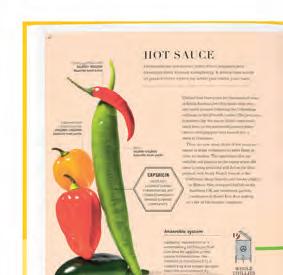
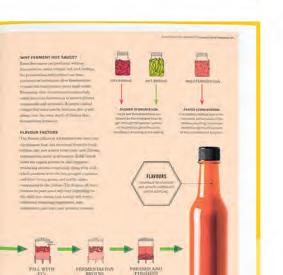

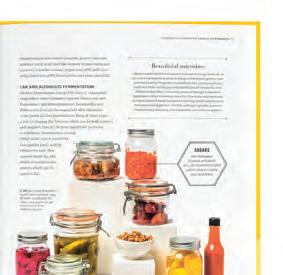
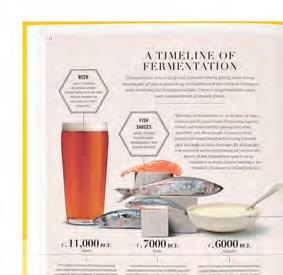

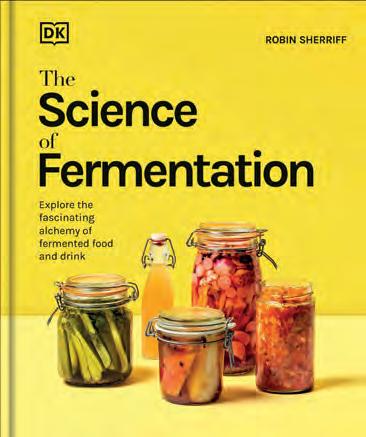
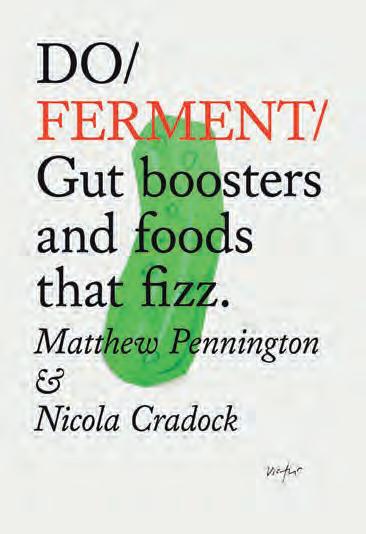
hard on the science. ‘Lead with the tasty’ is one of his mantras, confident that a memorable experience with deep flavour and deliciousness is the most positive entry point of all.
While the book delves deep into microbiological detail to both demystify the subject and educate readers, for Sherriff that’s not the only way to get into fermentation. ‘Take kimchi, with all the different cultural narratives in Korea, all the layers of family stories and nuanced traditional recipes,’ he says. ‘But when you dig into it, it’s got solid chemistry and biology behind it. On the other hand, I grew up in Livi eating fish-finger sandwiches and drinking Buckfast. I don’t have a cultural knowledge of fermentation; science is my way to understand it. But whether you see sauerkraut as a progression of different lactobacillus species or as an old family recipe, you pretty much end up with the same thing. My advice is first to ferment for fun; the specifics and nerdy expertise will no doubt come later.’
Also just published within the well-respected Do series of books is Do Ferment by Matthew Pennington and Nicola Cradock, former proprietors of The Ethicurean restaurant in Somerset but now residents of Midlothian. Offering a practical and patiently explained route into ‘gut boosters and foods that fizz’, they provide instructions for making sauerkrauts, condiments, sauces and wild sodas part of your kitchen repertoire, with plenty of tips, ideas and troubleshooting guidance. They subscribe to the Do Manifesto, useful encouragement to anyone feeling brave enough to dabble in a bit of microbe farming: ‘Start where you are. But start.’
The Science Of Fermentation is published by DK on Thursday 9 October; Do Ferment is out now published by Do Books.
Jo Laidlaw is eating and a-drinking this month, with a pile of new openings to explore
It’s all change in Stuart Ralston’s empire. Hot on the news of Aizle’s closure, the chef has announced not one, but two new spots on Broughton Street. Vinette will be a Parisianstyle bistro, while downstairs is Vivien, an intimate cocktail bar. Both are due to open soon but if you can’t wait for a cocktail, Edinburgh Cocktail Week is back (Friday 3–Sunday 12 October). As always, a wristband gets you discounted signature cocktails in over 100 bars: it’s a great way to find your new favourite or to reacquaint yourself with an old haunt. If your cravings run more towards curry and a pint though, word on the street (via a huge banner) is that Khushi’s is making a return to the capital. Keep your eyes peeled on Forrest Road.
Glasgow is all about the shiny new openings too. Grosso on Duke Street looks fun: it’s a laid-back glossy new spot serving pizza, pasta and brunch. Sticking with the Italian theme, say hiya to Ingram Street’s Malocchio, where they’ve got small plates, fresh pasta and wee pizzette in a big space with more than enough room for groups.
But the big Glasgow news? It’s all about us. This month, we’re thrilled to welcome Eat & Drink 365 Glasgow to the world, our first food and drink guide solely dedicated to the city. It’s packed full of handy TipLists, which means recommendations from breakfast to last orders, with everything in-between, and is available from Monday 20 October, wherever you get your List


Our TipLists suggest the places worth knowing about in different themes, categories and locations. While you may be happily ignoring impending signs of Christmas, the party organiser in your life is already digging out the spreadsheet to plan December. So this month, we answer the perennial question: where’s good for groups?

DISHOOM
6–11 Nelson Mandela Place, dishoom.com
The Bombay cuisine specialist opened in the old Stock Exchange this summer and has been mobbed since with diners enjoying inventive dishes from breakfast to dinner. Feast menus for ten or more are available, offering Dishoom faves for the whole group to share, whatever the dietary requirements. Also in Edinburgh.
KA PAO
26 Vinicombe Street, ka-pao.com
Ox And Finch and Margo’s sister venue sits in the splendid surrounds of the A-listed Botanic Gardens Garage. Food is informal small plates offering vibrant and exciting regional South-east Asian aromas and avours. A handy sharing menu for four or more diners does the painful task of choosing for you. Second branch in Edinburgh.
PICCOLO MONDO
344 Argyle Street, piccolomondo.co.uk
This restaurant has lots of old-school charm, lovely décor and top-quality Italian food. Menus include the one-stop ‘celebration’, offering three courses of food plus drinks with plenty for anyone in a group to enjoy. Those with speci c diets can mix and match across set menus.
ROYÂ
59 Elmbank Street, royarestaurant.co.uk
Persian cuisine is celebrated at this attractive tenement opposite the King’s Theatre. There’s a luxe feel to the décor and food; dishes come tapas-style, from mezze and kebabs to shawarma and sourdough pide. Banquet menus for ve to 20 people allow plenty of choice, with extensive vegan and GF options.
SAPPORO TEPPANYAKI
2–6 Ingram Street, sapporoglasgow.co.uk
This Merchant City restaurant is the only teppanyaki (hot-plate cooking) specialist in town. Diners sit around teppan tables (standard tables are available) while chefs slice, dice, fry and ame their way through various tasting menus of Japanese favourites. (Jay Thundercliffe)
1a Market Street, brewhemia.co.uk
One of the biggest bars in town, Brewhemia offers private spaces and big tables that work for everything from parties to casual after-work drinks that have grown to include the whole department. As well as exible menus, there’s a range of themed entertainment.
BABA
130 George Street, baba.restaurant
A great spot for big groups, with mezze plates you can’t stop picking at as well as feasting dishes from the grill, including an entire seared sea bream dripping with avour, or a rose-pink côte de boeuf. Dishes are laden with spices from the Levant and can be washed down with tasty craft cocktails.
BADGER & CO
32 Castle Street, badgerandco.com
A charming blend of stately home library and afterwork cocktail lounge themed around The Wind In The Willows, this is a solid central choice for groups. Cocktails aren’t just pretty; the signature Hot Toad Time Machine is balanced while the food is re ned pub fare with crowd-pleasers like seared scallops and peppery steak pie.
FAZENDA
102 George Street, fazenda.co.uk
Anyone who suffers from bill-splitting stress will appreciate Fazenda’s churrasco experience, where a xed price gets you endless grilled meat alongside unlimited salads and sides. Although pricey, it does work out as good value for special occasions. They also have a private dining room seating ten.
KAHANI INDIAN STREET FOOD
10 Antigua Street, kahanirestaurant.co.uk
This classic curry house quali es as an Edinburgh institution, but the avours still pop at Kahani. Party menus riff on great-value banquet options: it’s a set price, plus BYOB also makes a real difference when it comes to the bill. A crowd-pleaser for a casual night. (Ailsa Sheldon, Jo Laidlaw, Suzy Pope)
Sean Fennelly, The Balvenie’s UK Brand Ambassador, shares his top spots for smaller, cosier group gatherings

Brunswick Street, Glasgow, theabsentear.com
Glasgow’s nest cocktail bar is also one of its most discreet. If your group’s larger than 20, you’ll want to take this subterranean speakeasy as an exclusive hire. Once you’re in, guarding against gatecrashers couldn’t be easier thanks to The Ear’s infamous password policy and hidden door.
1–3 Angle Park Terrace, Edinburgh, athleticarms.co.uk
Affectionately known as The Diggers, this bar might have the broadest (and certainly the best-priced) malt whisky selection in the capital. There are few better places to hunker down with a dram than its lost-to-time, wood-panelled snug. Cosy for 15–25 people.
24 St Vincent Place, Glasgow, thecitizenglasgow.co.uk
Upstairs at The Citizen you’ll nd The Editor’s Suite, an atmospheric private room for up to 50. This very space housed the editorial team during the building’s former incarnation as HQ of The Evening Citizen; it’s easy to imagine them sharing gossip and trading tips as they gazed down onto the city centre from the stunning oor-to-ceiling windows.
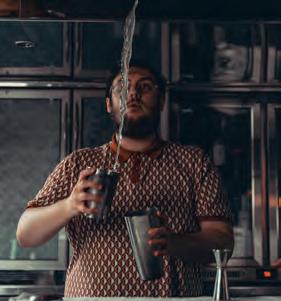
IN PARTNERSHIP WITH

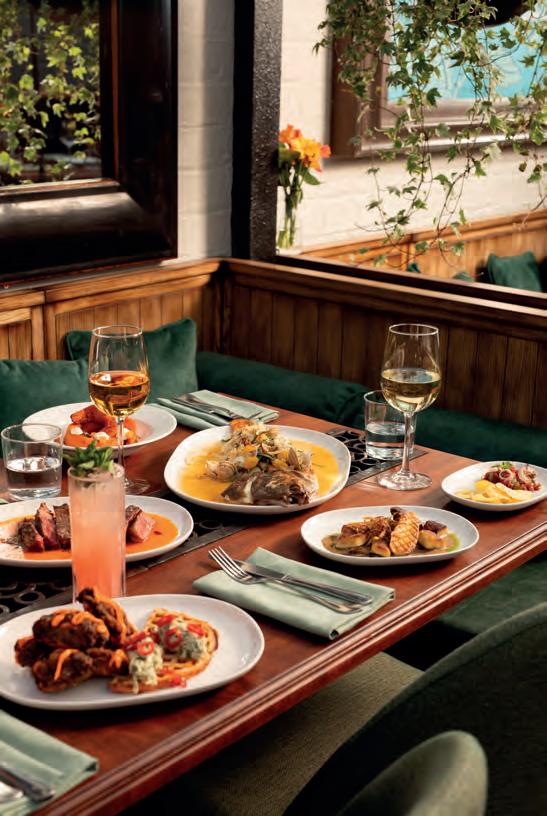
When Ubiquitous Chip was bought over by the Metropolitan Pub Company (part of Greene King) in 2022, many predicted its demise. They’ve been proven wrong. A recent £1.2m restoration stays true to the old character of a unique building, with subtle and tasteful changes to the décor and artwork. And yes, menus have been modernised and streamlined but, at its core, Glasgow’s most storied restaurant still offers seasonal produce from across Scotland in a unique setting.
Opened by Ronnie Clydesdale in 1971, The Chip ushered in a reinvention of Ashton Lane and Scottish cuisine itself. Today, dishes such as cranachan (around since the start) have not so much been shown the door as reimagined, while house-made haggis is still on the brasserie menu. Diners will be happy that the main courtyard restaurant feels almost exactly as it did before, and Alasdair Gray’s murals also haven’t gone anywhere. Neither have the little touches and attentive service that make a place special, like toasted pinhead oatmeal on soda bread, or waiting staff remembering whether you’re drinking still or sparkling as they top you up.
You can still expect dependable dishes like Shetland cod, but it’s now served with an umami-rich oyster emulsion and squid-ink-black crackers. Likewise, venison is plated with the expected beetroot, but also cacao and peanut, while violet artichokes with Spenwood cheese and rich barigoule dressing is a triumph. A dark-chocolate pavé with sweet woodruff cream and cherry sorbet is also enjoyable. Sommelier selections are on point too, with wine pairings that rarely disappoint, and the cocktail menu has also had a reboot. But ultimately, an afternoon or evening at The Chip isn’t really about food or drink, it’s the atmosphere and ambience that keep us coming back. And that, thankfully, is the same as it’s always been. (Robbie Armstrong) 12 Ashton Lane, Glasgow, ubiquitouschip.co.uk; average price £45 for two restaurant courses.
Let’s be honest, the main reason anyone schleps up Calton Hill to the restaurant at its top is for an amazing view. Café Calton boasts the best vantage point of any venue in the city: the spires and shambling rooftops of the Old Town are in one direction, while the New Town’s regimented planning can really be appreciated, and you can see Fife and the Forth bridges, even on hazy days. The dramatic glass-box interior does have its downside though, as it gets pretty hot when the sun streams in.
At Café Calton, the day starts with brunch, switching to Italianstyle aperitivo small plates, wine and cocktails late afternoon as Edinburgh’s lights wink and twinkle to life below. Those seated inside enjoy neon-bright spritzes, deliciously bitter Negronis and crisp rosé in a glass. If you choose to enjoy a drink alfresco at the wooden benches and standing tables, you’ll order from a separate hatch and drink from a plastic cup.
From the evening menu, steak tartare is on the spicy side, balanced by a sweet, toasted brioche. Burrata in olive oil is nicely gooey and the crispy chicken in hot honey sauce delightfully addictive. Fresh and seasonal ingredients mean this can’t be considered cheap eats, but the smoked anchovies are a particularly small portion for the price. In fact, you’ll probably burn more calories climbing up Calton Hill than you’ll eat off the menu, but there’s no doubt this is a cracking spot for a sundowner with a view. (Suzy Pope)
Calton Hill, Edinburgh, cafecalton.com; average price around £70 for six sharing plates.
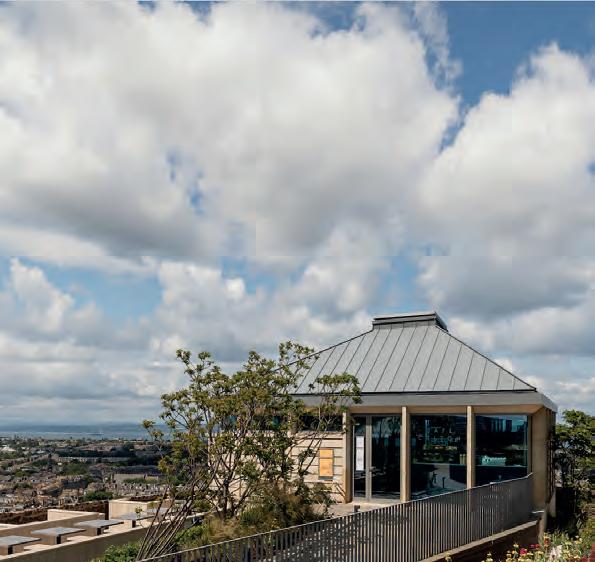
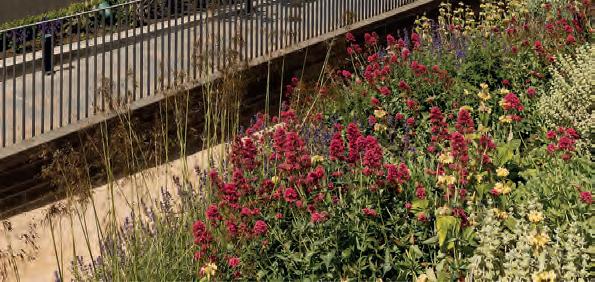



Capella Edina presents...
Sunday 12 October 2025, 15:00
Usher Hall, Edinburgh
Featuring iconic film scores from The Imitation Game & The Theory of Everything
https://cultureedinburgh.com/book/81801 also Elgar ‘Enigma Variations’ and Arthur Bliss ‘A Knot of Riddles’ Tickets from £10
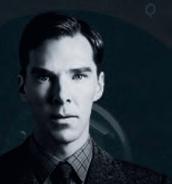





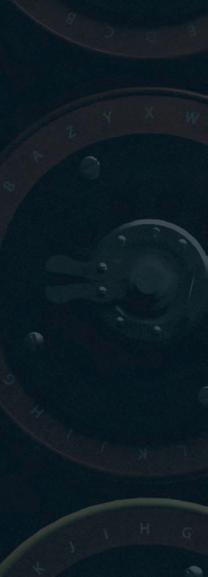
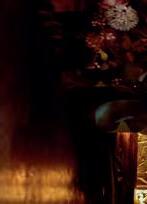
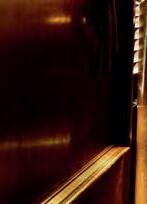



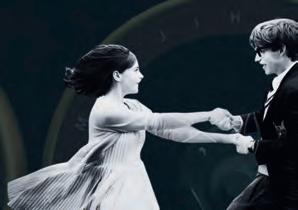

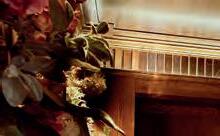
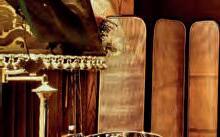

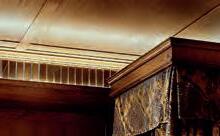

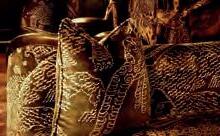




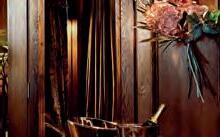
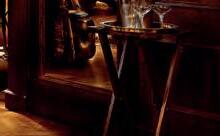

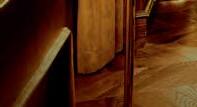


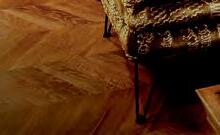



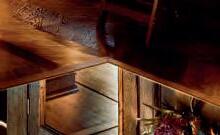




Got a food dilemma? Need a killer rec to seal the deal? Or just want the inside track on Glasgow and Edinburgh’s eating and drinking scene? Then why not ask EADith, our Eat & Drink team’s helpful agony aunt. This month, she’s chatting milestone birthdays
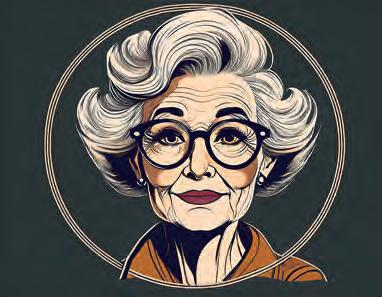
Dear EADith
Just like The List, I was born in 1985. Is there anywhere to celebrate this milestone in Glasgow that’s also 40 years of age?
40YearOldVirgil
Dear 40YearOldVirgil
Well, as you can imagine, there aren’t too many options. Forty is a ripe old age for any bar, restaurant, human or magazine (I myself have chosen to remain 37 forever). A quick look through The List’s estimable archives suggests some older places, such as Coia’s Café (1928), Ubiquitous Chip (1971) and Café Gandolfi (1979). It’s slim pickings for 1985, but you’re in luck: one of my favourite spots in town, Babbity Bowster, is also 40 this year.
Babbitys has endeared itself to many Glaswegians over the decades. The building itself, which contains a hotel, upstairs function room and groundfloor bar with beer garden, is a beautiful big Georgian townhouse from around 1790. It was originally part of a long-gone terrace on Blackfriars Street, an oasis of calm off busy High Street.
Babbity Bowster is named after a Scottish dance, and you’ll find occasional live music here. Run by the Mullen family (who also have nearby Rab Ha’s and recently opened Kentigern’s), it’s a transportive place, with a timeless simplicity to the décor of muted greys and well-worn wood. It reminds me of a British village pub mixed with old-school European bar. Drinks blend local and continental too, with Tennent’s, Belhaven and Fyne Ales alongside Budvar, Menabrea and Weihenstephan on tap, though I’m partial to their enticing wine list, with nearly 20 by the glass.
Expect pub classics such as bangers and pies, and Scottish favourites from Cullen skink and macaroni to haggis, neeps and tatties (whimsical menu description: ‘Bloody Tourist’) as well as global influences like nachos and curry. They claim the steak pie is ‘best in show’ and Mr EADith won’t argue; he often enjoys their golden-topped, meat-packed proper pie with none of this pastry-top-only nonsense. The haggis bonbons do the trick for me though: a generous trio of the Scottish delicacy, served with Arran mustard and whisky cream. (As told to Jay Thundercliffe) n Babbity Bowster, 16–18 Blackfriars Street, Glasgow, babbitybowster.com; average price £25 for two courses.


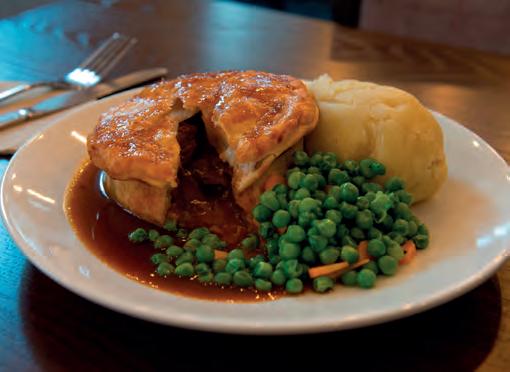
Creative folks reveal their top watering hole
The Waverley has hosted our monthly storytelling night Guid Crack for over 30 years. The former landlord welcomed our stories and met our storytelling eccentricities with his own particular brand of pub management. It was ramshackle, haphazard and full of character (all things you’d want in a pub), and has brilliantly retained all of that after re-opening, only with cleaner toilets. It’s a place that’s alive; you can sense the tales that have been told in there, especially in that upstairs room which is as evocative and otherworldly as many of the stories it has witnessed. Cracking pint of T, too. n Scottish International Storytelling Festival runs from Wednesday 22 October–Saturday 1 November.




EXPERIENCE a selection of festive events & culinary delights this CHRISTMAS


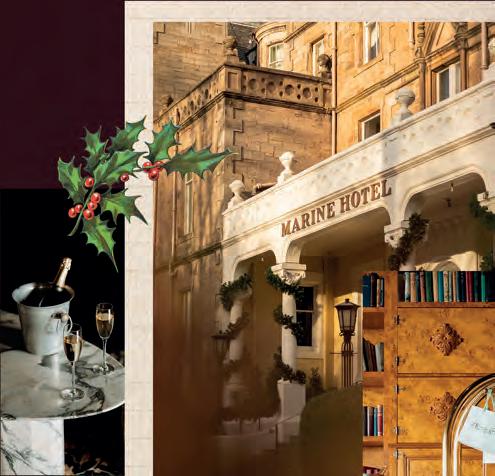

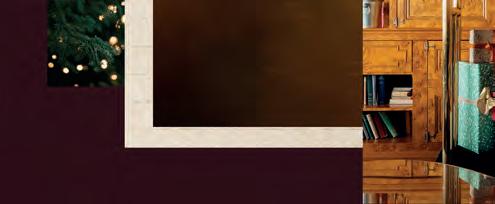





































































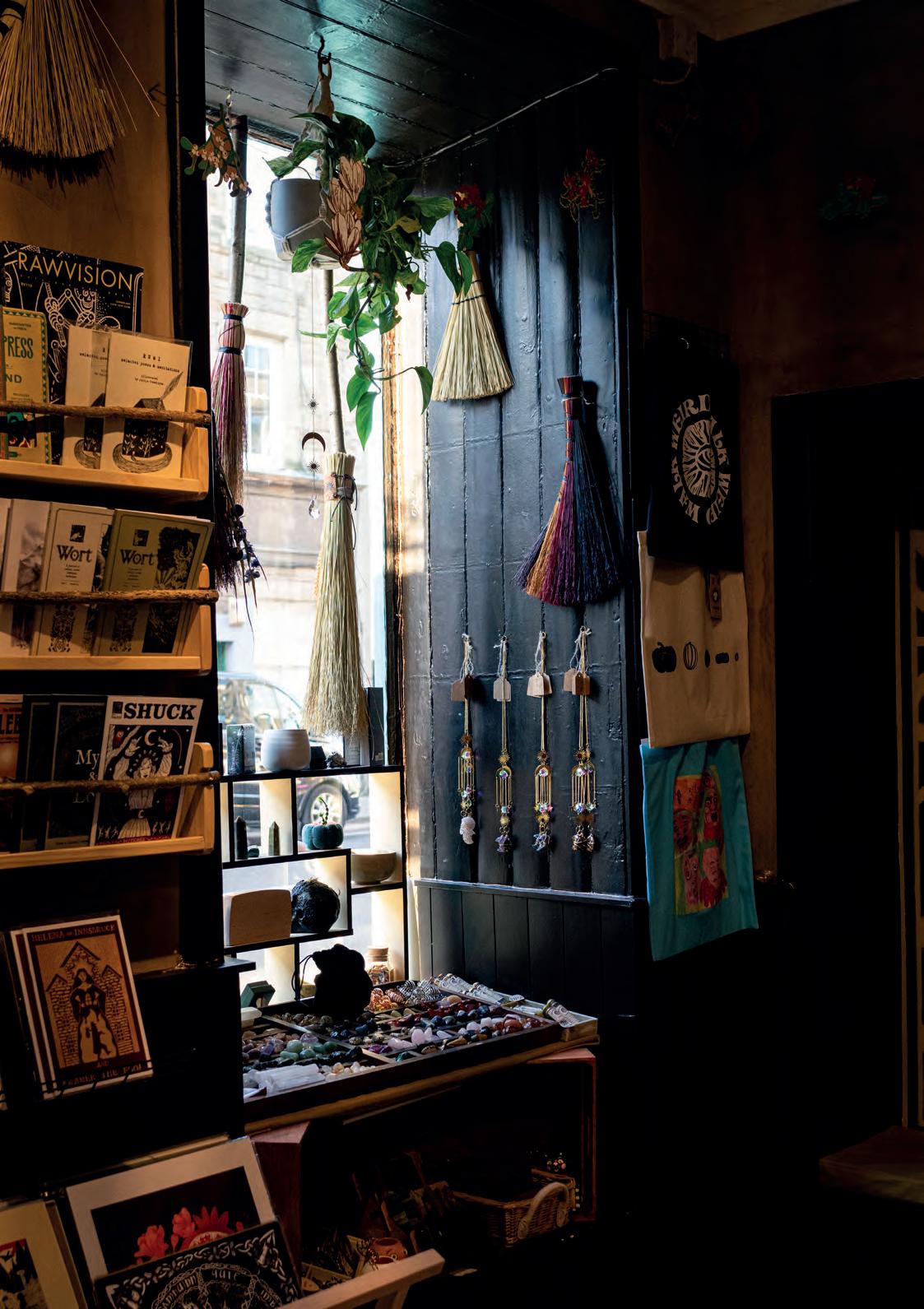
Wheel Of Fate has made quite a name for itself since opening its doors in 2023. Though an offshoot of its sister shop in Salem, Massachusetts, this iteration is entirely its own beast, acting as both an occult shop and a hub for the local pagan community. It splits its focus between witchcraft and folk arts, with regular broommaking workshops, divination courses and book-binding classes. Book a tarot reading with one of their specialists or simply browse their collection of crystals, prints, books, and all the witchy supplies you could ever need. (Isy Santini) n 63 Causewayside, Edinburgh; wheeloffate.co.uk; instagram.com/ wheeloffateedi

Zara Janjua navigates the frenetic intensity of Vietnam’s capital Hanoi and the somewhat calmer natural wonders of Ha Long Bay

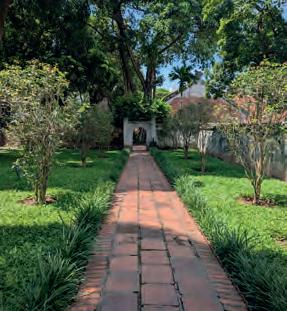

Hanoi is not a city you arrive in gently. It hits you head-on: a kaleidoscope of colours, smells and sounds. Motorbikes swarm like schools of fish, weaving around fruit sellers, children, even dogs balanced on handlebars. Crossing the road isn’t an act of planning, it’s an act of faith: step out, walk steady and watch as the chaos parts around you. Nobody crashes. Nobody even looks rattled. It’s choreography, just without the music. The Old Quarter is relentless. Fans plugged into pavements fight the heat, while neon signs blaze above street-food stalls serving pho, a warm, multi-dimensional broth layered with herbs, noodles and meat, and bánh mì, the French-Vietnamese sandwich stuffed with pickled vegetables, pâté and chilli. Dragon fruit is cut open to reveal a shocking magenta flesh, and lychees taste sweeter than anything at home. I tried egg coffee (sweet, thick and more pudding than drink) before heading to Train Street.
This narrow alley is both iconic and improbable. Locals sip iced tea as locomotives thunder past their front doors, while tourists cling to walls for the ultimate shot. It’s now a social-media sensation, an Instagram and TikTok favourite, though the real marvel is that trains here actually run on time: a surreal reality for anyone from Scotland. For a change of pace, head to the Temple Of Literature, Vietnam’s first university, founded in 1070 and dedicated to
Confucius. Courtyards, lotus ponds and carved stone stelae (slabs) line the walkways, each engraved with the names of scholars. It’s a place of serenity and reverence, a counterpoint to Hanoi’s clamour, where calligraphers still write scrolls for visitors. Standing there, you sense the weight of centuries, a nation that prizes scholarship as much as survival.
Hạ Long Bay, a few hours east of Hanoi, looks like something dreamed up in a fantasy film: nearly 2000 limestone karsts (rock formations) rising from emerald water, mist curling around their peaks. I took a speedboat between the cliffs, kayaked into hidden lagoons near Hang Luồn, then climbed through Sung Sot Cave, its vast chambers glittering with stalactites. It’s the kind of place that shrinks you, in the best way, nature reminding you who’s boss.
But the bay isn’t just a postcard. It’s a working seascape. Fishing boats line the horizon and families still live in floating villages. Stop at an oyster farm where pearls are cultivated with the same patience we give to whisky back home. And then comes the feast: prawns, crab, oysters, all pulled from Hạ Long Bay hours before. Tourists shouldn’t always brave the seafood, but in Vietnam, hesitation isn’t an option. You eat boldly, the same way you cross the roads.
vietnam.travel
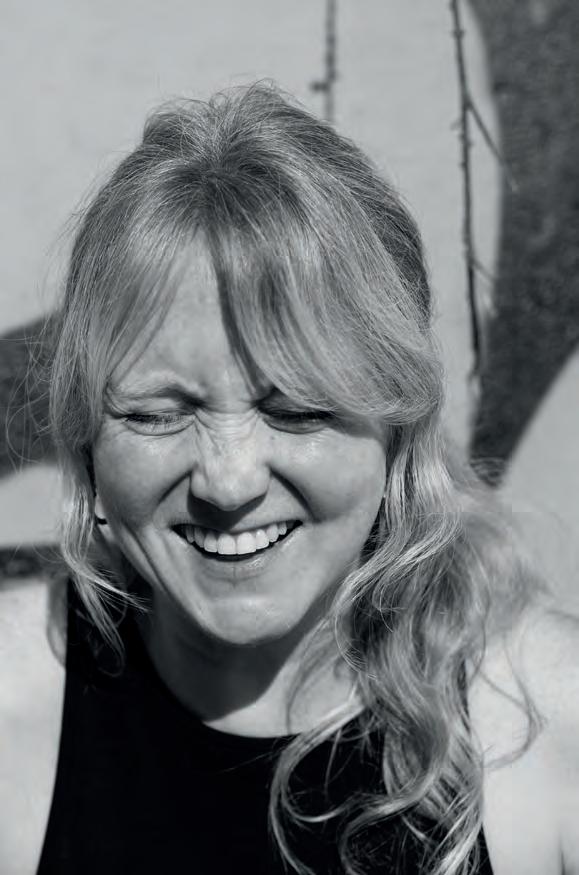
Poet Hollie McNish recalls childhood ventures in the sun and a more recent trip to a landmark lighthouse
Iwas lucky to have a summer holiday abroad every year as a kid (Tenerife, Mallorca, Lanzarote) and I still get giddy with excitement about the idea of that 5am drive, knowing we’d be en route to somewhere with a pool and neon t-shirts. I now go on holiday every summer to Spain with my kid plus auntie, five cousins and all their kids (so 13 of us in total), and it is a joy I look forward to all winter. Every one of those is a favourite and I won’t choose between them.
Outside of the annual family reunion is a stand-out trip to Shetland this year with my boyfriend to see the most northerly lighthouse in the UK: Muckle Flugga. He’d just finished writing a beautiful novel about a lighthouse keeper and his son, the last pair of keepers who were based upon this most treacherous piece of rock. We ventured by train, ferry and car to reach the end of Scotland to gaze upon it. Aside from meeting one of the ex-lighthouse keepers and getting attacked by bonxies (birds) on the clifftop, the highlight of this trip was being led by him onto St Ninian’s beach, a tombola where the sea greets the sand on both sides. I’d never seen or even known that this sort of landscape existed. Laying down on the sand, watching the sea greet us on both sides, I couldn’t help feeling like I was on a different planet.
Hollie McNish with Michael Pedersen, Òran Mór, Glasgow, Sunday 19 October; Portobello Town Hall, Edinburgh, Thursday 23 October.
As the nights draw in and Halloween beckons, Danny Munro pulls on his big-boy pants to bravely bring us three haunted spots to send a chill down your spine
CRATHES CASTLE, BANCHORY
Amid the oak-panelled walls and impeccably maintained 400-year-old renaissance paintings at this Aberdeenshire castle lives the ghost of the Green Lady, a former resident, who is said to have disappeared from the grounds following a scandalous affair with a servant. Queen Victoria herself once spotted the floating mother and her child, though blink and they might just disappear up the nearest fireplace.
n nts.org.uk/visit/places/crathes-castle
CULLODEN BATTLEFIELD, CULLODEN
More than 1600 Jacobite lives were lost in less than an hour on this very moor back in 1746. Rumour has it that soldiers’ cries can still be heard when the wind blows in the same direction the Jacobites once charged, and that guests may even spot the spirit of a dejected Highlander roaming the battlefield. The site, just outside Inverness, now has a museum and theatre featuring a 360-degree film which takes you deep into the heart of this cruel battle. n nts.org.uk/visit/places/culloden
From dagger-wielding veterans to Mary, Queen Of Scots’ former flame, a litany of sightings has earned this historic place a reputation as one of the most haunted buildings in Glasgow. Free to enter and accessible from the city centre in just over 20 minutes, Provan Hall boasts scarier sights than Sauchiehall Street on a Sunday morning. Join one of their ghost tours, every Thursday evening until 30 October. n provanhall.org

Taking inspiration from architecture and nature, Olivia Taylor tells Rachel Morrell that she wants to make jewellery to be worn every day, not just on special occasions
Scottish designer Olivia Taylor is in pursuit of perfection in the contemporary jewellery landscape, creating collections that cater to a discerning and diverse audience. Spanning classic pearl strands to playful sculptural designs, she says she found her creative medium by seeking a more tactile experience. ‘I started at Glasgow School Of Art studying interior design then switched to jewellery and smithing because I missed the hands-on making side,’ she recalls. ‘To have my own brand which combines my love for architecture and jewellery feels like a dream come true.’
After graduating, the inspiration for Taylor’s fine jewellery came from the world around her as well as further afield; handmade in her Glasgow studio, she uses ethically sourced gold and recycled silver. Taylor describes how her pieces mirror the organic and built environment: ‘My work aims to bring nature and geometric shapes together to create structural, eyecatching pieces. Inspired by a trip to the Japanese island of Naoshima, I re-interpreted the hard concrete shapes and rippling water found in architect Tadao Ando’s structure, Benesse House.’
From this ondulée collection, which uses a corrugated yet fluid texture to capture light, to her MAD series (launched in-person at the Museum Of Arts And Design in Manhattan), the unisex brand also tries to meet the needs of every wearer. ‘I have created three collections in precious metal, each with different price points to ensure that my jewellery is accessible to everyone,’ says Taylor. ‘I love seeing friends wearing my designs and hearing so many of my customers say that my jewellery is part of their everyday wardrobe is exactly what I aim to create.’
Combining daily luxuries with investment pieces and wearable art, Taylor has a keen focus on the future. Now launching a new concept with her Lifetime solid-gold collection of pieces, the brand has set the path for a beautifully crafted future.
oliviataylordesign.com; instagram.com/olivia_taylor_design


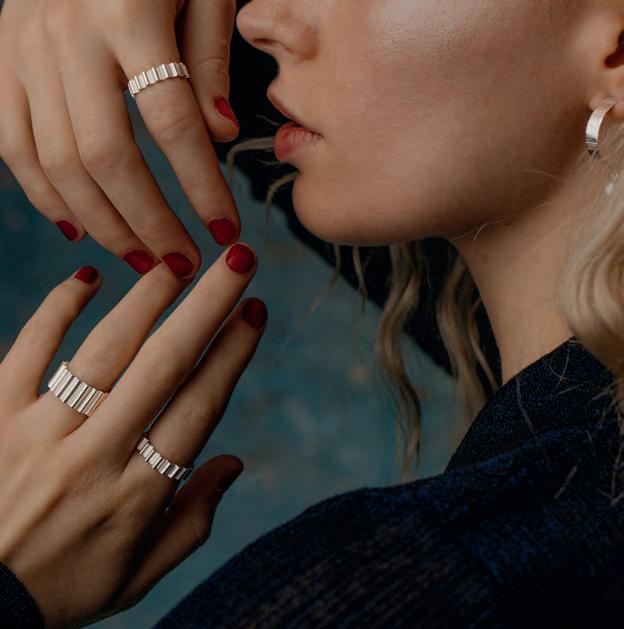
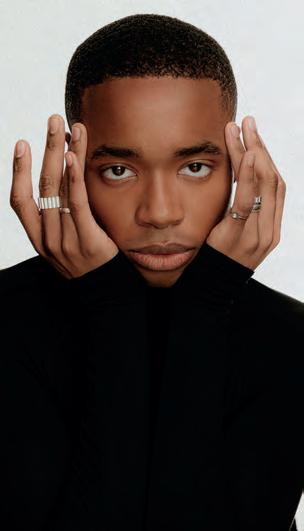


Handcrafted, vegan and made using natural fragrances, Melrose Candle Co’s wax wares offer guilt-free relaxation. It’s not just candles, though. You can keep your whole home smelling beautiful using their reed diffusers and room sprays, or focus on yourself with their gentle, sensitive skinfriendly hand soap. Plus, keep an eye out for some irresistible perfumes coming soon.
46 Howe Street, Edinburgh; melrosecandleco. com; instagram.com/melrosecandle_co
TBCO
Nothing feels better than wrapping up warm on a chilly evening, and TBCo is here to help you do it in style. Born from a desire to fight fast fashion,
Feel like you need a little self-care? Isy Santini rounds up three top spots for products to pamper yourself with
their range of high-quality cotton pyjama sets, cashmere socks and recycled wool blankets will keep you snug all season.
170b Great Junction Street, Edinburgh; tbco.com; instagram.com/wearetbco
This family-run business, founded by a qualified aromatherapist, manufactures all its bath and body products by hand in Glasgow, and they’ve just come out with their autumn collection. Savour the season all day long with pumpkin spice lip balm or imagine yourself around a cosy campfire with their toasted marshmallow bubble bath.
glasgowsoap.com; instagram.com/ glasgowsoap




As well as the traditional parade, this year’s spooky events are inspired by children’s books and films
Paisley’s award-winning Halloween Festival is back on Friday 24 and Saturday 25 October, transforming the town centre into an enchanting playground of street theatre, live performance and hauntingly creative installations.
The centrepiece event is the spectacular Halloween parade, which kicks off at 7pm each night and winds its way through the streets for an hour of creepy fun. This year’s theme takes inspiration from children’s books and films, so expect beloved characters reimagined with a darkly magical twist. To enjoy the festival away from the busiest crowds, the organisers recommend Mill Street, while those keen to soak up the atmosphere can secure grandstand tickets for a prime

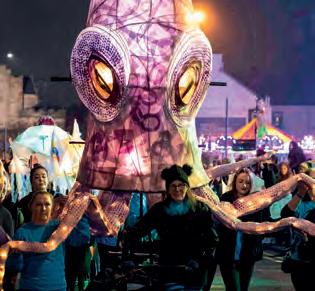
Beyond the parade, the programme is packed with roaming performers, illuminated artworks and a buzzing fringe of spooky events across Paisley and Renfrewshire over the Halloween season.


Delivered by Renfrewshire Council with performance specialists Cirque Bijou and lighting designer Grant Anderson, and supported by EventScotland as part of their National Events Funding Programme, the festival promises to be an unmissable spectacle.
Paisley Halloween Festival, Paisley Town Centre, Friday 24 & Saturday 25 October.
For more details, visit www.paisley.is/halloween and follow @paisleyhalloweenfestival on Instagram. spot along the route.

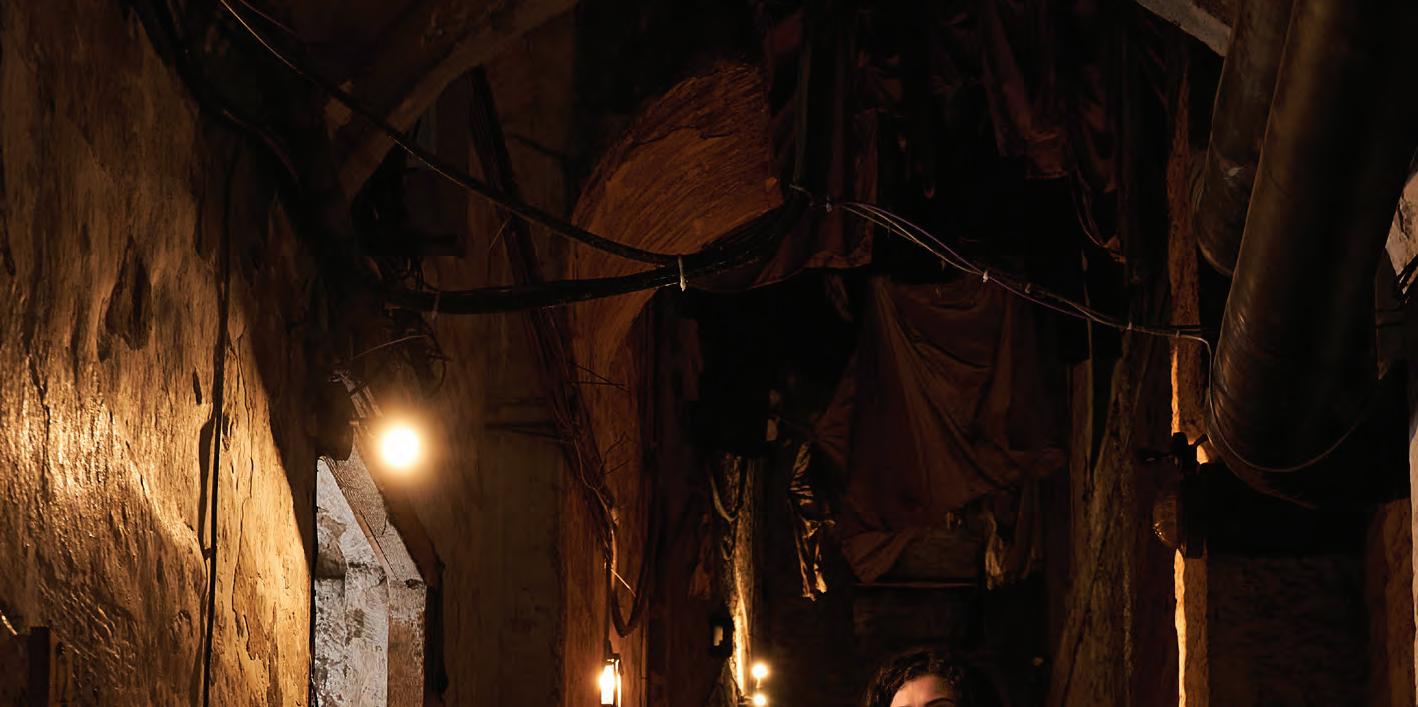


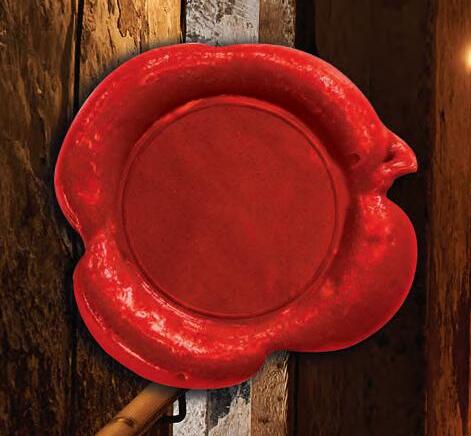

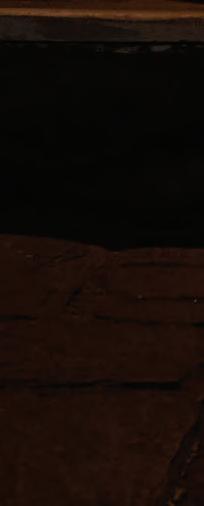
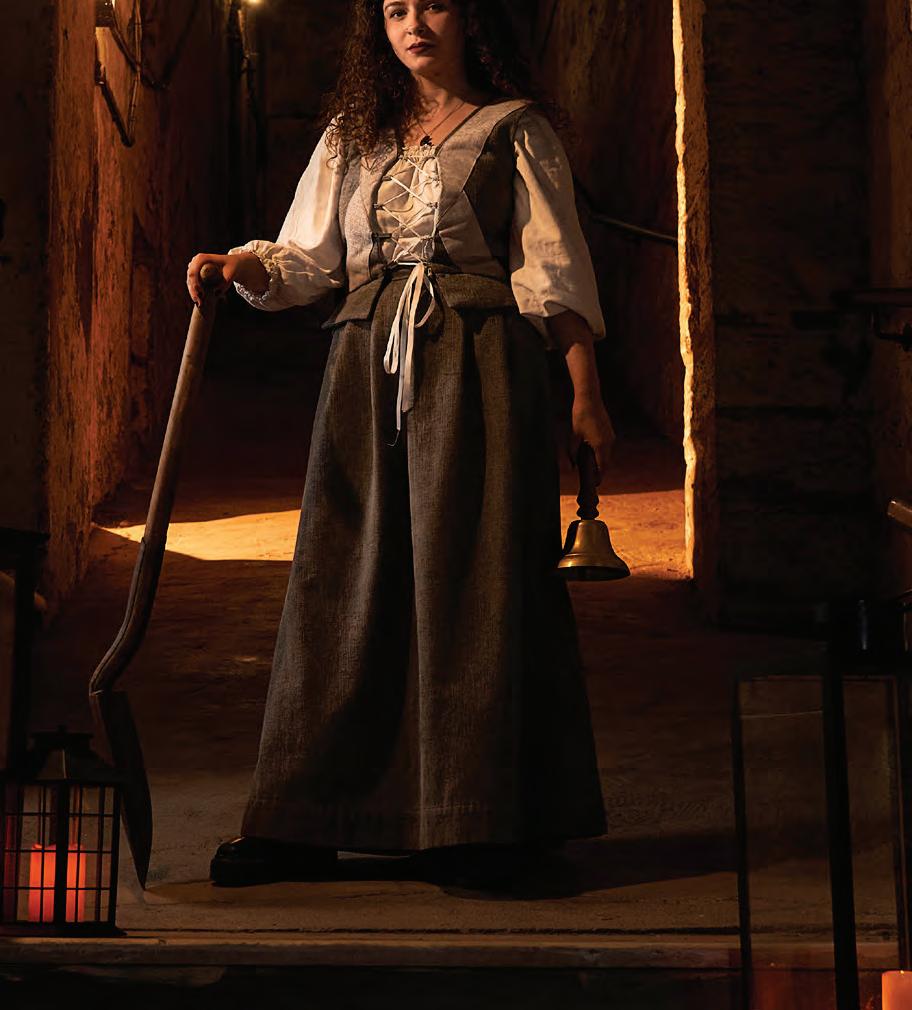








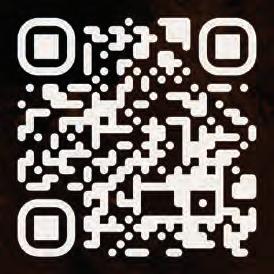


Nature and technology clash and fuse in another dramatic and vibrant light show in Pitlochry. If you’re keen on the idea of trees, plants and energy all connecting like digital data then this is the event for you. The 2025 show is entitled Luminara, with designated areas including the Nectaropolis, Synapse Grove, Bloom Circuit and Nexus. Plus, there’s a food village with toasted marshmallows if that’s also your vibe. (Brian Donaldson) n Faskally Wood, Pitlochry, Thursday 2 October–Sunday 2 November.



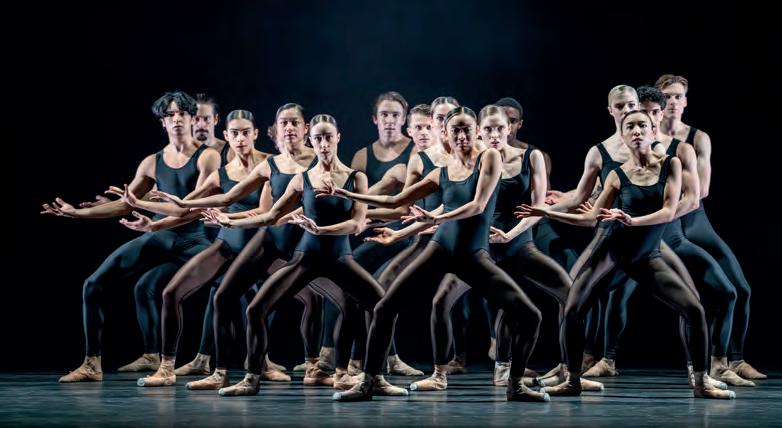
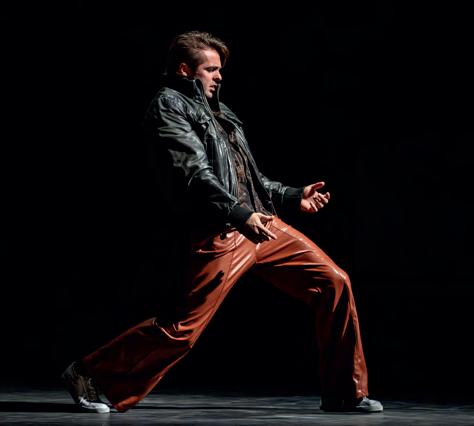
When Carlos Acosta, artistic director of Birmingham Royal Ballet, decided to celebrate the city’s most famous heavy-metal band, he had one eye on the box office. The company’s fiercely loyal following would doubtless support whatever they did next, but to get new bums on seats, you need to diversify. What he could scarcely have predicted is that Black Sabbath: The Ballet would sell out within days of going on sale in 2023, before a single step had even been choreographed. Nor that over 60% of ticket-buyers had never attended a ballet before.
Think Black Sabbath and you think of Ozzy. Or heavy metal. But ballet?
The pioneering Brummie band’s influence has entered surprising new cultural terrain and, as Kelly Apter discovers, audiences are loving it
Two years later, the show has headed out on a UK tour, with the whoops of applause still ringing in the dancers’ ears. As is the sound of Birmingham Royal Ballet Sinfonia (embellished by a mini rock band in the form of guitar, bass and drums) playing some of Black Sabbath’s most iconic songs. ‘It’s absolutely exhilarating,’ says principal dancer Lachlan Monaghan, ‘and so different to anything we’ve done before. You really do feel the energy of the music on stage and there’s an adrenaline that’s totally undeniable. Particularly when we reach the finale and we’re all dancing to ‘War Pigs’.’ Acosta may be the brainchild behind the ballet, but he brought in three choreographers to deliver each act (Pontus Lidberg, Raúl Reinoso and Cassi Abranches), which has been an interesting challenge for the dancers. ‘It was quite a busy process because a lot of people are dancing in at least two acts, so spent their day with two very different choreographers,’ explains Monaghan. ‘Because even though the overall theme is Black Sabbath, each act dives into a different part of their journey. Act one is about their upbringing in Birmingham and the origins of the music. Act two features quotes from the band, speaking about some of their darker experiences, which is really quite powerful. And
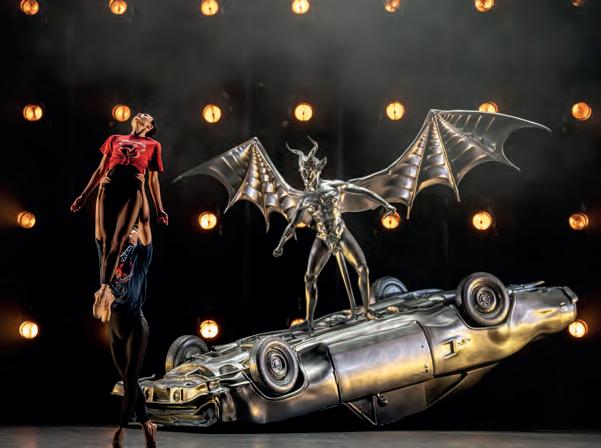
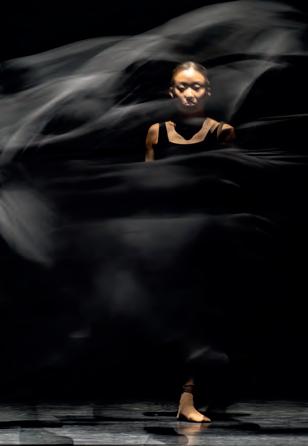
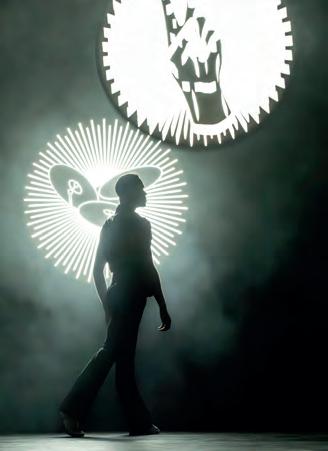
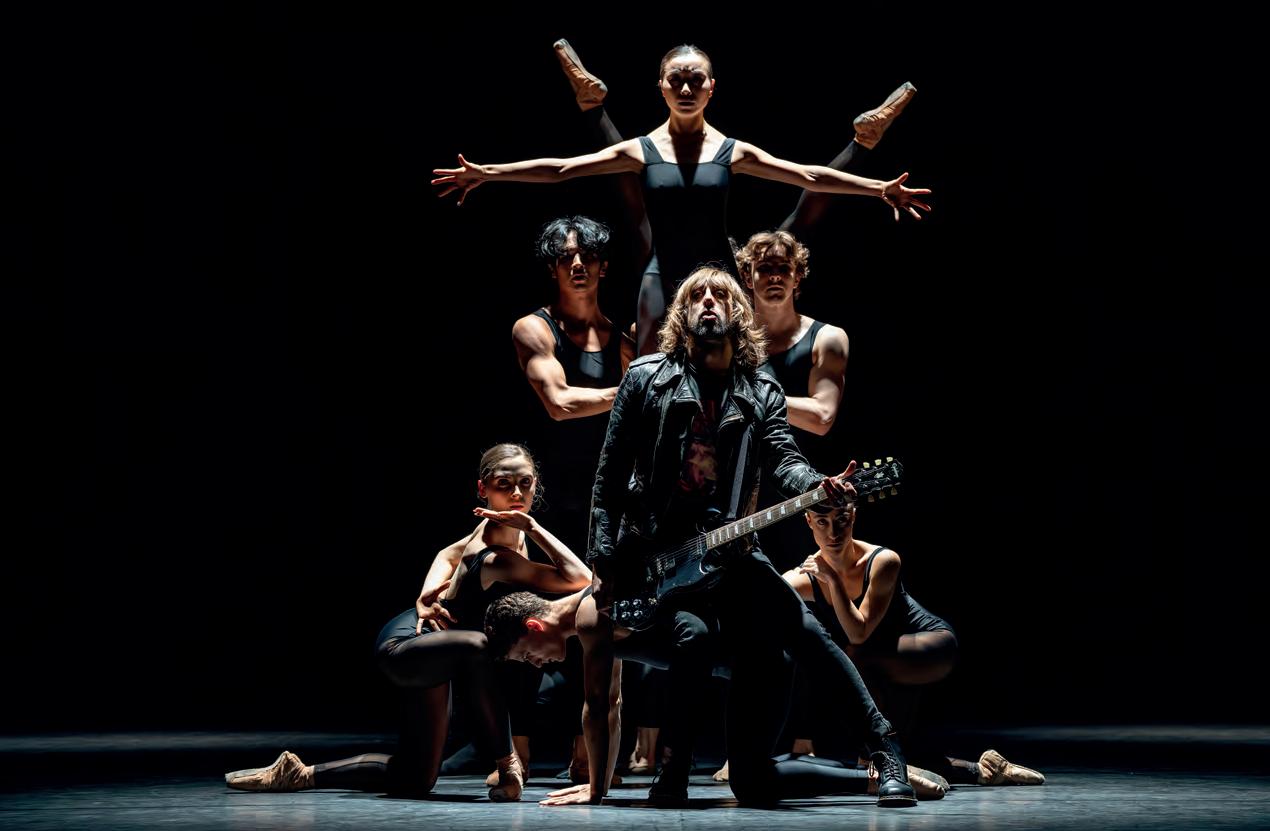
There’s an adrenaline that’s totally undeniable “
then act three is all about the fans, and how Black Sabbath’s music has affected so many people around the world.’
Unusually for a ballet dancer, Monaghan is using more than his body to entertain the crowds. Early in the rehearsal process, lead composer Christopher Austin asked if anyone would be willing to sing during the show. All heads turned towards Monaghan. ‘For most ballet dancers, singing is their worst nightmare,’ he laughs. ‘But since the pandemic, I’ve been taking singing lessons and it’s become a side passion of mine. So when Christopher asked if anyone wanted to sing a solo, a little voice inside my head said, “this is what you’ve been preparing for the last four years”, so it felt like the right time to give it a go.’
Monaghan sings the band’s titular song, ‘Black Sabbath’, during the second act, one of a few choice moments when lyrics are heard. Much of the time, however, we hear Sabbath songs reworked and orchestrated by Tony Awardwinner Austin.
With such an extensive back catalogue to draw from, he was spoilt for choice. But adapting well-loved music into a symphonic score also comes with a pressure not to disappoint the fans. ‘It was about creating something new in
addition to the extraordinary raw material,’ says Austin. ‘So although you need variety of tempo for an evening-long dance piece, it was important to honour Sabbath’s music at the speeds people are familiar with and then take it on another journey. And we need to hear Ozzy’s voice, because it’s extraordinary, so we deploy it sparingly in acts one and three.’
For those familiar with the music, there’s fun to be had playing a game of ‘spot the song’ throughout the ballet. ‘There are points where three or four elements of different songs are superimposed,’ says Austin, ‘and I’ve brought material together that previously people would only have heard separately.’ Throughout the process, Austin was in regular contact with Black Sabbath co-founder and guitarist Tony Iommi, who visited rehearsals and listened to demos as the score evolved. ‘When Tony gave the thumbs up about my approach to the music, I felt completely liberated,’ says Austin. ‘The gift of his trust is one of the most extraordinary events of my life.’
Black Sabbath: The Ballet, Festival Theatre, Edinburgh, Thursday 30 October–Saturday 1 November.

As the Black Sabbath ballet head(bang)s our way, Greg Thomas reflects on the band’ s hellraising frontman, the late Ozzy Osbourne
It’s extraordinary, funny and strangely pleasing to imagine the technical virtuosity and androgynous beauty of the Birmingham Royal Ballet troupe being poured into the story of four drug-addled working-class boys from Aston who conquered the world with lumbering, deeply masculine music about Satan and cocaine.
Black Sabbath’s frontman Ozzy Osbourne, who died in July, was both the epitome of the group and on the fringes, even within this gaggle of outsiders. Legend has it that prior to joining Sabbath he could be seen walking around the neighbourhood with a shaved head and a hot-water tap round his neck, barefoot but dragging a trainer along on a dog lead.
Whereas band leader and tough guy Tony Iommi, and sensitive lyricist Geezer Butler were attached to the souring late-60s hippy culture, Osbourne was genuinely weird. Some of his outlandish behaviour might have had to do with processing trauma: he was sexually abused as a pre-teen and attempted suicide as an adolescent.
Indeed, throughout his life, Ozzy’s persona seemed shaped at some level by low self-esteem, an odd thing to say given his career. Ultimately it was the resultant quality of fragility that made him so appealing. For a metal frontman, he was remarkably devoid of ego. Ok, he was caught up in the gross indulgences of 70s rock stardom, but his stage charisma had to do with a simple, master-of-ceremonies type rabblerousing rather than crotchthrusting narcissism. Off stage, he was a clown, constantly making a fool of himself for a laugh in that way in which people seeking acceptance out of insecurity often are.
Osbourne was famously fired from Black Sabbath in 1979 after his addictions made him impossible to work with. He found himself a solo artist at the birth of the glam-metal explosion, when cynical and grotty bands like Kiss and Mötley Crüe were busy turning heavy guitar music from something about catharsis and outsider-ness into a kind of predatory peacocking.
Ozzy toured with Mötley Crüe but was never one for boasting about the size of his hareem. He was still the weird kid from Birmingham, making a spectacle of himself to fit in. When the glam coterie fell out of favour in the early 90s, Black Sabbath and Ozzy’s influence survived. Indeed, they were seized on as foundation stones for the far more interesting and enduring grunge movement.
An oddball caught up in a whirlwind of success generated by the more gifted musicians around him, in a way Osbourne always seemed thrust into the spotlight by chance. So it made sense when he became a reality TV star with The Osbournes (2002–05). While it might seem off-colour to remember him for the unwittingly, and wittingly, hilarious antics of these years (falling asleep with the blender on, mangling a performance of ‘Take Me Out To The Ball Game’ at a Chicago Cubs game), it was all of a piece with the persona he’d expressed over decades. More of a comic talent than a musical one; charming, ludicrous, and deeply, deeply loveable.
Image supplied by kind permission of Birmingham Museums Trust whose exhibition Ozzy Osbourne: Working Class Hero runs until the end of 2025.
How a famous quote helped inspire a national showcase of film, music, theatre, art and more
From a favourite song to a horrifying ghost story, art has an extraordinary power to comfort or disturb, or sometimes do both at the same time. Comfort & Disturb is the theme of this year’s Scottish Mental Health Arts Festival (SMHAF), which has events across Scotland from Monday 20 October to Sunday 9 November in one of its most ambitious and farreaching programmes yet.
Why Comfort & Disturb? Part of the inspiration was the famous Cesar A Cruz quote that ‘art should comfort the disturbed and disturb the comfortable’. Cruz, a Mexican educator and activist, was making the point that art should challenge privilege, power and complacency at the same time as bringing solace to those who most need it. It’s a fitting theme for a festival that has always confronted stigma and prejudice about mental health while providing a platform for people who have faced sometimes profound mental health challenges to tell their own stories in their own way.
This year, those people include Glasgow-based Arab artist Huss, whose SMHAF commissioned short film, Until We Return, tells his story of being outed and forced into exile from Egypt; Australian performer Leah Shelton, whose grandmother was institutionalised in the 1960s, a story she vividly tells in her Mental Health Foundation Fringe Award-winning show Batshit!, now touring to the Lemon Tree in Aberdeen (Friday 17 October) and the Traverse Theatre in Edinburgh (Wednesday 22–Saturday 25 October).
Irish visual artist Myrid Carten, who turns the camera on the complex and often painful dynamics of her relationship with her alcoholic mother in her debut feature film, A Want In Her (Filmhouse, Edinburgh, Monday 20 October; Glasgow Film
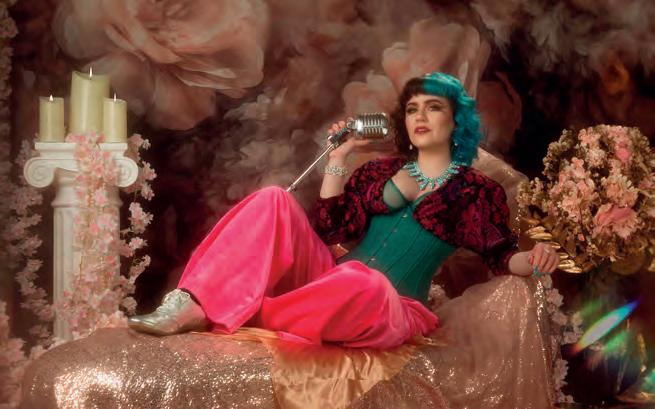
Theatre, Wednesday 22 October), and Norwegian film director Ane-Martha Tamnes Hansgård, whose battle to separate her identity from her psychiatric symptoms is told in the film DIAGNONSENSE which has its UK premiere as part of SMHAF (University of Aberdeen, Wednesday 22 October; CCA, Glasgow, Friday 7 November).
With hundreds of events, it can be almost impossible to choose what to see at SMHAF, but obvious highlights include Out Of Sight Out Of Mind, an annual exhibition at Summerhall in Edinburgh that showcases – and is planned by – people with experience of mental health issues. This year’s show (Wednesday 22 October–Sunday 9 November) is the biggest yet, with 400 artists represented. It is not to be missed, especially when recent cuts to community mental health services in Edinburgh have made its future uncertain.
In Glasgow, head to Civic House on Thursday 23 October for Are You Sitting Comfortably, a one-day showcase of powerful new theatre works in progress by Emma Lynne Harley, Ese Ighorae, Milly Sweeney and Skye Loneragan, touching on issues from institutional racism to coercive control, followed by an evening of candid mental health-themed conversation and music with songwriters Emma Pollock, Jo Mango and Amy Duncan, in partnership with broadcaster Nicola Meighan’s A Kick Up The Arts podcast.
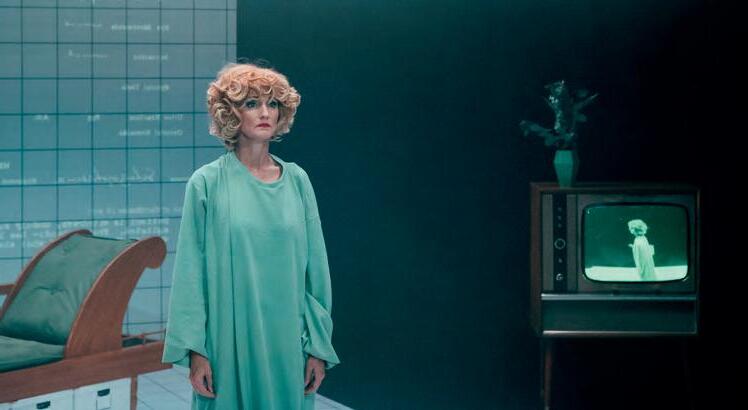
All of the above barely scratches the surface of an expansive programme that also includes the return of SMHAF’s International Film Awards (CCA, Glasgow, Thursday 6–Saturday 8 November), SMHAF x WayWORD at the University of Aberdeen (Wednesday 29 October), with a live literary showcase hosted by Jo Gilbert featuring Iona Fyfe, Mae Diansangu and Nuna, and hundreds more events all across Scotland, taking place in community spaces as well as arts venues.
The Scottish Mental Health Arts Festival runs from Monday 20 October to Sunday 9 November across Scotland. Full details available at mhfestival.com.



“



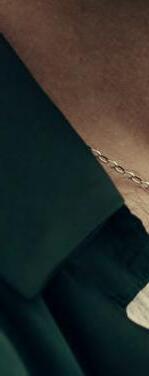

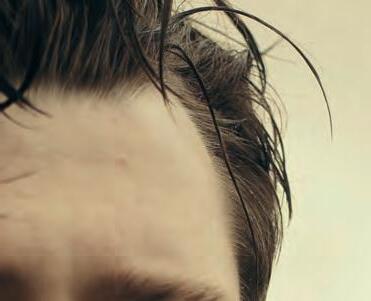
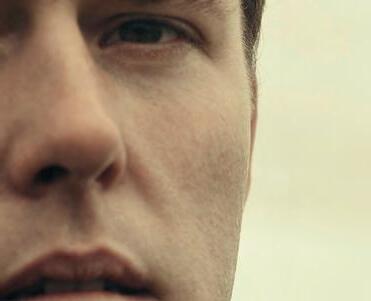
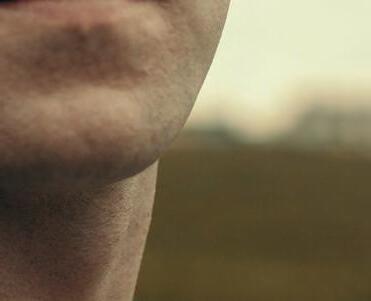
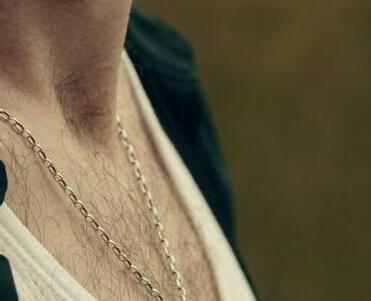

Niall McNamee is about to release his debut album and head out on his biggest tour yet. The singer-songwriter and actor also plays the lead in upcoming romcom One Night In Bath and stars as Irish goalkeeper Alan Kelly in Saipan, which tells the real-life story of coach Mick McCarthy and captain Roy Keane’s dramatic fallout on the eve of the 2002 World Cup. McNamee tells Danny Munro why he’s too busy to burn out and how he’s relishing the role of being a leader on set
Niall, how are you doing? I’m good. I’m a bit stressed and busy, but that’s generally the best state for me. I don’t like being bored. So, yeah, it’s one way or the other.
How did you find the process of putting together your debut album, Glass And Mirrors, compared to making a single or an EP? Truthfully, I found it really tough. I originally booked out a month in a studio in Belfast nearly three years ago now, and I thought: ‘We’ll get it all done in one big chunk. And then it’s done and we’ve captured a moment in time.’ But obviously, we didn’t have enough time. And obviously, I wrote 400 songs in the meantime.
You’ve been compared to many artists, from Shane MacGowan to Joe Strummer and Alex Turner, but how would you describeyoursound? I can hear all the influences of things I like, but there’s such a mix, you know, of Christy Moore and Shane MacGowan, also Frank Sinatra and Dean Martin, and the Arctic Monkeys and Coldplay and Oasis. I can hear all the influences in there, but I don’t know if they were on purpose.
At 26 shows, this tour is your biggest to date, plus there’s the album release and two forthcoming films you’re starring in. How do you stop yourself from burningout? Panic! Just pure panic. I think in any other instance, there would have been loads of reasons to have burnout and stuff. But truthfully, my brain always goes: ‘I haven’t really got time to burn out’.
You’re playing the lead role in a romantic comedy called One Night In Bath. As a self-proclaimed ‘romantic’, this must be a dream come true? Yeah, I loved it. It was so silly that movie, you know, as a proper kind of old-fashioned British romcom. It was just good to have a laugh. Everyone on set was awesome. And to get to lead something like that is always a privilege, because it’s a lot of responsibility. You want to get it right from an actor’s point of view. But when I’ve stepped on set, especially in a smaller role, you kind of look to whoever is at the top of the cast list to lead by example. And I love being in that position, because of that responsibility. I take it very seriously. You have to be a leader as well as an actor.
You’re also playing the role of goalkeeper Alan Kelly in Saipan. What was it like being on the set of a major production and working alongside a star like Steve Coogan? Unbelievable. I’m such a massive Alan Partridge fan, and Steve Coogan fan, and a football fan. And I know Éanna (Hardwicke) who plays Roy Keane; he’s one of my best mates. You can go deep into what acting is but, on a certain level, if you’re a bloke you want to pretend to be a soldier or a spy or a footballer. I support Ireland and I remember that era so well, so it was all just ridiculous.
You recorded a fight scene with Jackie Chan in The Foreigner. Does that mean thatyoucouldbatterRoyKeane? No! No, I’d rather go into the ring with Jackie Chan than Roy Keane.
Are you a goalieinreallife? I used to be a goalie. Not as my first position, but I was one of those lads who, if the goalie’s injured or whatever, I always fancied myself as a bit of a goalie and played a bit of the time. And this is going to be a conversation I’m going to be having with friends for the next year or two . . . we were having a kickabout on one of the first couple of days and someone hit a screamer past me. I went: ‘Shit, did you see that? He’s got a foot like a traction engine!’ I didn’t even mean to, it just came naturally. And I was so embarrassed. Luckily Steve Coogan wasn’t there. But that’s what I was battling with the whole time, because I have so many friends that I speak to only in ‘Alan Partridge’.
Howmuchcanyourememberaboutthe2002WorldCup? I was young, I think I was about seven, but I remember it very clearly. It’s one of my formative memories because it was Ireland at a World Cup, which was exciting anyway. But I also remember really clearly my dad saying to me: ‘Now look, the World Cup’s in Japan, so all the games are going to be pretty much early in the morning.’ And I was like: ‘What do you mean?’ And he said: ‘We’ll get you up early, we’ll have a bacon sandwich and we’ll watch the matches before school.’ I was so excited.
Are Ireland going to qualify for the World Cup? Yes. Yeah. I’m going with the manager. He [Heimir Hallgrímsson] says we are. So yes, this is the year. This is the year.
Niall McNamee plays Cabaret Voltaire, Edinburgh, Sunday 19 October; Glass And Mirrors is self-released on Friday 10 October; Saipan will be in cinemas in January.



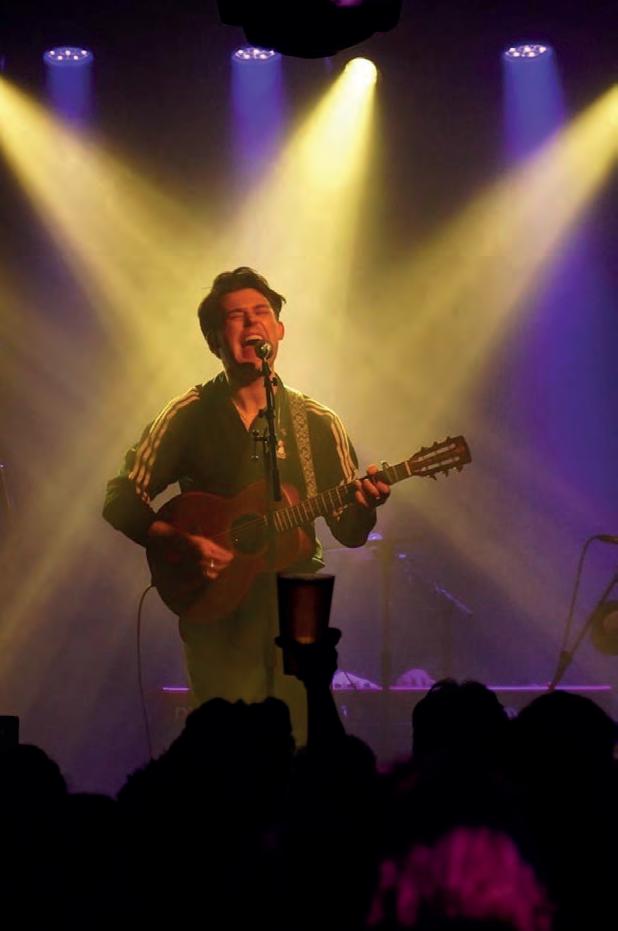


Following successful filmmaking workshops for young people, Glasgow’s Gaelic centre An Lòchran is set to welcome communities to a screening of films exploring intersections between Gaelic and the environment. The workshops, led by Keep Scotland Beautiful’s Gaelic development officer Jonathan Angell, featured the participation of 24 young people, mainly from Glasgow but with a few travelling from as far as Oban. With a vision for a clean, green, sustainable Scotland, Angell has been inspired by the uptake: ‘It’s clear there’s a real need for creative, community-based Gaelic engagement that motivates and empowers young people.’
With September workshops selling out in under three days, the initiative rides the Gaelic crest of a recent wave, showing there’s a strong appetite for such opportunities.
‘An Lòchran has been the ideal partner,’ says Angell, ‘a vibrant Gaelic space where young people can build a lasting connection to the language beyond the classroom; the rise in Gaelic filmmaking is hugely positive. It’s not just about enjoyment; it’s about visibility, voice and showing that Gaelic is thriving in places like Glasgow.’
Gaelic provides a unique view on environment and climate change, via the prism of traditional links between land, language and community, something that is both ‘rooted and refreshing’, says Angell. ‘They bridge tradition and modernity, and that’s vital for how we talk about climate and heritage.’
Following the pilot scheme’s success, he’s keen to keep the momentum going, sharing the films more widely and developing new projects where young people can explore Gaelic through media, climate and culture.
(Marcas Mac an Tuairneir)
An Lòchran, Glasgow, Friday 9 October.
As Glasgow comedy venue The Stand relocates after 25 years, Jay Richardson checks out its ecclesiastical new home and the opportunities it presents for the much-loved club to broaden its horizons
Acrucifix hangs above the doorframe of The Stand’s green room, with a warning (‘Abandon hope’) for those about to take the stage. Rescued from the Glasgow comedy club’s former venue on Woodlands Road, the symbolism has acquired greater irony in its new setting in Lansdowne Church, the Victorian Gothic landmark formerly known as Websters Theatre, named after World War I casualty Alf Webster who designed its striking stained-glass windows.
‘The first time I walked into the club, I could still smell the Sunday school; I could still smell the kirk,’ Susan Morrison chuckles. Having compered the opening night of both the old venue 25 years ago and its successor, she reflects: ‘It’s just such a weird feeling, running about the stage, swearing, shouting and having fun in the most spectacularly unpresbyterian way going.’
Whatever faith you retain, it certainly seems ambitious to launch a comedy club during a cost-of-living crisis. The Comedy Store has just closed its Manchester premises. And The Stand, a pioneer of live comedy in central Scotland, has, in recent years, acquired stiff competition from the Glee chain in Glasgow and Monkey Barrel in Edinburgh. ‘It’s madness opening a new venue right now,’ agrees Stand co-founder Tommy Sheppard. ‘A lot of people are quite sad about the old club closing; there are a lot of memories there.’ But with the lease ending on the venerable basement institution, Sheppard says he and his staff are now trying to replicate the best of the old building ‘to make this just as good, with the potential to be considerably better’.
Comedy snobs may lament the passing of the old Stand’s low, laughter-trapping ceiling, under which Kevin Bridges performed his first set, Frankie Boyle steadily honed his act, and Stewart Lee transformed the compact stage forever, turning it into a phallic catwalk to record his 41st Best Stand-Up Ever! special. But on the opening weekend of the new, double mezzanine, 300-seater room, I gave this only passing thought. Sat amid an intimate layout of cabaret-style tables for mischievous Chinese comic He Huang, the house was later fully sold out for The Sunday Service Show headlined by Susie McCabe. Taking over Father Ted star Michael Redmond’s weekly former residency (which she alternates with Christopher Macarthur-Boyd), McCabe reckons The Stand has ‘grown up a bit, coming out of the basement . . . into the crypt?’
The much wider stage, drop-down TV screens and full wheelchair access increase the diversity of acts who can appear at the venue. And it ought to prove a boon for Whose Lunch Is It Anyway?, a new Sunday format embracing the resurgent interest in improv. The room’s theatrical trappings, reminiscent of Òran Mór further down Great Western Road, betrays an interest in poaching some of the older, affluent West End crowd who attend A Play, A Pie And A Pint seasons there. Morrison is hosting Cabaret Of The Exceptional Imagination, an irreverent daytime show platforming the discussion of ideas, while Raymond Mearns and other veteran stand-ups appear at The Comedy Speakeasy during afternoons.
The Stand also hosts podcast recordings, including its own, as well as Chris Forbes’ cringe revisits in Stop Watering Dead Flowers and BBC presenter Nicola Meighan’s A Kick Up The Arts. Fitted with a camera set-up to film stand-up specials, every single set on stage is being recorded for comics to share clips on their social media. Plans are also afoot to introduce a regular pub quiz in the separate second bar, built out of pews from the church, as well as plays, including a kids’ Sleeping Beauty pantomime at Christmas led by comic Billy Kirkwood and a more adult version of The Wizard Of Oz from the Weegie Hink Ae That? trio.
Expanding beyond a stand-up programme that sees the likes of James Acaster, Olga Koch, Mark Watson and Emmanuel Sonubi perform in the next few months, there’s a stated desire to showcase more sketch acts. Longer-term, the club is also considering staging music gigs for the first time. ‘Stand-up will always be our bread and butter,’ says venue manager Fraser Milroy. ‘But we have an opportunity now to broaden the types of comedy and types of performer we have here. Glasgow’s humour has always been a part of its identity. And it deserves a club like this. I’m hoping we can once again be its beating heart of comedy.’
thestand.co.uk/whats-on/glasgow
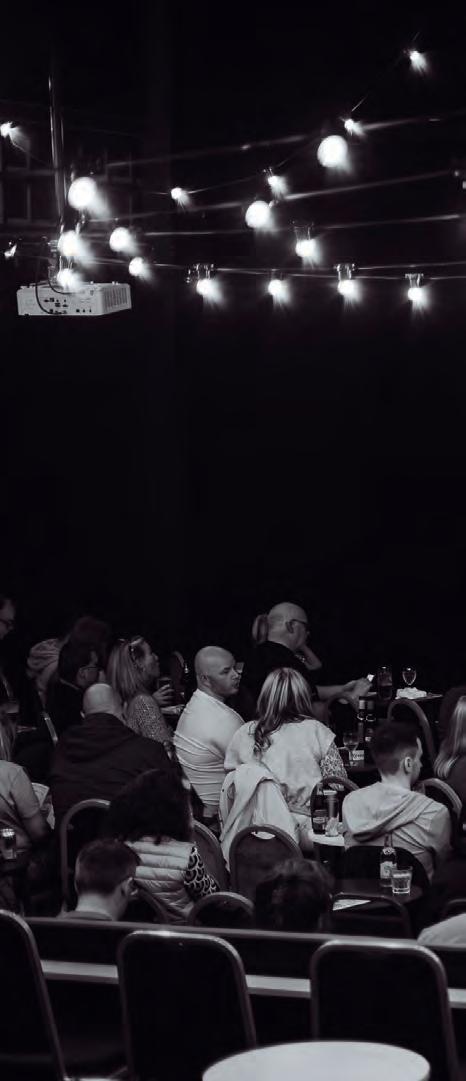



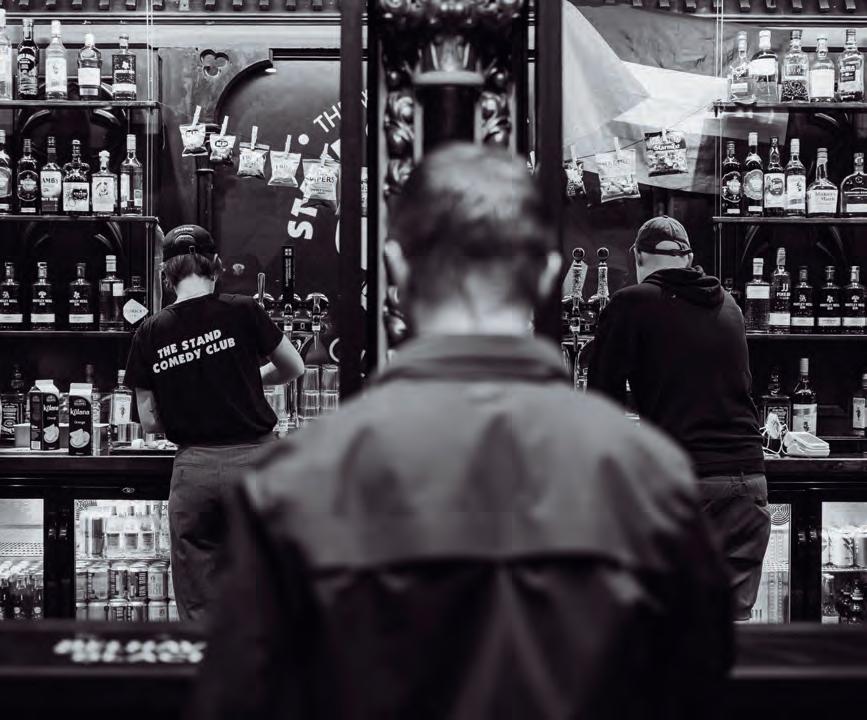
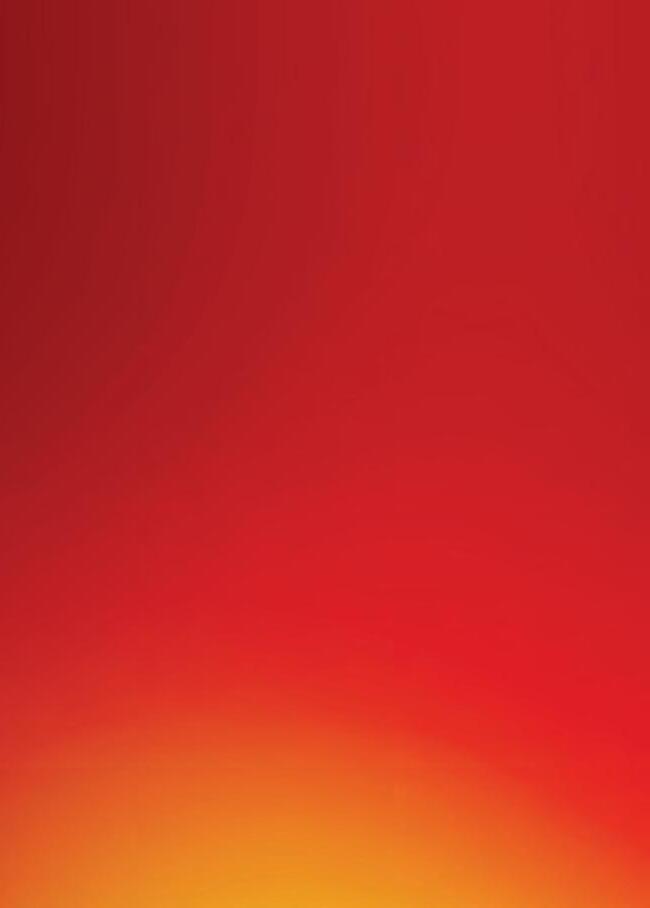



PBBC broadcaster, author, actor, musician, DJ and now a List columnist, the lad Galloway flicks through some music listings to choose top October gigs in variously sized rooms and across different genres…
ossibly the most influential act on modern rock music of the last 25 years are Swedish post-hardcore heroes, Refused. Their benchmark recording, The Shape Of Punk To Come, fused punk, metal, electronica and radical politics, exploding into the pit in 1998. A slow-burner at the time, it’s crept into the hearts, minds and record collections of tattooed guitarslingers ever since. Sadly calling it a day (it’s tough to play this kind of physical, high-velocity noise at any time, never mind in middle age), the quintet have decided to head off on one final tour, dropping into Galvanizers Yard at SWG3 in Glasgow (Wednesday 1 October). You’d be a crazy fool to miss their dynamic and utterly visceral stageshow up close and personal one last time. You want new music? You got it. Since 2013, has been blazing a . . . ahem . . . path(?) for the good stuff and they’re back at it once again. Showcasing a smorgasbord of talent from Scotland and way beyond, this year’s headliners are glamorous Manchester goth-popsters Pale Waves, who will fashionably swagger onstage alongside local champs such as Dead Pony, Gallus, Soapbox and Waverley. Why not put on some comfortable footwear, grab a wristband and bounce between multiple venues across Glasgow’s East End, including the Barrowland Ballroom, St Luke’s, BAAD, McChuills and others (Saturday 11 October)? Inner city all-dayers such as this are now the lifeblood of the scene, and demonstrate that grassroots live music is still very much alive and kicking in Scotland’s music metropolis.


Glasgow Tenement Trail
swagger after hiatus, bringing us a splendid new album, Begging The Night To Take

Erstwhile Delgado Emma Pollock returns to the fray after a nine-year hiatus, bringing us a splendid new album, Hold. Over a 30-year career, she’s developed from thrashing out acerbic indie-pop ramalama to become a crooning chanteuse armed with beautifully crafted torch songs, and an emotional and powerful voice. The Scottish leg of her UK tour has Perth, Stirling, Edinburgh, Aberdeen and Glasgow shows in the diary (Friday 24–Wednesday 29 October), as she shines a spotlight on the new record as well as performing old favourites.
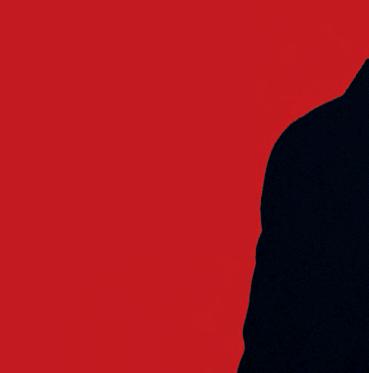
Listen to Vic Galloway every Monday and Wednesday night on BBC Radio Scotland; he co-hosts the Scottish Album Of The Year Award Ceremony at Caird Hall, Dundee, Thursday 6 November.

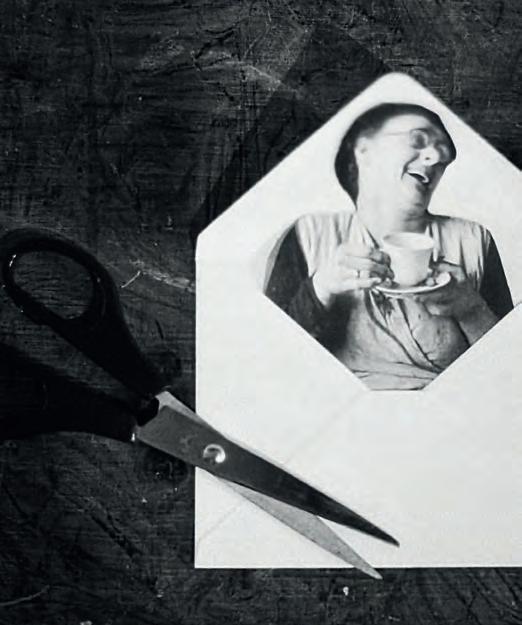
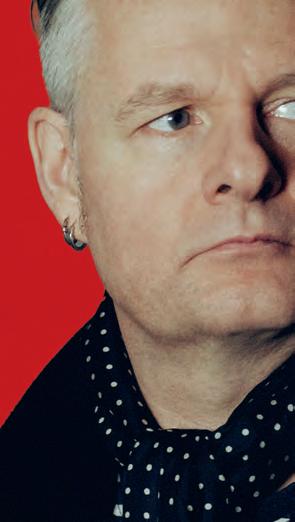

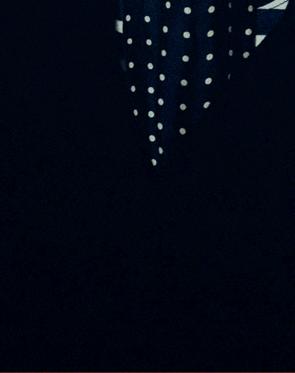






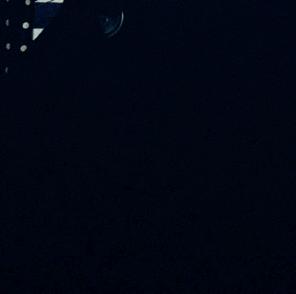


‘I’ve always liked art projects that shake up your practice,’ says curator and photographer Miriam Morris. ‘I enjoy pulling people together to share knowledge and different methods, but most of all to have a bit of creative fun that can sit alongside all our other responsibilities.’ Morris is the brains behind The Postal Exchange, a mail-art project where people receive a bundle of supplies in the post and create new work. Twenty-four people, including visual artists, photographers and writers, answered Morris’ open call on Instagram to take part. Their names were jumbled on a spreadsheet and matched at random.
‘Each pair exchanged art materials via the post. It’s a bit like a HelloFresh box, but without the recipe card. You have to use your imagination. There were no prescriptive themes and anyone at any level could apply. You could make the art on your own timeline. I didn’t want that essay-deadline feeling; I wanted it to feel exciting. I for one really like getting things in the post.’
Toy catalogues, old movie annuals, stickers, ribbons and cyanotype photo paper were packaged up, and the resulting collages, photos and mixed media will be exhibited this month. Morris, a lover of analogue cameras and music, is one of the participants, paired with artist Hannah Dove. ‘It’s not like digital, there’s no immediacy or instant gratification; you’ve to wait on the post, you’ve to make it with your hands. That’s part of the experience. Sometimes you need to tinker with something that didn’t quite work out.’
The exhibition will include a collage board and a table of art scraps to inspire others too. ‘There was something meditative in choosing what materials should go in the parcel. It’s very different from putting something into Dropbox. The tactile side was a joy and it was great to send something out into the world and not quite know what will become of it.’
(Claire Sawers)
Leith Makers, Edinburgh, Wednesday 15–Sunday 26 October.

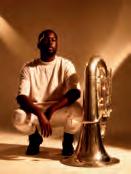
October
2nd Beverly Glenn-Copeland with special guest Elizabeth Copeland
3rd Elis & John - That Feels Significant: Live!
4th A Night for MAP (Medical Aid for Palestinians)
5th The Music of The Lord of The Rings
9th Edwyn Collins - The Testimonial Tour - SOLD OUT

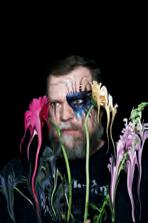
10th Jason Mraz
13th New Town Concerts: Doric String Quartet
14th The Blow Monkeys & The Christians
15th AMPLIFI: Theon Cross | Azamiah | Gaia
16th Harben Kay Quartet: Album Launch
17th John Grant - SOLD OUT
18th Ziggy Alberts

19th Mary Gauthier
22nd Kerry Godliman: Bandwidth
23rd SCO 25/26: Haydn’s Drum Roll
24th Jen Brister: Reactive
25th Breabach
26th An Evening with Johns’ Boys Welsh Male Voice Choir
27th Scottish Ensemble: Shifting Patterns
30th SCO 25/26: Yeol Eum Son plays Mozart
31st Legend - The Music of Bob Marley

0131 668 2019
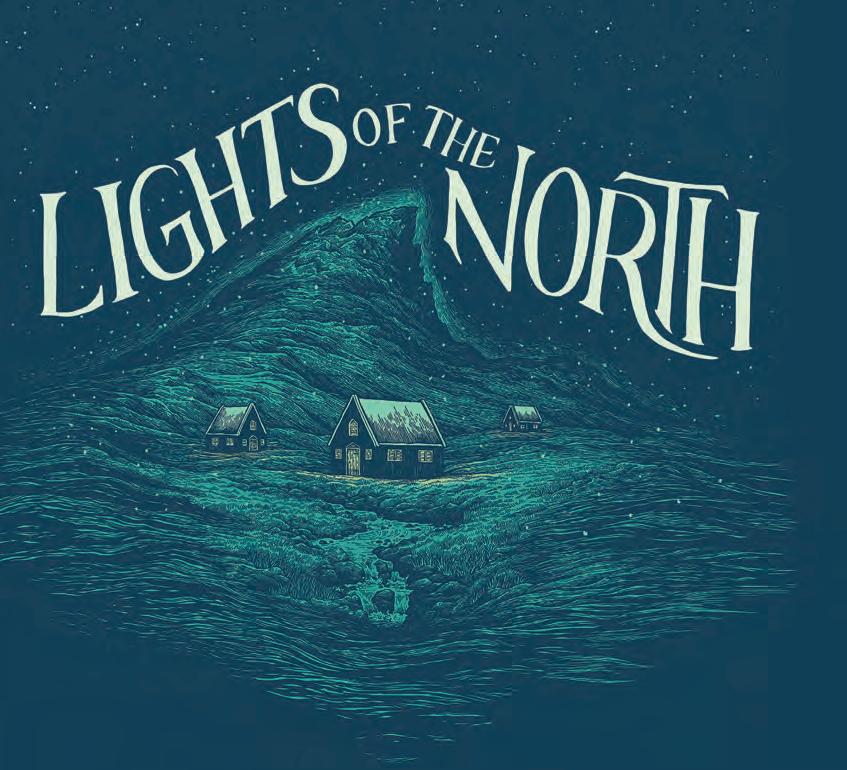


Our column celebrating new music to watch continues with rising Glasgow band Tanzana. They chat to Fiona Shepherd about curating their own regular night at King Tut’s, embracing weirdness and feeling the love from other bands
The Battle Of The Bands is a time-honoured rite of passage for many groups. Rock’n’roll as an imprecise competitive sport. Happy Mondays infamously received the lowest votes when they debuted at Manchester’s Haçienda club in 1985, but were mysteriously elevated to winners by a savvy Tony Wilson. No such shenanigans were required when Glasgow quintet Tanzana played a first-ever gig at their local Lanarkshire contest in 2023 and romped off with the top prize.
Singer Freya Talbot, drummer Karolina Skinderskyte, bassist Katie Hare, and guitarists Lily Findlay and Sarah Dunn were still pupils at Stonelaw High School at the time, entering for kicks with only a few weeks of rehearsals under their belt. Hare wasn’t even sure if she wanted to take part in the competition but was strongly encouraged to do so by a teacher. ‘They just looked at me and said: “You’re doing it”,’ she recalls. The win was a sign that the school friends had something worth cultivating, though they had to ditch their previous name of Lazuli as a French prog-rock band got there first. Keeping the median ‘z’, they renamed themselves Tanzana and have since turned heads with a brace of gig and festival appearances across the central belt, including Eden and ButeFest as well as their own club, Covet, at King Tut’s.
The first rule of Covet club is to book quality bands and create a sense of identity and community; the event is named after their debut and only track release to date with the group consciously wanting to build up a live audience
and library of songs before releasing a single. ‘Covet’ is an impressive calling card, a prowling gothic catharsis which purrs then howls en route to a heroic metal coda which nods to their roots playing Rage Against The Machine covers. Now the band are more likely to cite Radiohead, Massive Attack, PJ Harvey, Cocteau Twins, Air and Zero 7 as influences with a contemporary nod to Big Thief.
‘Covet’ may not be typical of their current setlist but it is an intoxicating gateway song. ‘It started the way I write lyrics now, a bit more whimsical,’ says Talbot. It has also inspired a band look influenced by ‘quite creepy’ pagan folklore and a stage presence they describe as ‘a bit weird and freaky’. Covet will live on as a quarterly gathering where Tanzana can lean into their developing sonics and visuals. In the meantime, they have appearances at Glasgow’s Tenement Trail and Rotterdam’s Left Of The Dial lined up for October.
All the band agree that their teenage bonds make Tanzana something of a sisterhood. But as well as healthy dynamics within the group, they also report nothing but positive vibes from their peers in bands and audiences. ‘Everyone wants to build each other up which is so important,’ says Skinderskyte. ‘It’s not a competition.’ Tell that to the battling Lanarkshire bands left in Tanzana’s wake.
Tanzana play Tenement Trail, Glasgow, Saturday 11 October.
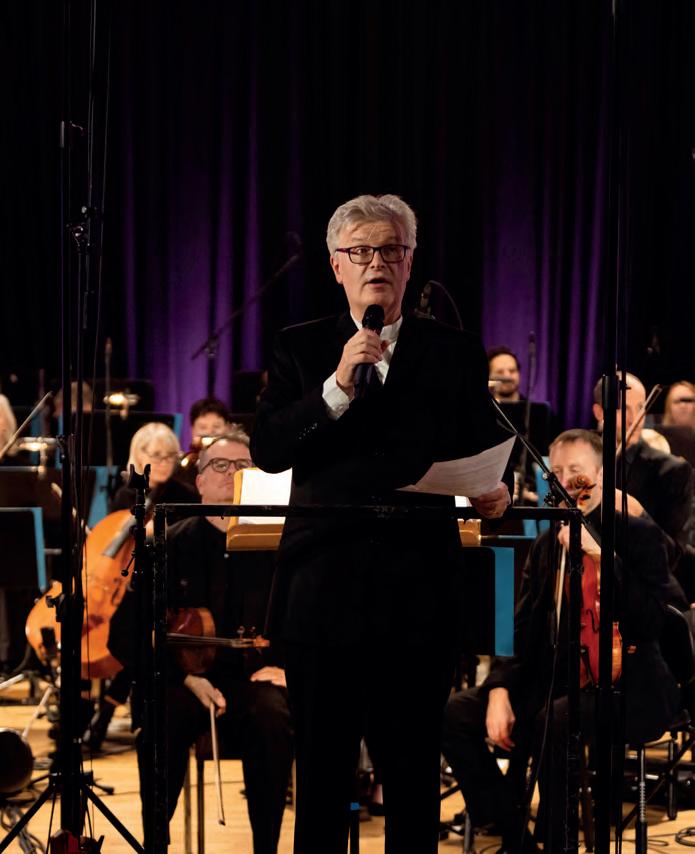
With its strapline ‘a meeting place for music’, The Cumnock Tryst brings together an impressive breadth of music and musicians united by the setting they find themselves in: the East Ayrshire town which proudly gives its name to the community-rooted festival. A historic market town, Cumnock is also where festival artistic director James MacMillan was born, brought up and found inspiration for this event. Now in its 11th year, the festival follows a tried-and-tested four-day template. ‘We’ve got three or four events each day,’ says MacMillan, ‘and we keep them quite short, punchy and compact.’ Lasting for around one hour, with no interval, busy festival audiences can find themselves at performances all day, or dip in and out as suits, whether to see classical, folk or jazz at the festival club.
‘There isn’t really a theme,’ explains MacMillan, ‘as it’s about Cumnock and music-making in the area.’ It’s been fertile ground for brass bands and choral singing and these two strands are still important to the festival, as is contemporary repertoire with The Cumnock Tryst Ensemble playing pieces by MacMillan himself along with music by Judith Weir, Lisa Robertson and Jay Capperauld. ‘Our chorus this year appears with the BBC SSO, with the Scottish premiere of Texan composer Taylor Scott Davis’ Magnificat, for which he’s bringing 20 young Texan choristers along with him. It’s very accessible music from this important figure in the American choral sphere.’ (Carol Main)
Various venues, Cumnock, Thursday 2–Sunday 5 October.
Edward Berger is on a roll. The German-born director’s electrifying 2022 film, All Quiet On The Western Front, won four Oscars and saw him nominated for best adapted screenplay, swiftly followed by last year’s timely papal thriller Conclave, another awards-season favourite. After years of toiling in the closeted German film industry, working on the international scene has been a revelation. ‘It feels like the Berlin Wall came down,’ he says. ‘Suddenly you’re in a candy store and you get to eat bananas and chocolate and oranges and all this stuff. And I want to eat that. It’s just delicious!’
He’s back already with Ballad Of A Small Player, adapted from Lawrence Osborne’s 2014 novel by Rowan Joffé (son of filmmaker Roland and director of 2010’s take on Graham Greene’s BrightonRock). ‘It’s about gambling addicts trying to find a direction in life,’ says Berger. ‘A man who embezzled money in England flees to Macau to start a new life, to create a new identity and be hidden, and then he gambles his life away.’
That man is Lord Doyle, played by Colin Farrell, who spends his days and nights boozing in subterranean casinos. On his tail is Cynthia Blithe, a private investigator ready to confront him with his past, played by Tilda Swinton. Fala Chen (TheUndoing) stars as Dao Ming, a casino employee with secrets in her own backstory who may just offer Doyle a way out.
‘Macau is a really hard place to stay for the duration of a movie, because it’s all about money,’ admits Berger. ‘And that’s basically what the movie is about: the decline of capitalism and trying to be insatiably hungry. You just eat whatever you can, but you’ll never be satisfied. And that’s Macau; that’s our world.’ (James Mottram)
In cinemas from Friday 17 October; on Netflix from Wednesday 29 October.



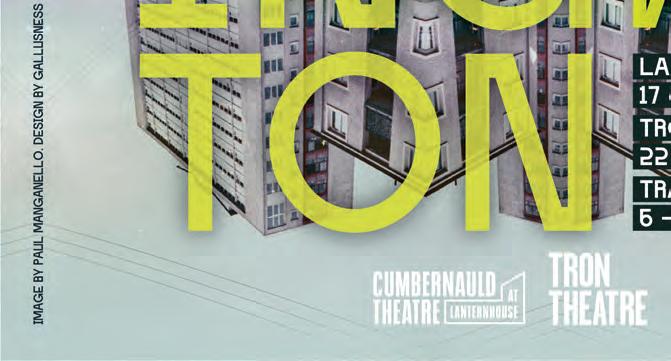

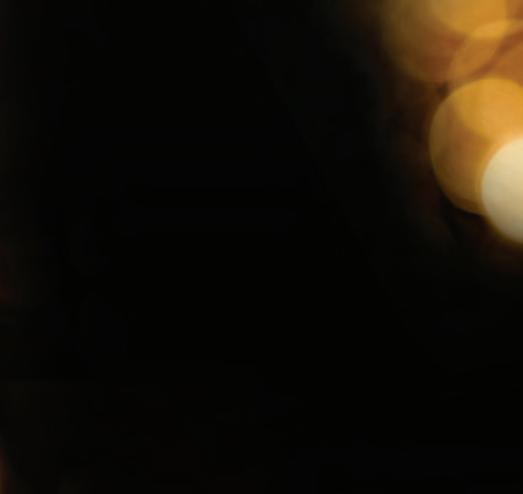
BUY PRESENTS
Shop for gifts in the Botanics Shop





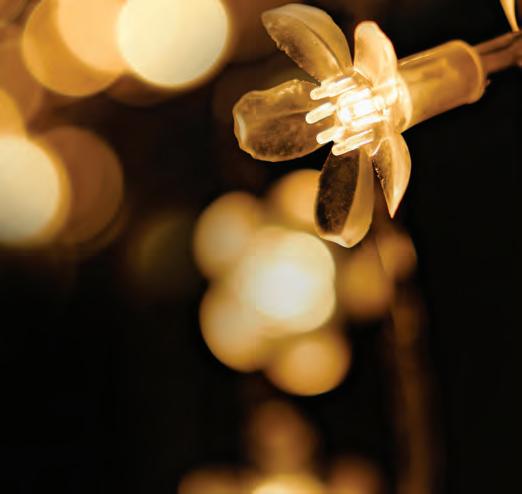

EAT, DRINK AND BE MERRY
Enjoy our festive menus
TREAT SOMEONE SPECIAL
Give a gift of membership Gift a course this Christmas
ENJOY THE GARDEN

Open daily except 25 December and 1 January

Caroline Quentin has been a familiar face on our screens for decades, shooting to fame in the early 90s with laddish sitcom Men Behaving Badly. But she’s also a seasoned theatre performer and, as Zara Janjua discovers, is relishing the prospect of being back in Edinburgh where her career began to tackle a dream role in Anton Chekhov’s The Seagull
Caroline Quentin is on her knees. Literally. ‘I’ll need kneepads,’ she laughs, considering the sheer theatrical gymnastics required to play Arkadina in The Seagull Chekhov’s play is a bruising comedy of vanity and ambition, where ageing stars cling to relevance, young writers storm against the system, and love affairs detonate like stray grenades. In the Lyceum’s new production, Quentin takes on the formidable actress at the heart of it all, a role she has been waiting most of her career to play.
‘I did this play around 38 years ago,’ she says, ‘and I’ve always wanted to play this role.’ Back then she was a young actor on the rise. Now she brings the experience of decades in comedy, drama and theatre to Arkadina, a woman who can dominate a room with her presence and crush her son’s artistic hopes in the same breath. Quentin sees her as part grand dame, part survivor. Asked who Arkadina might be today, she answers crisply: ‘Helen Mirren, Maggie Smith or perhaps Barbara Windsor.’
This production marks the start of James Brining’s tenure as artistic director of the Lyceum, with playwright Mike Poulton adapting Chekhov’s script. For Quentin, it’s not just about the pedigree; it’s about the alchemy of being in the rehearsal room with a cast that includes Forbes Masson, Tallulah Greive, Lorn Macdonald, Dyfan Dwyfor and Irene Allan. Edinburgh audiences will see familiar faces on stage, but Quentin is just as interested in the spark of collaboration as she is in star billing.
If there’s a sense of full circle, it comes from the city itself. Edinburgh is where Quentin’s career began in the early 90s, performing Arthur Smith’s Trench Kiss at the Fringe, meeting the Comedy Store troupe and learning improvisation. Around the same time, she landed the audition for Men Behaving Badly, the sitcom that made her a household name. It was in Edinburgh that she first tested herself against audiences who didn’t give away their laughter cheaply, and it’s here she returns decades later to test herself again with Chekhov.
Away from the stage, Quentin’s life is just as busy. She describes walking, painting and writing as her ‘trifecta of happiness’ and rehearsals in Edinburgh have given her space for all three. Her first book, a Sunday Times bestseller about gardening, proved her popularity beyond acting, and she is now working on her second. The deadline, she admits, is a little wobbly. ‘I’m late in submitting the next 10,000 words,’ she confesses, though she seems more amused than stressed.
Staying in a New Town flat has helped. ‘The lighting is perfect,’ she says, praising the natural brightness that allows her to sketch and paint when she isn’t memorising lines. There’s also the lure of the Highlands, where she plans to escape for a weekend before opening night. Fresh air, walking boots, sketchbook in hand: it’s the kind of reset that keeps her balanced when stage life demands intensity.
Television remains part of the picture too. Quentin appeared in the first season of Bridgerton as Lady Berbrooke, before disappearing from the series as quickly as she arrived. Her theory? ‘I think Lady Berbrooke must’ve died in a scone accident or something,’ she deadpans. It’s the kind of throwaway gag that has always been her trademark, whether in sitcoms or serious roles. For all her successes, from Men Behaving Badly to crime-solving in Jonathan Creek and Blue Murder, Quentin still treats each new project as a challenge. The Seagull is not just another role; it’s a test of stamina, wit and emotional power. And yes, she may need those kneepads.
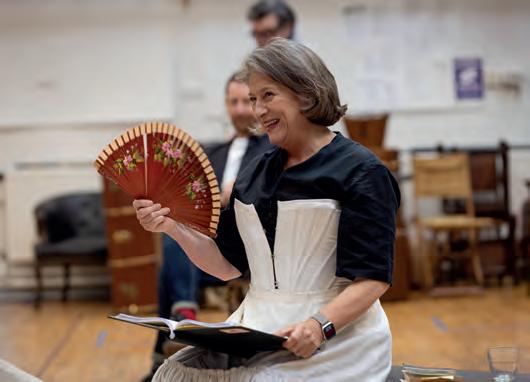
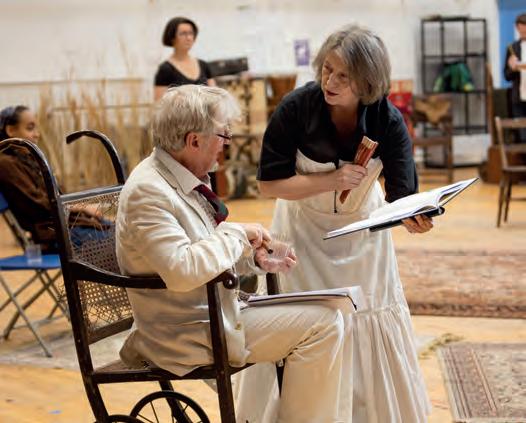

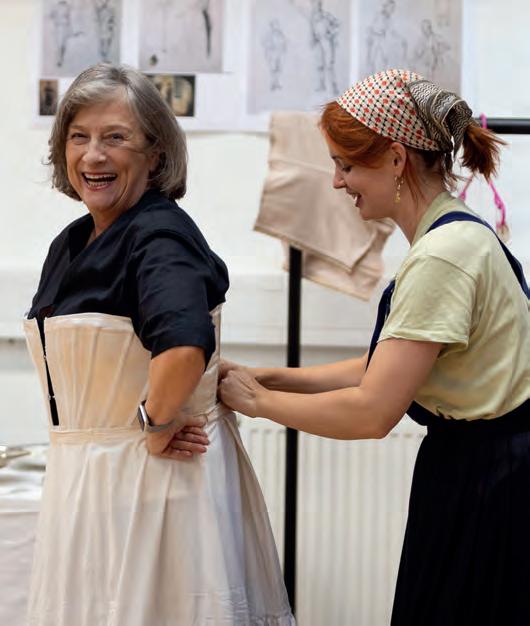


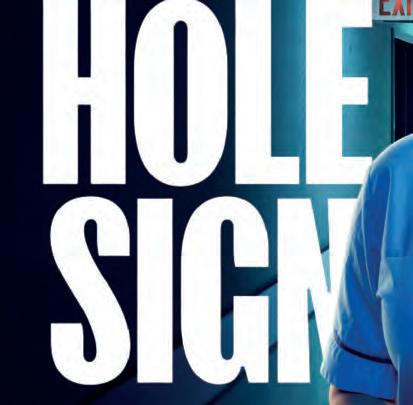






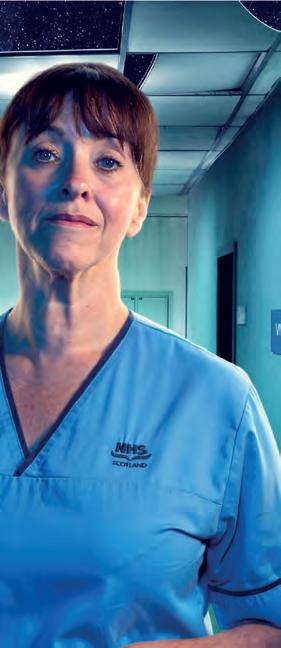



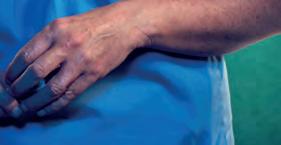







Taking on the melodramatically comic role of Masha in The Seagull, Australian-born Scottish actor Tallulah Greive talks to Afreka Thomson about rebellion, camaraderie and the prospect of being hit by a bus
Tallulah Greive answers the phone with an apology and a laugh, dodging the chaos of rehearsals to find a quiet corner. ‘I’m really excited. I’ve been at the Lyceum once before, in my first-ever stage play, so it feels incredibly special to be coming back.’ For an actor who grew up in Leith, stepping into Masha’s black boots for The Seagull isn’t just a career milestone; it’s a homecoming.
The daughter of musicians, Greive insists she once swore she’d never follow in their footsteps. ‘My big teen rebellion was like, “I don’t want to be a musician”, which is so silly. Most people are like, “I wish my parents would stop trying to make me be a doctor”, and I was like, “no, I don’t want to be an artist”.’
Inevitably, the pull of the arts was too strong to ignore. Growing up, she spent weekends in Edinburgh’s youth theatres before landing her first screen role in CBBC’s Millie Inbetween. Her breakout turn came as Orla in Our Ladies (2019), a performance longlisted for a British Independent Film Award, and she’s since appeared in three seasons of BBC Three teen comedy Boarders. Now she’s circling back to the stage where it all began. For Greive, the camaraderie of live performance is unlike anything screen work can offer. ‘You just sort of come in, do your bit, and go home [on TV], whereas in theatre you’re together all the time, building yourselves as a company . . . there’s a real generosity with everyone’s time and energy.’
First staged in 1896, Chekhov’s The Seagull is a play about yearning: the weight of unspoken words, tangled love triangles and the exhaustion of existence. It’s tragic and hilarious, and that contradiction is baked into Masha, daughter of the estate’s steward. Dressed in black, snuff box in her pocket, her melodramatic flourishes are as cutting as they are comic. Greive connected with her immediately. ‘As soon as I read the Masha parts, I just felt really protective of her. She’s funny, intelligent, smart . . . she doesn’t deserve to be treated like she’s just sad.’ Greive points out that Masha’s character is relatable in her ferocity and grumpiness. ‘Sometimes, very depressed people can also be incredibly funny. I bet we were all funny to our parents when we were angry teenagers; she’s like that’.
Sharing the stage with theatrical heavyweights such as Caroline Quentin, Forbes Masson and John Bett, Greive insists everyone’s muddling through together. ‘So often in theatre, you watch other people and you’re like, “oh, they really know what they’re doing” and then they come off stage and say, “I don’t really know what I was doing out there.” It’s quite lovely to realise everyone’s figuring it out.’ Unlike her eternally emo character, she’s been keeping the cast buoyant. ‘I pitched the idea that we put some music on in the dressing rooms and now everyone has a little dance, just to end the day on a different note.’
Rehearsals are still in the early stages, but opening night looms and Greive is surprisingly nervous. ‘There’s a famous quote where the actress is on her way to the theatre and she’s like, “do I want to get hit by a bus right now?” and only just comes out on the side of no. That’s exactly how it feels,’ she says, laughing. Maybe she’s right to be nervous: according to Chekhov himself, ‘the stage is an area where it is impossible to walk without stumbling.’ We can’t wait to watch Greive prove him wrong.
The Seagull, Lyceum Theatre, Edinburgh, Thursday 9 October–Saturday 1 November.
I bet we were all funny to our parents when we were angry teenagers “


Night Waking (and bottom from left), Moving Cloud, These Mechanisms, Harben Kay

Get yourself away from the central belt and out into various parts of Scotland where the cultural landscape is just as rich and varied. Among the upcoming music highlights this month are a celebration of half a century of ska mayhem, a pop star who thoroughly dominated the charts during 1984, and a rapidly rising jazz saxophonist with their quartet and a homecoming gig
BEN HART
Naming your show The Remarkable Ben Hart could arguably be setting someone up for a fall, but the ever-popular illusionist now has hefty experience and a blazing talent to be considered a safe pair of hands.
n Tivoli Theatre, Monday 20 October.
DUNDEE
BAD MANNERS
Led by the irrepressible Buster Bloodvessel (and his massive tongue), the iconic ska band are rampaging around the nation on their 50th anniversary tour. Bone up on the likes of ‘Lip Up Fatty’ and ‘Special Brew’ before you head along.
n Beat Generator, Thursday 2 & Friday 3 October.
THE FLOCK/MOVING CLOUD
Choreographed by Roser López Espinosa and Sofia Nappi, these two works from Scottish Dance Theatre are inspired by bird migration (The Flock) and fuse trad music with modern movement (Moving Cloud).
n Dundee Rep, Friday 31 October–Wednesday 12 November.

NIK KERSHAW
Wouldn’t it be good to catch an 80s UK-chart legend live on his Songs, Stories & Silliness tour? The title sums up what you’re going to get here: there’s no riddle about it.
n Carnegie Hall, Sunday 12 October.
NIGHT WAKING
From the Sarah Moss novel comes this production focusing on a sleep-deprived mother with a toddler, hyper sons and an ornithologist husband who hasn’t spotted her misery. A discovery in their garden changes everything. n Eden Court Theatre, Wednesday 8 October.
THESE MECHANISMS
Celebrating the functions and limits of the human body, this dance piece was conceived and created by octogenarian Christine Thynne (alongside Robbie Synge). And now she’s touring the nation with it.
n Mull Theatre, Thursday 30 October.
HARBEN KAY
Star saxophone soloist at Scottish National Jazz Orchestra, this gig launches Kay’s third album, The World I Live In, featuring Peter Johnstone (piano), Ali Watson (double bass) and Alyn Cosker (drums).
n Perth Theatre, Friday 17 October.
ÒRAN
A modern retelling of the Orpheus myth, this oneperson Wonder Fools show is the rapid-fire tale of a man attempting to rescue his best pal from the underworld. But even if Hades gives this mission a big thumbs-up, there surely must be a cost?
n Pitlochry Festival Theatre, Friday 10 October.
Tall Stories are the definitive go-to folks for taking Julia Donaldson’s tales into theatres, and this Olivier-nominated adaptation is the unmissable story of star-crossed aliens.
n Macrobert Arts Centre, Thursday 16–Saturday 18 October.

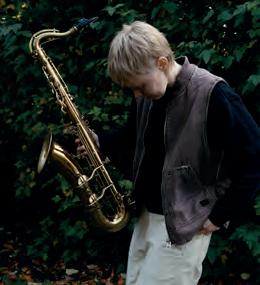


7 - 29 AUGUST 2026
THE PIPES, ALL 200 OF THEM, ARE CALLING.
In 2026, A Call to Gather invites audiences to unite at the Edinburgh Castle Esplanade for an unforgettable evening of spectacle, storytelling, and celebration.

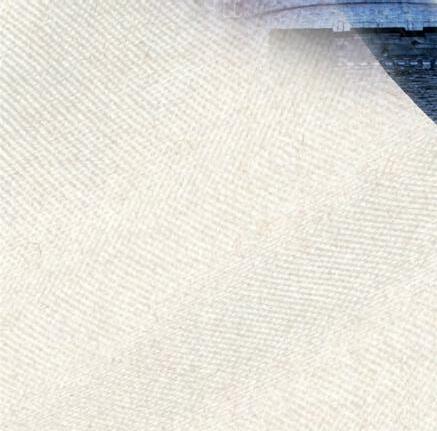


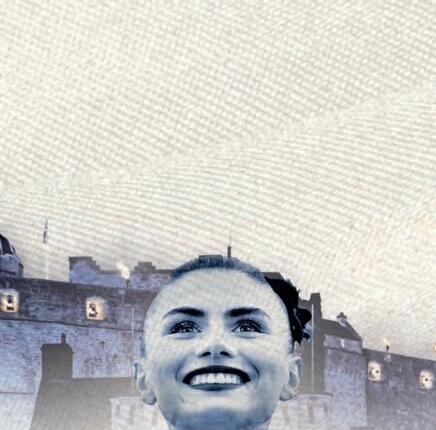


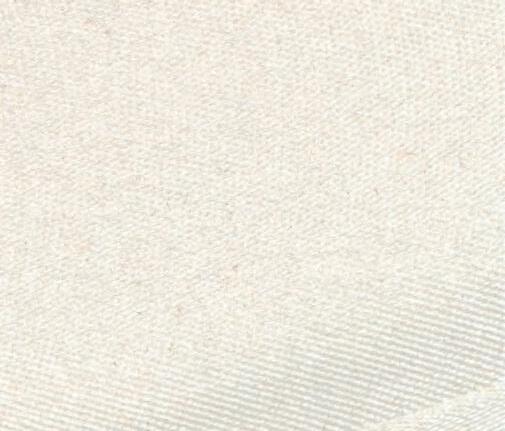
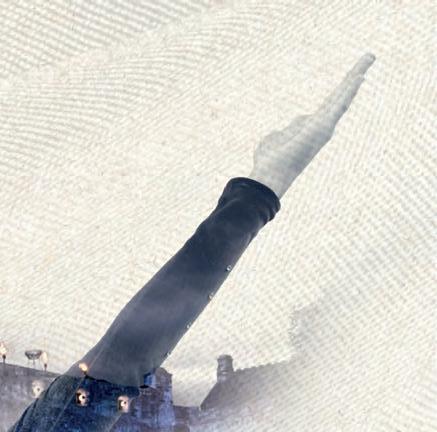
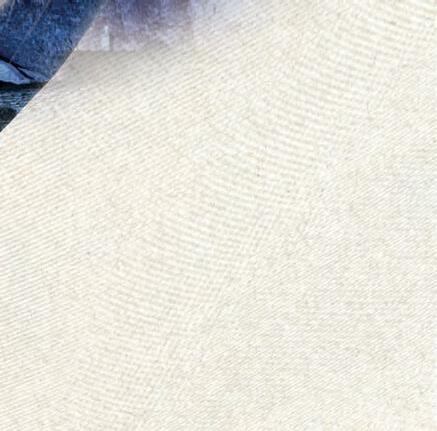



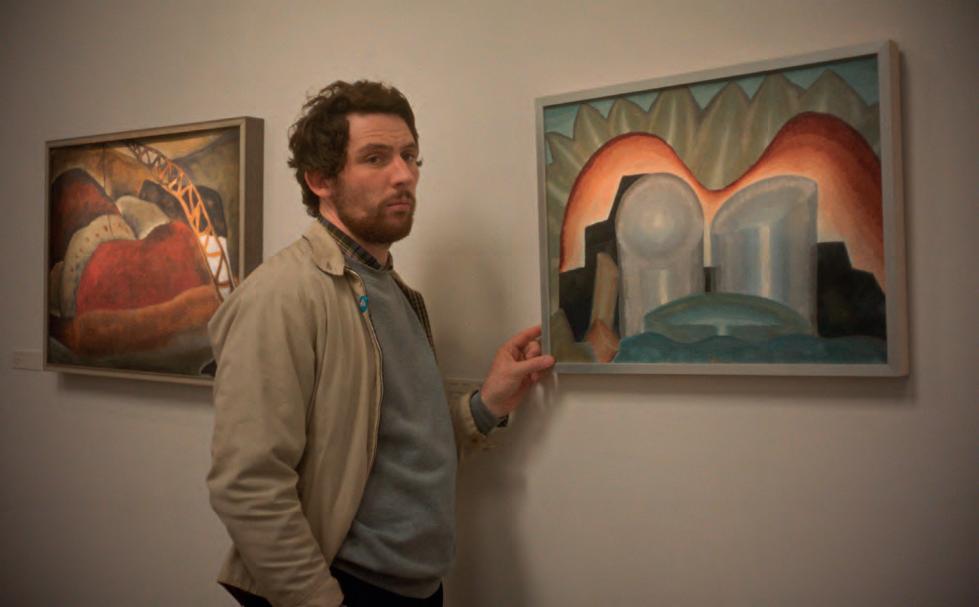

JIn subversive heist movie The Mastermind, Emma Simmonds praises emerging star Josh O’Connor for yet another classy turn, this time as an unlikely robber
osh O’Connor is really having a moment. The 35-yearold English actor who came to our attention in 2017’s God’s Own Country feels like he’s everywhere right now. Following last year’s Lee, LaChimera and Challengers, he’s soon to be seen in WakeUpDeadMan, the third instalment of the phenomenally popular KnivesOut series, before canoodling with fellow hot property Paul Mescal in The HistoryOfSound. Nominated for the Palme d’Or at this year’s Cannes, TheMastermind, from the great American director Kelly Reichardt, marks another fine addition to O’Connor’s increasingly classy CV.
Described by its director as an interrogation of the ‘folly of man’, the film is a subversive spin on the classic heist picture. Set in leafy Massachusetts in the early 70s and embellished with the era’s cinematic style, its faded retro aesthetic lends it the look of an unearthed gem (Wim Wenders’ TheAmerican Friend was a particular visual influence). Once again Reichardt works wonderfully with cinematographer Christopher Blauvelt (who has shot all her films since 2010’s Meek’s Cutoff), as the pair cast a discreetly critical eye over proceedings.
O’Connor plays James Blaine Mooney, aka JB, a mild-mannered, unemployed carpenter from an affluent background who, right under the nose of his family, plots an art heist, apparently out of boredom. JB’s snooty parents are played by Bill Camp and Hope Davis, with real-life siblings Sterling and Jasper Thompson as his young sons, and rocker and LicoricePizza alumnus Alana Haim playing JB’s oblivious wife Terri, who seems to exist in a different dimension entirely as her husband goes about his plans.
JB assembles a crew that includes the reluctant Guy (Eli Gelb) and wild card Ronnie (Javion Allen), with the target a series of abstract paintings by the celebrated American artist Arthur Dove (a favourite of Reichardt’s). Despite his casual cocksureness, our hero evidently has no idea what he’s doing, and a series of disasters ensues, from the unexpected presence of a gun during the robbery, to the intervention of a cannier criminal gang (one of whom tells JB, ‘honestly, I don’t think you’ve thought things through enough. No offence’). The movie’s second half follows JB on the run. Ripped from the comforts of his family, which

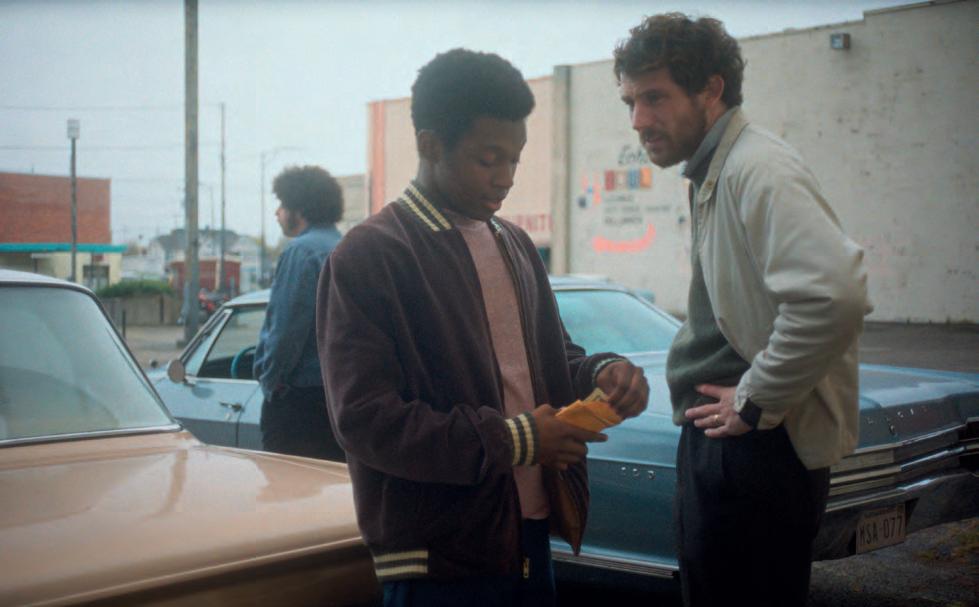
had included continued access to mummy’s chequebook, he holes up with a pair of gobsmacked friends, Fred and Maude (very welcome appearances from John Magaro and Gaby Hoffmann), who are rudely awakened from their almost comically quiet life in the country. Maude is understandably wary but Fred seems more than a little impressed, while later on an increasingly isolated JB is forced to resort to even more grubby crimes.
Attired like a not-especially successful academic, the always excellent O’Connor brings affability to this apparently unassuming protagonist, who is far from your usual cinematic crook, with Rob Mazurek’s sublime jazz score evoking far cooler customers. And O’Connor is superbly supported by the esteemed ensemble, who were instructed to watch the 1974 Jeff Kreines documentary The Plaint Of Steve Kreines As Recorded By His Younger Brother Jeff to get into the mindset of the time.
Although she’s known for her quietly insightful dramas, which include Old Joy, Wendy And Lucy and Certain Women, it’s not uncommon for Reichardt to play with
genre, refashioning traditions to suit her needs in the western Meek’s Cutoff and the enviro-thriller Night Moves
Inspired by the neo-noirs of Le Samouraï director JeanPierre Melville, especially Le Cercle Rouge and Un Flic as well as a real-life heist in the Massachusetts area, Reichardt toys enjoyably with expectations throughout. The opening scene shows JB casing the museum before it’s revealed he’s with his family, the deceptively slick manner in which he executes his initial theft gives way to serial incompetence, while JB’s childcare woes have an irresistibly modern flavour.
If the content can be classified as farce, the film is played and styled straight and has an almost fable-esque feel. Instead of building to the heist itself, The Mastermind contemplates the consequences of JB’s actions and documents his inevitable downfall. It’s a fun, fascinating and very distinct spin on the material, while the ironic, 70s-sounding title is the cherry on the cake.
The Mastermind is in cinemas from Friday 24 October.
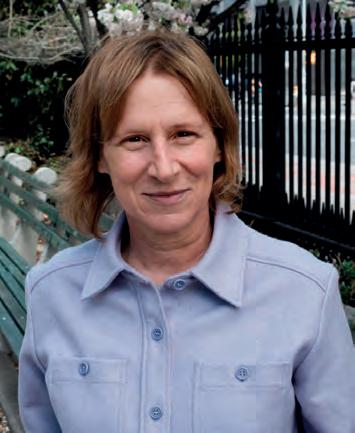

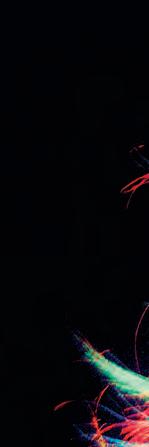


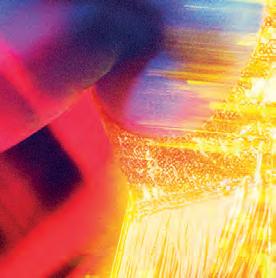
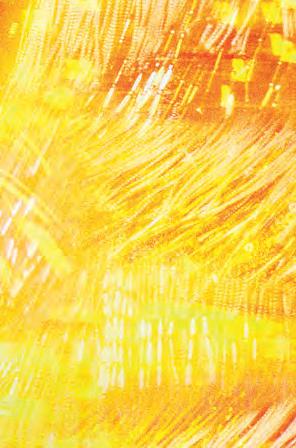



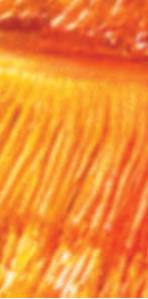



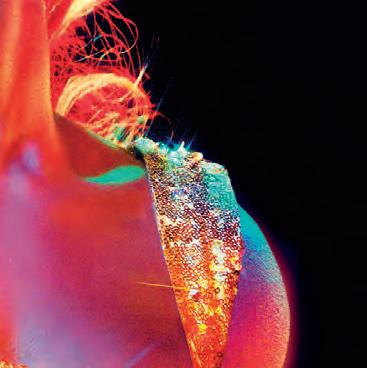




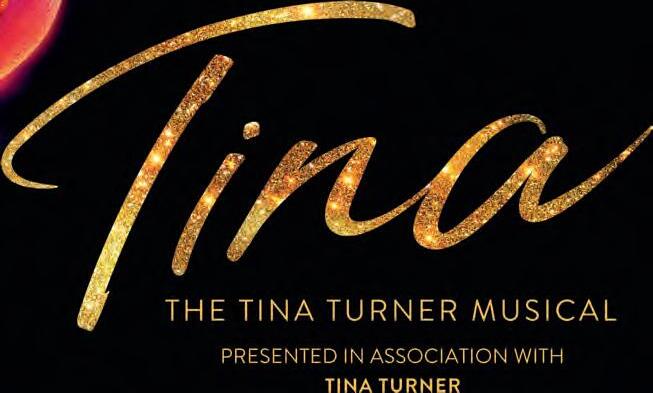










Absence is everywhere in Matthew Arthur Williams’ new series of photographs. It’s there, and not there, in the barren grasslands where empty chairs sometimes sit in his pictures. When he appears (naked, posed, in repose), Williams embraces the solitariness in a display which is not so much an Eden-like retreat as a contemplation in search of himself. The heart of this body of work, made between 2024 and 2025, comes in ‘Another Allegory’, a 21-minute film developed during a residency at Cove Park and first seen in Nottingham in August. Here, oblique little fragments of music, image and spoken word occupy the spaces without ever overwhelming them. Shot in hazy home-movie style 16mm, the camera lingers on secret spaces that don’t look much in daylight; but after dark, who knows?
Images of chopped-down trees alternate with close-ups of Williams’ collaborator Blaize Henry playing violin. A bare-torsoed young man is on a steel drum. A photograph of one of the film’s inspirations, late American composer Julius Eastman and his then lover, poet R Nemo Hill, flashes up. Underground electronicist Cleyra’s mournful reconstruction of Jill Scott’s song ‘Cross My Mind’ provides an underscore; it is from this that the line ‘I was just thinking about you’ becomes key to everything on and off screen. Throughout, a storm attempts to wash everything away. With nothing made explicit, what’s left is a sense of yearning in a work loaded with desire, where the only thing to hold on to is rain. (Neil Cooper) n Stills, Edinburgh, until Saturday 18 October.
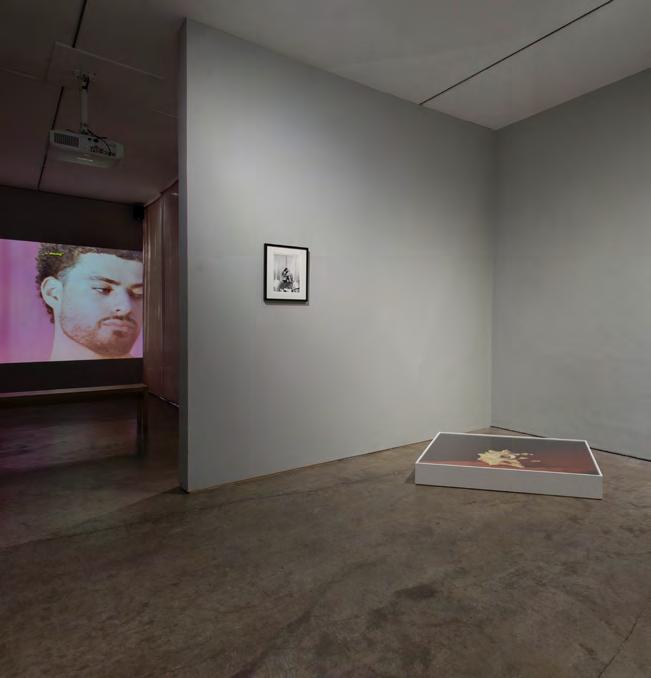
aeh ert • t hea tre•
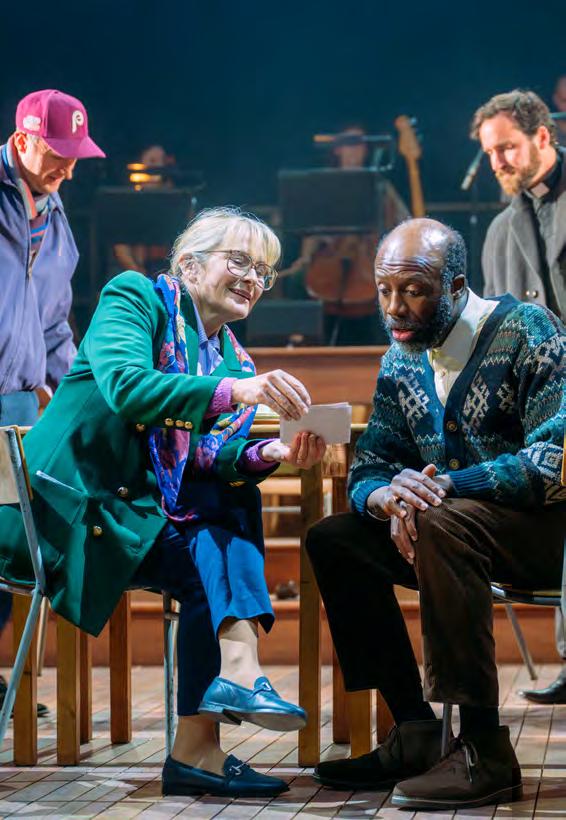
Heralding the re-opening of Glasgow’s iconic Citizens Theatre, Small Acts Of Love is a charming, if occasionally sentimental, study of the aftermath of the Lockerbie disaster, tracing the lives and connections of both locals and victims’ families. With an unremarkable yet pleasant and eclectic score by Ricky Ross, it uses musical numbers to consolidate the emotional power of individual stories, weaving towards a finale that suggests community can heal even a huge and public trauma.
The explosion of a Pan Am flight over Lockerbie in 1988 left emotional scars across the community, and Frances Poet’s script traces the anguish and the redemption. It uses conversations with people who were involved in the immediate aftermath and subsequent transatlantic connections, creating a patchwork of lives well-lived and unexpected loves.
With an ensemble cast that swap roles with ease and hold the emotive away from the melodramatic, the script roves across various characters and events. It demonstrates how small acts of love by the Lockerbie people (treating the victims’ bodies with respect, cleaning the clothes that had been scattered across the countryside by the explosion, piecing together journals, and discovering lost photographs) allowed the families to find some closure.
Fragments of stories cross over and interweave: the priest battles with his devastation, and presumably his faith, before achieving consolation in those around him; an older Lockerbie resident finds love with the parent of one of those killed; in a secret ritual, a mother grieves both her own child and a victim. The broad approach focuses on the compassion and the loss experienced, forming a moral meditation on human resilience and how even a catastrophe can foster solidarity. Refusing to exploit the events for easy tragedy, it is a restrained testament to kindness that appropriately, if inevitably, lacks a powerful dramatic punch. (Gareth K Vile) n Citizens Theatre, Glasgow, until Saturday 4 October.
Although it can derail the lives of those affected by it, Tourette syndrome is seldom taken as seriously as it deserves, not least due to the sometimes sweary nature of sufferers’ involuntary outbursts. A biopic of prominent Tourette’s campaigner John Davidson, I Swear combines an earnest interrogation of this neurodevelopmental disorder with amusing episodes, and benefits from a barnstorming turn from Robert Aramayo in the lead.
Set against the unglamorous backdrop of suburban Galashiels, and kicking off in 1983, the film introduces a young John (superbly played by Scott Ellis Watson) as a confident, capable lad making the transition from primary to secondary school with ease. When John’s tics start up, in a time before Tourette’s was known and understood, it’s assumed he’s merely ‘acting the fool’, effectively exploding his academic and footballing prospects and his parents’ relationship, when his father walks out. Shirley Henderson plays John’s stiflingly negative, martyr-like mother, while Maxine Peake is the mum of a friend, who becomes John’s rock, and Peter Mullan is his kindly employer. With Aramayo taking over as the adult John, the film recreates his inevitable brushes with the law, before his re-invention as a trailblazing champion of the Tourette’s cause.
Writer-director Kirk Jones (WakingNed, NannyMcPhee) helms competently if anonymously, while the film is structured in a somewhat formulaic fashion with a sentimental score and predictable musical choices. However, the script is compassionate, wise and witty and the performances are exceptional. Best known for his small screen work (including The Lord Of The Rings: The Rings Of Power), Aramayo embodies Davidson to a quite astonishing degree, with his tics seemingly emerging from a place deep within.
I Swear is a tremendously moving tale of overcoming adversity that’ll break your heart before piecing it right back together again.
(Emma Simmonds)
In cinemas from Friday 10 October.




Did you know lobsters pee out of their faces? That’s just one of the curious and fascinating facts blazoned up on screen as we file into Mark Thompson’s relentlessly educational and sweetly delivered show. Thompson, a science broadcaster and BBC regular, has the avuncular air of your favourite teacher and he packs an enormous amount of kid-friendly learning into a lecture-length slot, covering everything from the effects of sleep deprivation to sonic booms. There are plenty of tricks with the wow factor: he makes beakers glow green, lab flasks puff with smoke, and balloons (and his hand) burst into flames. He demonstrates why hydrogen is not used at birthday parties, creates a fire tornado out of a rotating stove and lets us see aerodynamic engineering in action through the medium of toilet roll. His explanations are well-paced and logical, and you can tell they are pitched at the right level because the kids are able to answer most (but not all) of his questions correctly.
This is a good deal less chaotic than some STEM extravaganzas and would be perfect for children who like their theatre a little bit calmer. That said, despite his mostly gentle presence, Thompson (along with many other entertainers) does like to tease children hard when they come onstage. Some kids are fine with that; others might not be. While it’s all done in good faith (with dad humour) in the interests of adding a little psychology into the STEM mix, maybe the grown-ups should stay the butts of jokes instead. (Lucy Ribchester)
Adam Smith Theatre, Kirkcaldy, Saturday 11 October; Beacon Arts Centre, Greenock, Sunday 12 October; reviewed at National Museum Of Scotland, Edinburgh.




























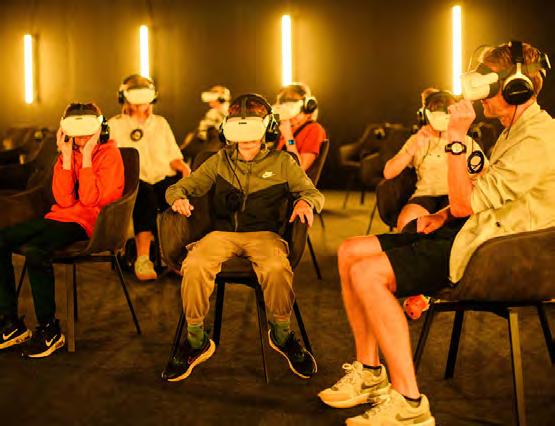
As a learning tool about Ancient Egypt, Tutankhamun: The Immersive Exhibition solidly hits the mark. But Kelly Apter finds that as an innovative encounter which takes you to 1922 and 332BC, it is simply phenomenal
For somebody who died before he was 20, Tutankhamun made an awfully big splash. Although what he achieved in that short lifetime has less to do with his longevity than how his body was preserved and buried. Discovered in 1922 by British archaeologist Howard Carter, Tutankhamun’s tomb turned the eyes of the world towards Egypt, and our fascination with the ‘boy king’ has remained strong.
That said, those entering this immersive wonderland are likely to have varying amounts of knowledge. Aware that ticket-buyers will range from ‘Tutan-who?’ types to Egyptology obsessives, the curators have worked hard to give this exhibition a ‘something for everyone’ feel. Filled with information panels, the first few rooms may be lost on children, and a little word-heavy for some. But glean what you can and move on, because it’s all part of a layering effect.
First come the names, dates and mythical gods of Ancient Egypt, but reasonably quickly we’re on to the artefacts. Many of them are replicas, but regardless of authenticity there is much to learn here, including a model deconstructing the infamous tomb. And when it comes to the real items, it’s hard to get your head around seeing a mummified falcon that was wrapped up as an offering or a musical instrument that was played in 332BC.



All of which is the perfect grounding for what comes next, as past and present collide in kaleidoscopic colour. So many historical artefacts have a sandy exterior, it’s hard to imagine what people living thousands of years ago actually saw. But stepping inside a vast room displaying a 360°, eight-metre high, 30-minute film filled with vibrant shades, you get the idea. Sitting on a comfy stool, animated images of pharaohs, buildings and animals flash towards and past you, towering overhead and scuttling beneath your feet. Newspaper clippings from Carter’s 1922 expedition ground fantastical myths in reality, and if the experience ended there, you’d leave with a smile. But it’s far from over. Three more sections await, consolidating your knowledge of Ancient Egyptian life and beliefs in increasingly fun ways. After a briefing from staff (all of whom are friendly and approachable) we sit in a swivel chair and pull on VR goggles and headphones. If you spend half your life gaming with a virtual-reality headset, this may feel par for the course. But for anyone new to
the experience, this is mind-blowing as you fly over rivers alongside a bird in motion, and swoop down into valleys to encounter giant statues. Looking up, down and around as you spin in your chair, it really does seem as if you’ve entered a different world.
Then we’re off to another room to learn about mummification via impressive holograms, before pulling on a VR headset once again to delve inside Carter’s tent. Hilarious, unsettling and fascinating in equal measure, this final chapter has you avoiding fellow visitors (who are now avatars of Carter) and discovering ancient objects, tools and more, in what once looked like an empty room. A quick stop in a (free) photo booth where you’re turned into a pharaoh seals the deal on this fun, educational and brilliantly staged exhibition
Tutankhamun: The Immersive Exhibition, SEC, Glasgow, until Sunday 26 October.
This was a fond tribute to the life of one of Scottish stand-up’s modern greats who sadly passed away in August. No fewer than 15 acts came out to hail Gary Little and share affectionate tales of the big Glaswegian.
Several wore double denim in homage to his preferred sartorial choice, while others noted his intolerance of bad timekeeping; compere Jay Lafferty fined anyone who exceeded their five-minute spot, with proceeds going to the MCR Pathways mentorship charity that Little participated in and which this night was in aid of. Most happily ran slightly over and paid their money alongside their respects.
Over two and a half hours, a portrait emerged of a man who loved dogs, with Chris Forbes and Viv Gee recalling bonding with him over canines. And Little may have been careful with his cash but he knew how to enjoy a foreign jolly as Ray Bradshaw and Raymond Mearns attested. His time spent in prison was good for a never-ending succession of gags. But his nurture and encouragement of newer comics also emerged, with both Rosco McClelland and Liam Farrelly reliving terrifying formative gigs they’d done at his behest in Barlinnie Prison, while Julia Sutherland shared warm memories and footage of their stage play Jail Mates
Still Game star Gavin Mitchell offered the definitive account of how he and Little made the Christmas of one Japanese fan of the sitcom. And Scott Agnew held the room rapt with a hilarious story of ill-advisedly making a move on the older comic and their later, rascally exploits on the road. The night concluded with recent video of the man himself performing, typically storming with a punchy flight of fantasy about Texas’ insane sex-toy possession laws. (Jay Richardson)
Seen at The Stand, Glasgow.
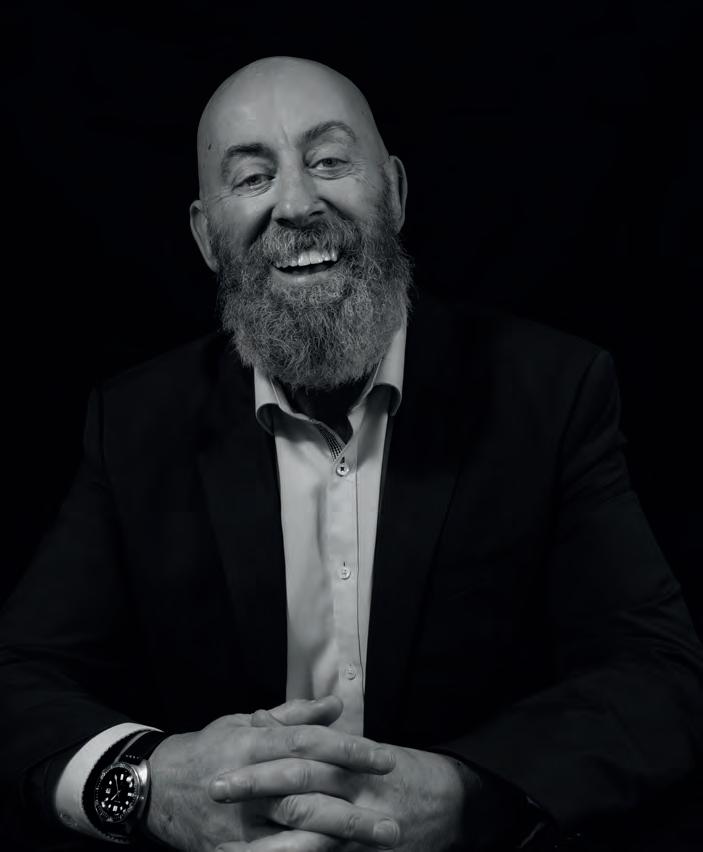
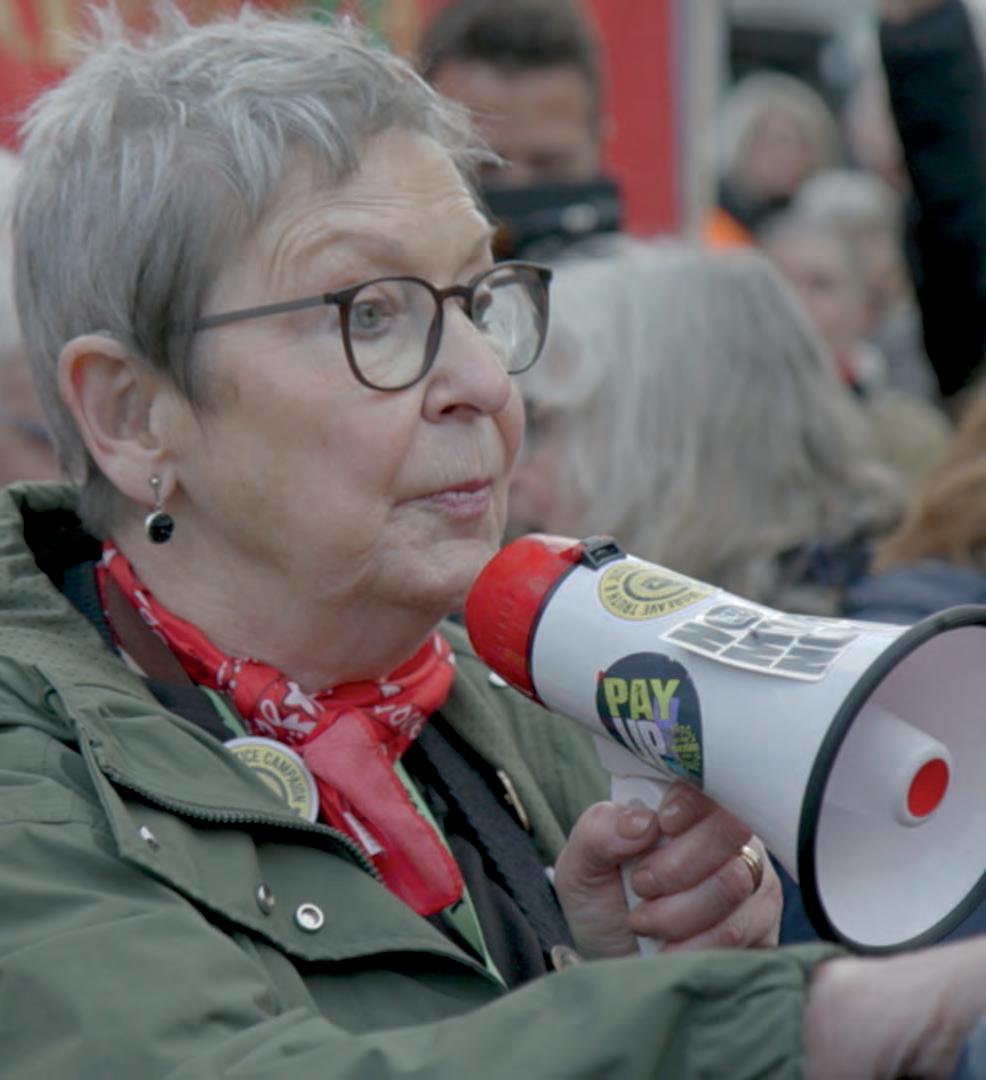
From The Ragged-Trousered Philanthropists to I, Daniel Blake, the working-class struggle has almost exclusively been viewed through a male lens for more than a century, while the popular discussion around feminism has stubbornly centred its focus on white, middleclass women. IronLadies offers an antidote to both issues in a comprehensive discussion of the Women Against Pit Closures organisation, which broke with gender conventions on picket lines to support the miners’ strike in the mid-80s.
Shot as a series of talking heads featuring many of those involved, the documentary offers an oral history of that era, beginning with the movement’s origins and highlighting casual police abuse, vitriol from Margaret Thatcher, and encounters with Bruce Springsteen (who famously donated £20,000 to the cause).
Interspersing these vividly told stories are snippets from presentday activism, showing how the spirit of these women can be found in contemporary movements.
Daniel Draper (who previously documented the work of leftleaning political figures such as Tony Benn and Jeremy Corbyn) brings out the best in his subjects, emphasising their political nous and grit. He’s created a vital archive that connects the crushing of unions in the 1980s with our current era of zerohour contracts and precarious living standards. Yet it’s also a dry experience crying out for a more engaging presentation style. In foregrounding working-class women, this is a must-watch for anyone searching for a more inclusive account of protest history, but its dearth of formal inspiration leaves it destined to preach only to the converted. (Kevin Fullerton) In cinemas from Friday 10 October.

Not to be confused with the time Glasgow almost used the demolition of council flats for part of a dramatic Commonwealth Games opening ceremony (public outcry made them park that idea), what did go ahead was the filming of Sony Bravia’s 2006 ‘Paint’ advert. Artist Aqsa Arif and her family were asked to move out of their high-rise council flat in Prospecthill Circus on Glasgow’s Southside, so that Sony could film their spectacular £2m ad, featuring dancing fountains of paint.
Like a technicolour Ballardian nightmare, that TV commercial features in Arif’s film Raindrops Of Rani, part of a sumptuous, unsettling exhibition of the same name. Arif is a Scottish-Pakistani filmmaker/interdisciplinary artist based in Glasgow and this new body of work weaves together South Asian mythology and tradition with the aesthetics of Pakistani cinema (or Lollywood).
Textiles, embroidery and screenprints line the walls of Edinburgh Printmakers’ upstairs gallery, a glistening swirl of silhouetted hands, gold brocade, turquoise abalone shell and plastic rubies. Braided hair is a motif, a symbol of the interwoven cultures of Arif and her family who arrived in the UK from Pakistan as asylum seekers. Arif references the ancient Punjabi doomed love story of young Heer, reimagining her now living in council accommodation, unsure whether outside is safe.
The comforting and the grotesque sit side by side in this richly flavoured yet bitter dish, where soothing tabla drumming and glossy, tactile surfaces mingle with stressful images of floods, creepy clowns and chaos (the clowns nod to a sprinting, red-nosed guy that appeared in the Sony advert). Created in a sometimes hostile, often indifferent environment, Arif offers up an inviting, warm show, kicking gracefully against the external forces of racism and finding solace in fantasy. (Claire Sawers) Edinburgh Printmakers, until Sunday 2 November.
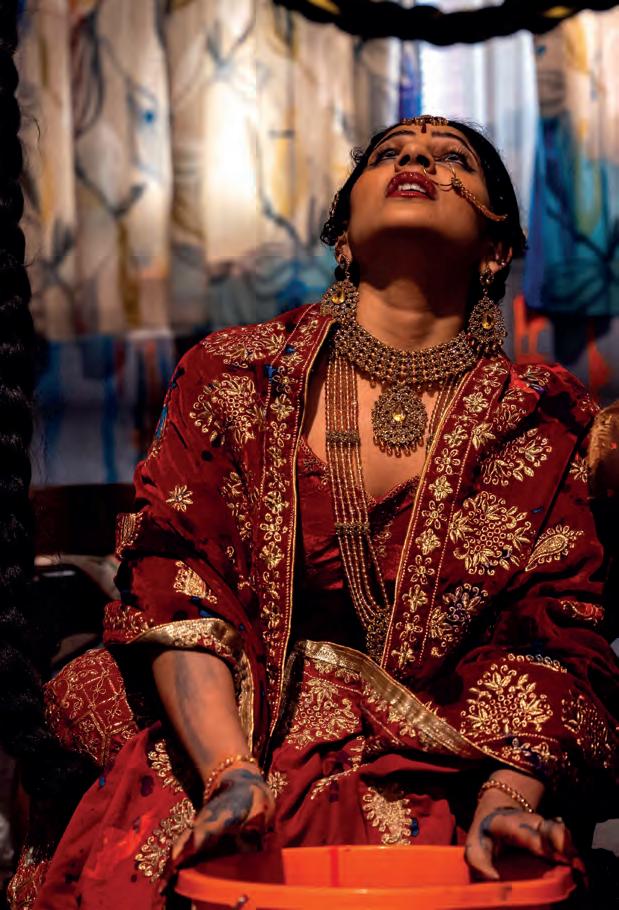
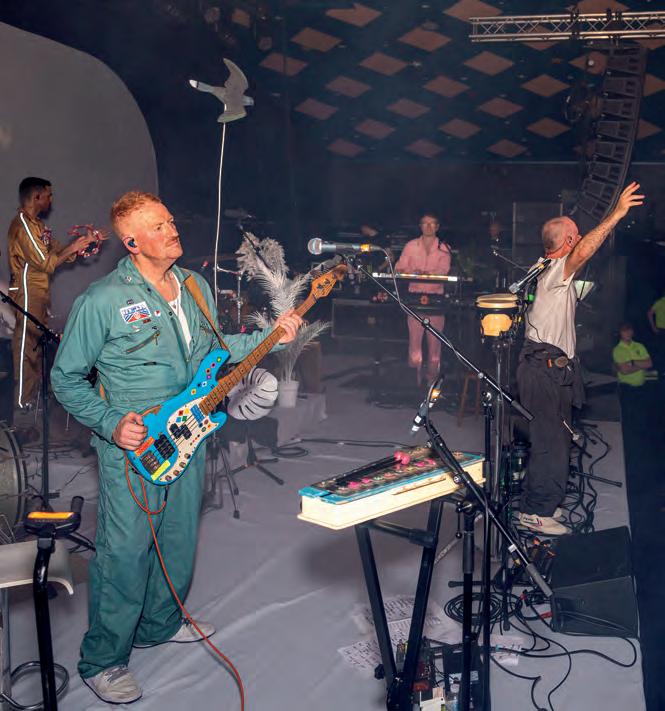
‘I think we’ve all gotten better looking,’ asserted The Beta Band frontman Steve Mason with a smile. It had been 21 years since the group’s last performance, and there was a palpable feeling of excitement within the four sweaty walls of the Barrowland Ballroom, where it really did feel as though we were on the brink of witnessing something significant.
An eclectic DJ set from a mysterious masked figure filled the room with an air of suspense before the foursome emerged, 20 minutes behind schedule, sounding as though they had been rehearsing every week for the last two decades. Cascading through hits from their fairly compact discography, the boiler suitclad Fifers employed bongos, cowbells and whatever else they could cram on stage to build a wall of sound, brick by brick, on every song. DJ, sampler and general all-rounder John Maclean was on particularly fine form, driving the band’s trademark zany sound forward all evening and providing a constant source of enthusiasm and energy that was lapped up by an understandably jovial midweek audience.
Though it’s easy to feel sceptical about the revisionism and nostalgia that appears rife in modern culture, only the most cynical of critics could feel unmoved watching The Beta Band reunited with their cult followers, particularly as the anthemic ‘Dry The Rain’ rang out around the ballroom. ‘Catch them before they’re holograms’ was the strapline for this tour, though we can only hope that this long-awaited return inspires Mason and co to fend off the bots for a little longer. (Danny Munro)
Reviewed at Barrowlands, Glasgow.











R SATURDAY 2025
Saturday 29th November 2025




Fair Saturday is a global cultural movement creating a social and empathetic response to Black Friday. All kinds of cultural events, each supporting a social project, charity or the community. Music, dance, storytelling, fine art, photography, printmaking, craft, workshops, wellbeing, nature, family activities, and community events. Will you join us?
For more information or to register your event, visit standrews.fairsaturday.org






























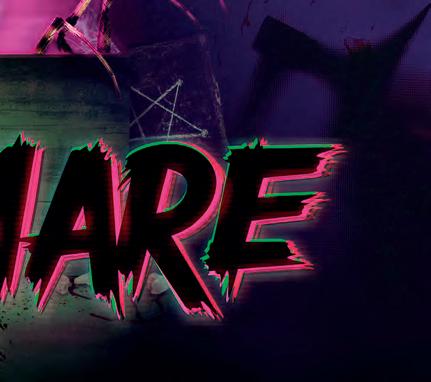

























If you fancy getting out and about this month, there’s plenty culture to sample such as an acclaimed actress returning to the stand-up stage, an Irish institution reaching a big birthday and a new Glasgow festival embedded in the city’s DIY ethos
TAI SHANI, FLORENCE PEAKE AND GEORG WILSON
Jupiter Artland celebrates its new status as an openall-year attraction, the autumn/winter programme launching with exhibits from three major artists. n Jupiter Artland, Wilkieston, starts Saturday 11 October.
KERRY GODLIMAN
The real star of Ricky Gervais’ After Life and Derek now has a Spinal Tap movie on her CV, and is back on live stages for Bandwidth, a show about how a middle-aged woman handles the modern world.
n Queen’s Hall, Edinburgh, Wednesday 22 October.
RIVERDANCE 30: THE NEW GENERATION
Marking its 30th anniversary, the Irish dance sensation appropriately kicks its way into 30 venues across the UK, including two up here.
n Edinburgh Playhouse, Friday 10 & Saturday 11 October; King’s Theatre, Glasgow, Monday 13–Friday 17 October.
EDINBURGH SPANISH FILM FESTIVAL
The 12th edition of this festival arrives offering some of the finest Spanish-language cinema of the year and will also mark 50 years since democracy returned to Spain.
n Various venues, Edinburgh, Glasgow, Stirling, Wednesday 1–Sunday 19 October.
Quite the dream team here with two Jeremys combining: Allen White playing The Boss with Strong as Jon Landau (effectively The Boss’ boss), plus Stephen Graham is in the role of Springsteen’s dad in the early-life scenes.
n In cinemas from Friday 24 October.
Edinburgh’s first resident philharmonic orchestra for almost a century brings its debut annual season to a conclusion featuring Edward Elgar’s Enigma Variations
n Usher Hall, Edinburgh, Sunday 12 October.


Rooted deep in Glasgow’s DIY culture, this multi-disciplinary festival is shaped by artists and committed to supporting women, trans and gender-diverse creatives.
n Various venues, Glasgow, Thursday 9–Sunday 12 October.
The Orlando rap artist also known as Willie Wilson is in town to push his Casts Of A Dreamer album, dubbed by Pitchfork as a ‘fuck-it frenzy of a joyride . . . more infatuated with the thrill of movement than the finality of arrival’.
n Room 2, Glasgow, Thursday 30 October.
AN
What Have I Done? is the title of the comedy writer/stand-up’s memoir. Quite a lot is the answer when you consider those bestselling novels and landmark sitcoms such as The Young Ones and Blackadder
n Assembly Rooms, Edinburgh, Monday 13 October.
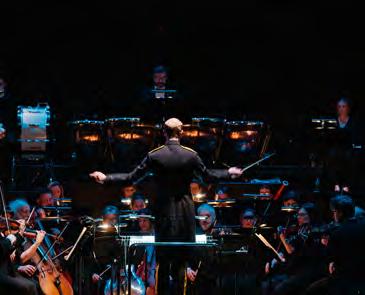


























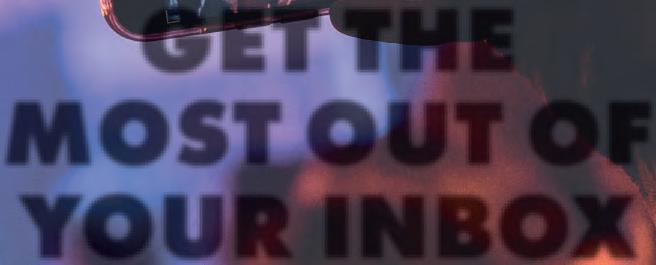





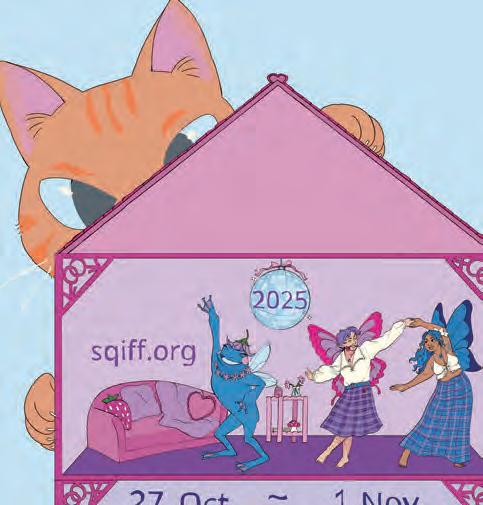



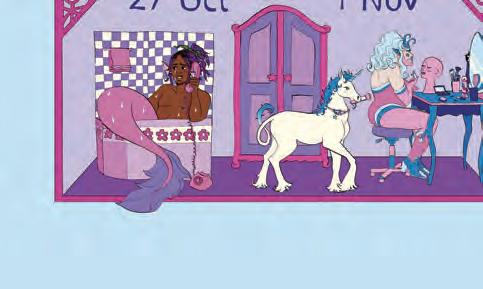


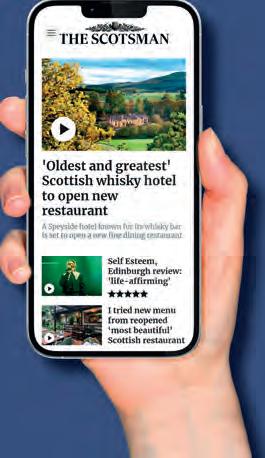

When you learn that Alan Partridge is set to elucidate, educate and entertain the nation about our collective mental-health crisis, it’s hard not to shudder slightly. On the face of it, Steve Coogan’s creation seems like the last person who’d come at this subject with tact and empathy, but on the other hand, he did drive to Dundee in his bare feet while gorging on Toblerone (check your Alan lore). A cry for help if ever you heard one. In this new six-part series, we follow Norwich’s leading media personality on his journey back to equilibrium after a 12-month stint in Saudi. (Brian Donaldson) n Starts on BBC One on Friday 3 October.
Real-life murders form the harrowing focal point of comedian Edd Hedges’ podcast, Wisecrack. He talks to Jay Richardson about the dilemmas of retelling a story he was personally caught up in and being haunted by some of the questions it raised
Described as ‘Baby Reindeer meets Adolescence’, Wisecrack is a new sixpart podcast where a very British tradition of stand-up is dissected by a very American form of true-crime analysis. The result is something disturbingly compelling and entirely unprecedented. A decade ago, comedian Edd Hedges made a rare visit to his parents’ home in a quiet Essex town. That night, a 23-year-old neighbour brutally murdered two people, including his own mother, and then violently tried to enter the Hedges’ house. The comic told the story in his 2017 Edinburgh Fringe debut which was seen by US producer Jodi Tovay, who set about trying to persuade Hedges to adapt and expand upon it.
‘When I joined the comedy industry in 2013, there was nothing like this,’ Hedges says of Wisecrack. ‘It was just about doing the Fringe and RussellHoward’sGoodNews if you were lucky. But I guess things have evolved a bit.’ Despite winning the prestigious So You Think You’re Funny title that year, Hedges never fulfilled his promise to break out in UK comedy. He reckons talking about the horrific incident while he was still an inexperienced act held him back ‘for a very, very long time’, and he laments the ‘toxic pressure for comedians to get a Best Newcomer Award nomination’. As the podcast relates, he was also caught between showing respect for the victims and the demand of his friend and director, comedian Sofie Hagen, that everything in his debut should be 100% true. Other friends and comics, such as Daniel Sloss and Adam Rowe, argued that some embellishment was justified if it made the show funnier and it retained emotional truth.
Tovay, whom Hedges belatedly opened up to, drove him to dig deeper and deeper into the details of the crime, to the point where he lost his temper. ‘I love her to bits but I told her to “fuck off!” at one point because she was pushing and pushing me. There are times that listening to her and Sofie on the podcast are very, very uncomfortable listening for me.’
Now pursuing a burgeoning, transatlantic stand-up career with a modified, updated version of the story, Hedges hopes to become an acknowledged long-form anecdotal master like his heroes Sarah Kendall and Mike Birbiglia, and to one day return to the Fringe. Talks are also underway about adapting Wisecrack for television. Much of what makes the podcast so horribly listenable is the questions it raises about storytelling truth, both on Hedges’ part and that of Tovay. He admits that one nagging issue (unresolved in Wisecrack) about his own inadvertent role in the murders still haunts him. ‘If we follow that thread, then that makes me a cause. And I just don’t want to think about that,’ he confesses.
New episodes available weekly on all the usual platforms.


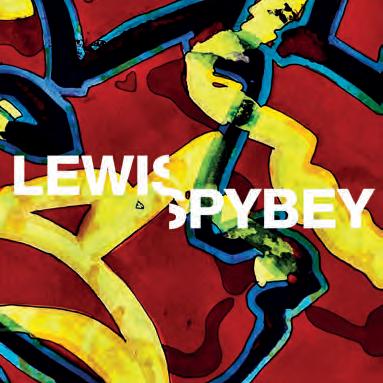
Let’s lay our lugs on this month’s alphabet-themed series of album recommendations. This time we’ve unearthed a few radical L wonders
There are many sounds in LEWISPYBEY (2024), an experimental collaboration between Edvard Graham Lewis and Mark Spybey, and most of them are laced with threat. There are ominous gloops like a killer traipsing through swampland; digital interference that an EMP device might make if it detonated in your brain; long drones that recall an ancient chant looping in some forgotten monastery. Yet somehow this forbidding electronica is unafraid of hooks that, while not quite danceable, tether its wild melange, gesturing towards horror while never forgetting to have a good time.
Paul McCartney’s avant-garde impulses are rarely championed, but on Liverpool Sound Collage (2000) they’re pushed to their limit. Challenged by the artist Peter Blake to create a soundtrack for his latest exhibition at Tate Liverpool, the former moptop sculpted a musique concrète patchwork of cut-up beats and archival clips (including background chatter sourced from Beatles recording sessions). It’s diverting enough to imagine a different life for McCartney in the 21st century, one spent tinkering on a laptop instead of strumming a guitar. (Kevin Fullerton) Other L listens: Lives Outgrown by Beth Gibbons (2024), Landwerk by Nathan Salsburg (2020), Loveless by My Bloody Valentine (1991).
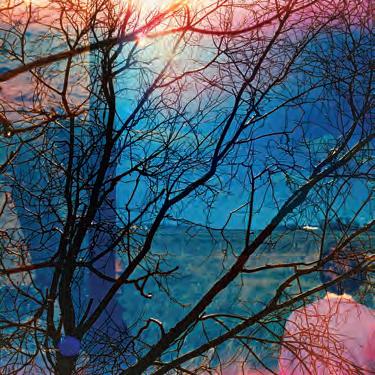
IAs Idlewild step into their fourth decade with fresh music and a tour, frontman Roddy Woomble reflects on the band’s journey. Fiona Shepherd hears about island magic, signature sounds and the challenge of finding new things to say
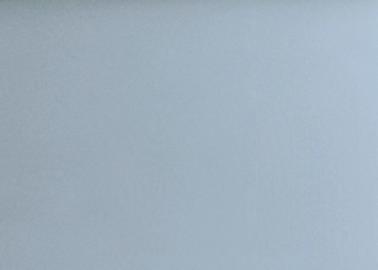



was ‘but also it really did feel like we were referencing ourselves a bit more than we would have
dlewild, those one-time punk pups, are 30 years old this year and will be marking the occasion, not with some greatest-hits tour, but a new album called, simply, Idlewild There is a sense of the definitive about self-titling an album. The Smiths, The Clash, The Stone Roses and Foo Fighters came straight out of the gates with eponymous offerings. Led Zeppelin loved the idea so much they released four consecutive examples of the form. Idlewild join the likes of Blur and Metallica in releasing their self-titled opus later in their career. ‘We’re a bit late to the party,’ says frontman Roddy Woomble, who admits that part of the reasoning was simply that his bandmates didn’t like any of the titles he suggested, ‘but also it really did feel like we were referencing ourselves a bit more than we would have done in the past.’



The catalyst for their tenth album was touring to mark the 20th anniversary of TheRemote Part. Back in 2002, their third full-length album sealed the Edinburgh band’s reputation as purveyors of thoughtful indie anthems and one of the most quietly influential Scottish bands of the last several decades. Idlewild are generally not an outfit who embrace nostalgia but Woomble notes that ‘sometimes it takes a concert and a reaction from the crowd to realise that you’ve done good work’. Coming together again post-pandemic, the tour ‘re-energised us to make music together as a band. It was actually a fairly quick process, not rushed but there was a real focus there.’

that; leave
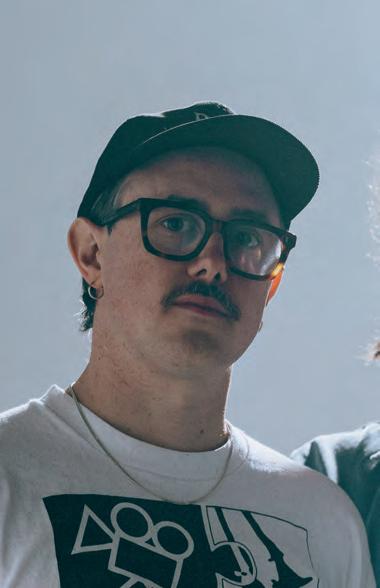


The five-piece convened in various locations, including on Woomble’s island home of Iona, using its old library building as a base. ‘Andrew Carnegie donated the money to build it in the 20s and people can leave books and take books out, but you have to go and get the library key. It’s a good space because everyone is there together and it’s also socially really fun because you have to make that effort to get there. Islands are always like that; the minute you leave the mainland and arrive on the island you feel like you’ve left something behind. There’s definitely a magic, especially that second boat. It’s that island-off-an-island aspect.’

The album was then recorded, lickety-split, in guitarist Rod Jones’ studio in Edinburgh and manifests, to Woomble’s mind, a return to the quintessential Idlewild sound. It follows the more esoteric likes of Everything Ever Written and Interview Music, their two other releases since returning from hiatus in 2013 with ‘new’ members Luciano Rossi and Andrew Mitchell joining the founding triad of Woomble, Jones and drummer Colin Newton.
But what might that signature sound be? ‘It’s a combination of personalities first and foremost, that’s what I realise now,’ says Woomble. ‘Even though we argue among each other like teenagers, we do have something between us. I’m thinking more so Rod, Colin and I because we’ve been in a band for 30 years so there’s a different dynamic because we’ve got that history. And from a musical point of view, it’s fairly simple; we’re not over-complicating things, although there’s always that idea of “could there be another chorus?” We always have chorus one and chorus two and quite often chorus one becomes the verse and chorus two remains the chorus.’
The album was then recorded, lickety-split, in guitarist Rod Jones’ studio in Edinburgh and signature do although working
Woomble points to Chicago veterans Wilco as his favoured blueprint for progressing gracefully as a band. ‘Some of their records aren’t as popular as other ones but they just carry on, working towards something, finding something new to say. I think that’s one thing that people like about us; that we carry on being creative. It’s a body of work, a life’s work of being creative together.’

Idlewild is released by V2 Records on Friday 3 October; they play St Luke’s Glasgow, Tuesday 7 October; Liquid Rooms, Edinburgh, Wednesday 8 October; Barrowlands, Glasgow, Sunday 7 December.

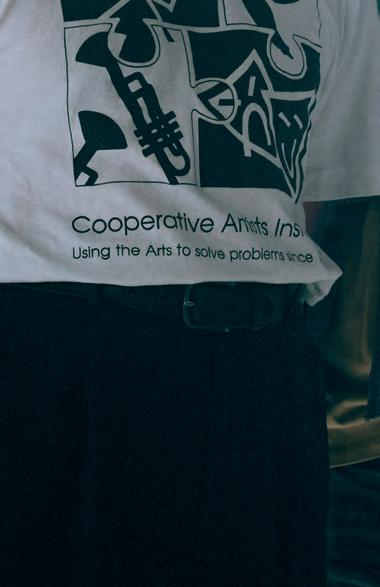




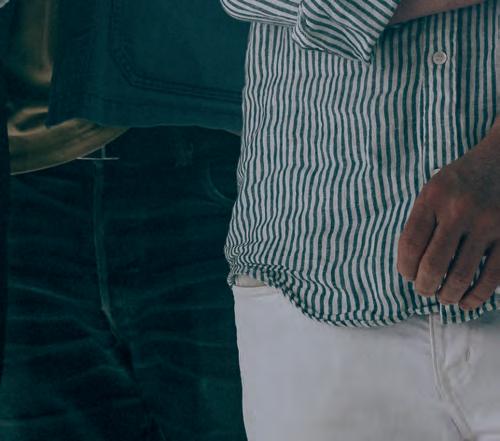
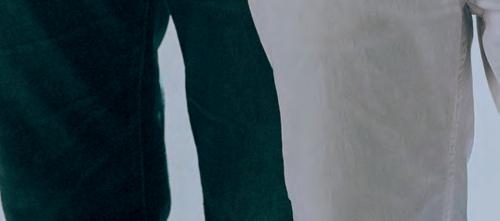

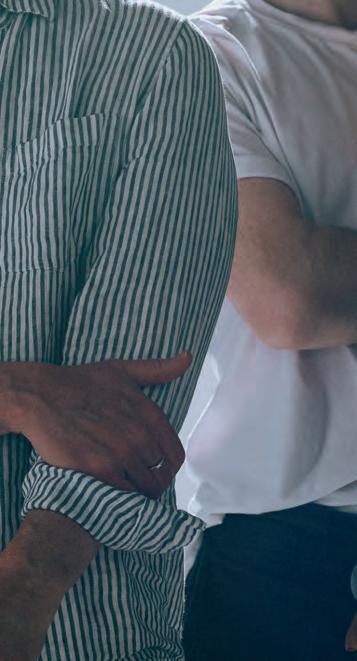

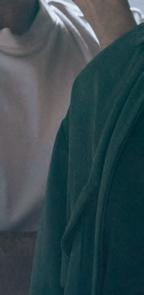


It’s a body of work, a life’s work of being creative together “


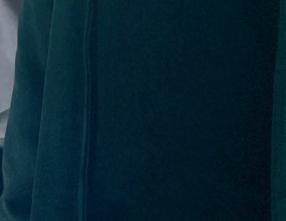



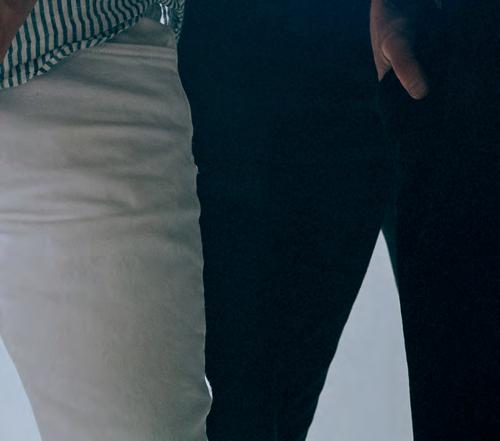































































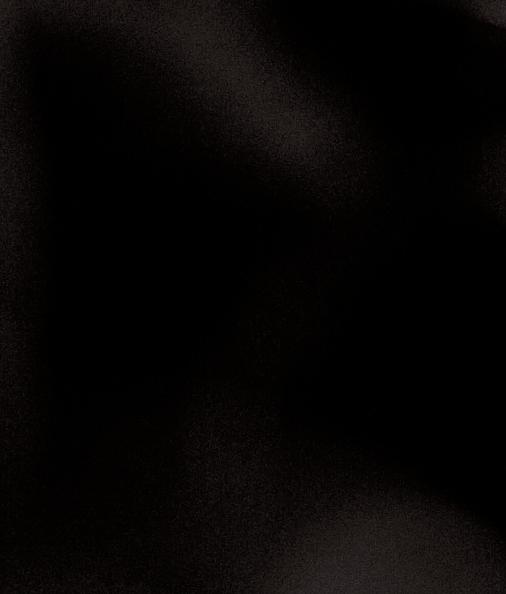













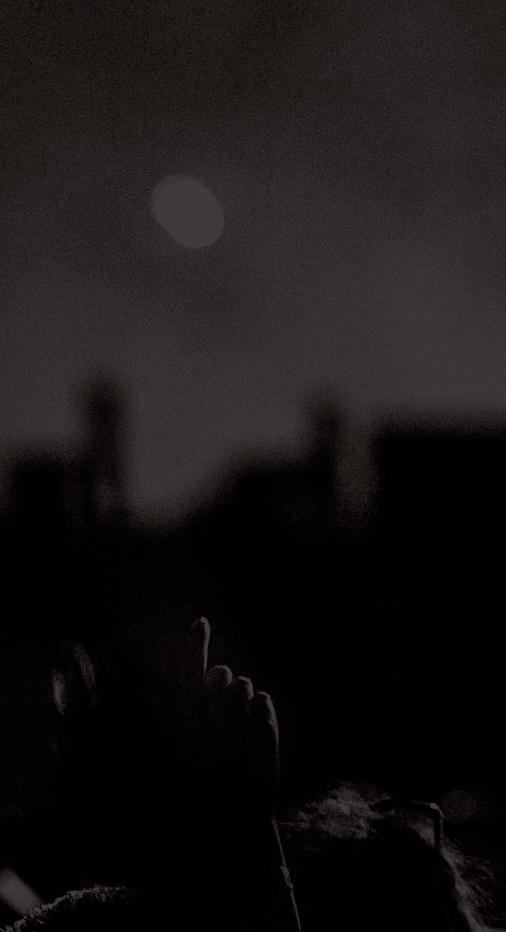


























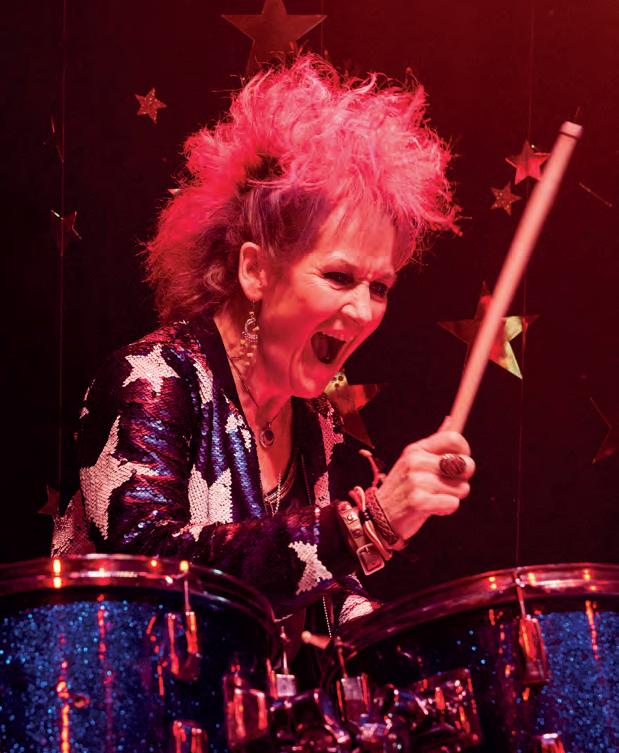
Returning to her West Yorkshire homeland, Sally Wainwright’s latest BBC drama promises all the secrets, rumours and provincial gloom of her previous hit series, Happy Valley. Hebden Bridge, a town Ted Hughes once described as shut in by a ‘sodden dreariness’, is a fitting setting for Riot Women. Its five female leads are ‘middle-aged, menopausal and invisible’, trapped between loveless marriages, dependent parents and wayward children in an otherwise quaint valley of disillusionment.
Emboldened by a cocktail of midlife strife and teenage nostalgia, they form a punk band: think Bikini Kill if they settled in northern England. Rosalie Craig plays Kitty, the band’s unruly frontwoman. With a penchant for drama, she brings a hearty dose of female rage that inflames band tensions as much as it strengthens their bond. As they prepare for their debut at the local talent show, the women navigate the weight of their watershed years in the spirit of punk angst, finding friendship and purpose in their anger.
The show’s more sombre moments are sure to be balanced by witty performances from Tamsin Greig (FridayNightDinner), Joanna Scanlan (TheThickOfIt) and Amelia Bullmore (I’mAlanPartridge), who play a police officer/bassist, teacher/pianist and midwife/guitarist, respectively. Lorraine Ashbourne (Alma’sNotNormal) plays the band’s drummer and founder, while an original soundtrack by Brighton-based duo ARXX promises power-pop music to boot. Embrace your inner riot grrrl and dive into this six-part series. (Evie Glen)
Due to start on BBC One in October.
In this column, we ask a pod person about the ’casts that mean a lot to them. This month, it’s Helen Bauer, creator of Helen’s Log, the audio diary of a thirtysomething trying, and often failing, to make sense of life
Which podcast educates you? Which one doesn’t? I have learned more about murder than I care to admit fully. Mainly though, I have learned a lot about history. You know what my main take away from Short History Of is? The English are worse than we thought and I didn’t think we were good to start with.
Which podcast makes you laugh? I love Amy Poehler’s new podcast Good Hang so much; just elite-level fun. I am also a huge fan of RuralConcerns with Chris Cantrill, James Shakeshaft and Sunil Patel. Looking through my subscriptions, honestly it looks like a 70-year-old history buff who is going through a divorce is in charge of my listening. Think less joy, more learning.
Which podcast makes you sad or angry? Every single true crime and history podcast but I think that must be the point. Like, if I was laughing, sir, you have not done a good job.
Which podcast is your guilty pleasure? Literally no guilt at all as I cannot recommend this one enough if you grew up watching GirlsNextDoor on MTV: Bridget and Holly have an incredible podcast (GirlsNextLevel) and I love them. What I do think is embarrassing is sometimes I listen back to my old podcasts: cringe, I know.
Who currently doesn’t have a podcast but totally should? Gok Wan, because GOK WAN! I love that man so much and I just want to know his opinion on everything. Failing that, the character of Lynn in AlanPartridge doing a deep dive into the royal family would make me very happy.
Pitch us a new podcast idea in exactly 13 words A medium channelling Princess Diana to find out exactly what happened that night.
New episodes of Helen’s Log are available every Thursday from helenbauer.co.uk/podcast-1











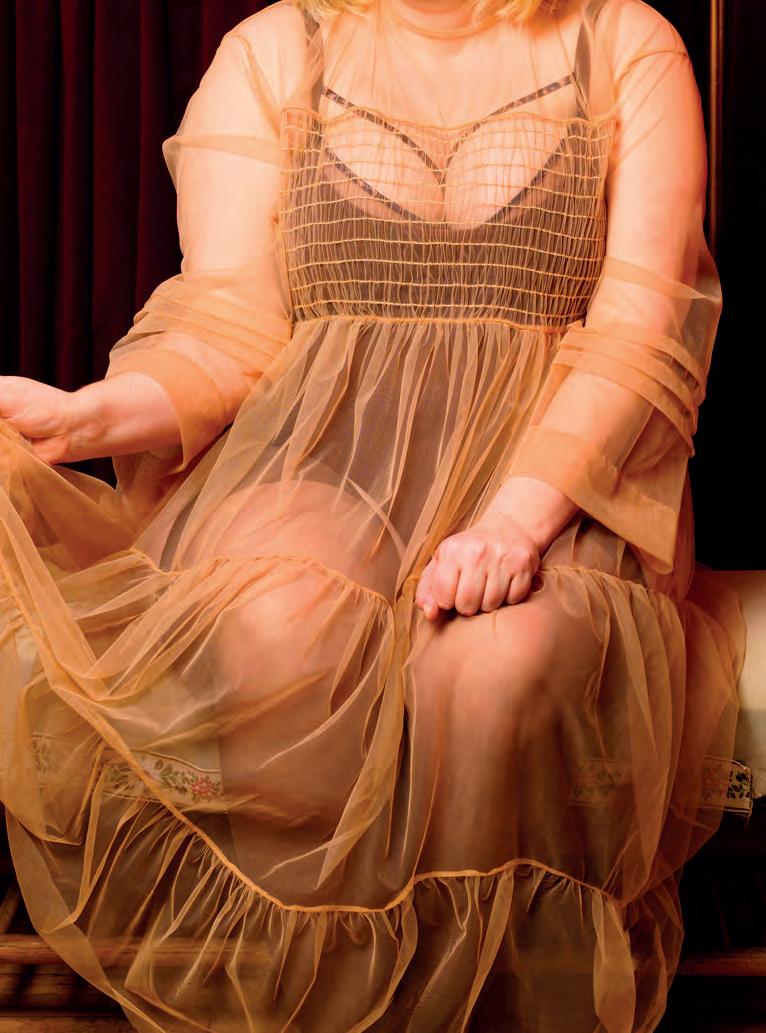
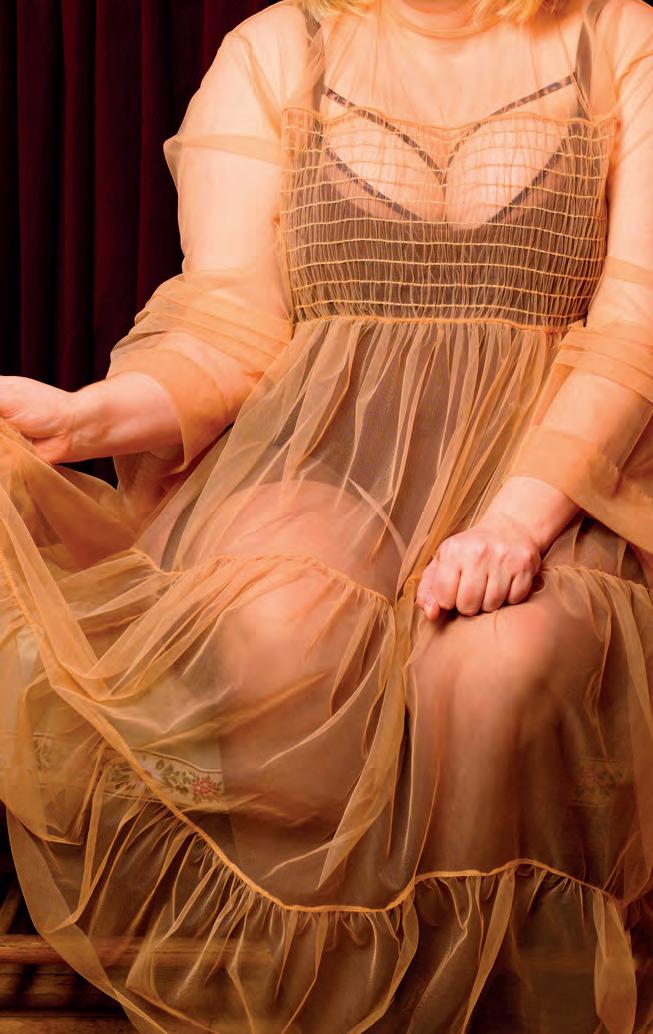
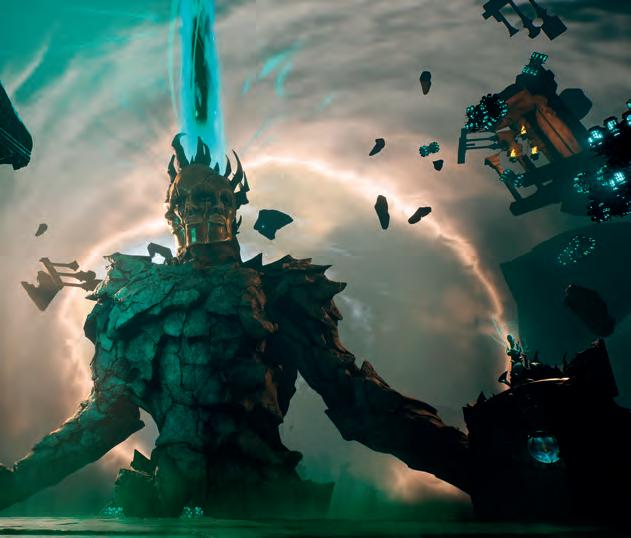
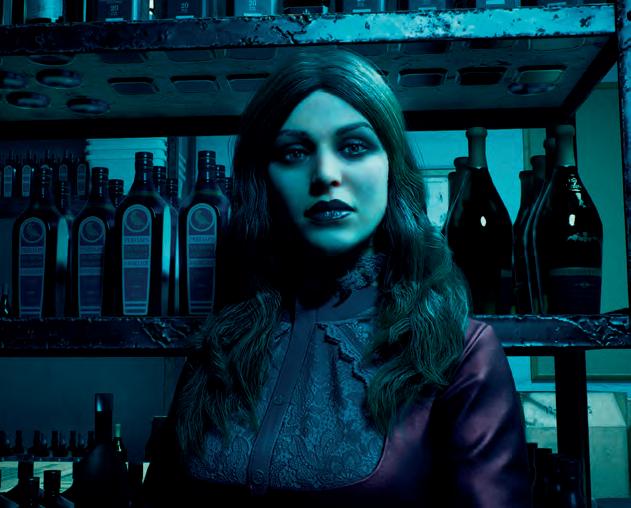


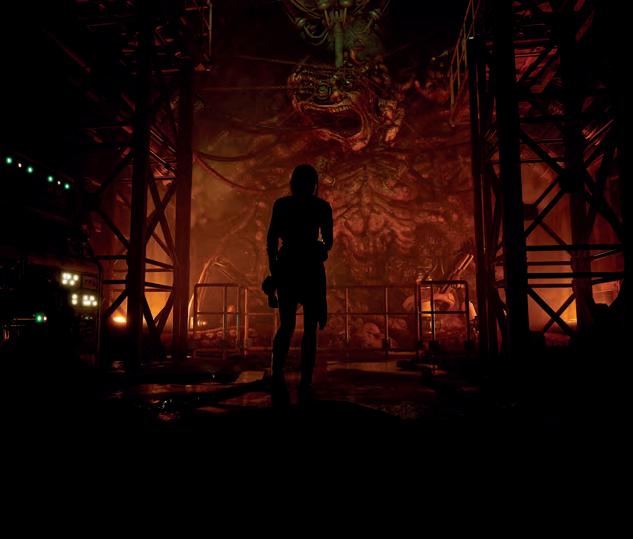

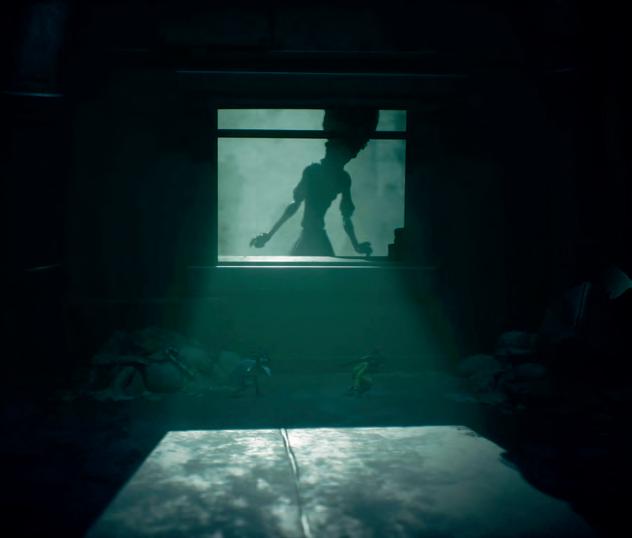

With the season of ghosts and ghouls upon us, Murray Robertson picks out the best spooky/gory/weird games released this month, as well as bravely venturing into the dusty archives to pick out some recent and classic titles to get the blood pumping. Lights off now . . .

As nights darken and Halloween beckons, October is the perfect time to close the curtains and settle down with a horror game. Bye Sweet Carole (out Thursday 9 October) is a beautifully animated narrative-horror set in the early 20th century. A young woman searches for her missing friend in a mysterious orphanage, which sounds like a perfectly safe course of action. The game’s aesthetic is reminiscent of 2000’s American McGee’s Alice, itself inspired by Alice In Wonderland. It’s also similar to puzzle platformer Little Nightmares III (Thursday 9 October), the latest in the popular series. It’s the first entry from Until Dawn developer Supermassive Games and it follows a pair of new protagonists exploring a nightmarish dreamworld. The original Little Nightmares rereleases on the same day in ‘enhanced’ form.
Anyone who’s finished Doom: The Dark Ages and wants a bit more could do worse than check out Painkiller (Tuesday 21 October), a reboot of the grisly 2004 FPS of the same name. It looks remarkably similar to id Software’s most recent Doom (to be fair, it’s been in development for years). Painkiller’s Polish developer Anshar Studios has form in the horror genre, having worked on Layers Of Fear, Observer and the Silent Hill 2 remake. The tortuously long-awaited sequel to a cult 2004 action RPG, Vampire: The Masquerade – Bloodlines 2 (Tuesday 21 October) was initially set for release in 2020. Developer Hardsuit Labs and original Bloodlines writer Brian Mitsoda were then thrown off the project in favour of Still Wakes The Deep developer The Chinese Room. Previews of the resultant game have divided opinion between purists looking to recapture the original and those who think this could be an interesting new direction for the series.
Another sequel, Tormented Souls 2 (Thursday 23 October), is the follow-up to a 2021 game that was very much in awe of the original Resident Evil. There’s a real appetite for this sort of survival-horror throwback, buoyed by the recent success of the Resi remakes and last year’s Silent Hill 2 do-over. And speaking of remakes, Plants Vs Zombies: Replanted (Thursday 23 October) is a remaster of the hugely successful tower defence game from 2009. While its legacy has been somewhat sullied by poor spin-offs and an exploitative free-to-play sequel, the original still stands tall as a classic of the genre. As well as an HD repaint, players can enjoy local co-op and new game variants including a ‘hardcore’ mode.
Horror has a storied history in gaming and there are many classic titles well worth your time this month. Over the years since 2019, Capcom have been steadily remaking their Resident Evil back catalogue (together with new entry Village). Resident Evil 4 (2023) is the standout in a consistently strong series: it’s a suffocating assault on the senses and a practically perfect horror game in its most recent form. Capcom’s Resi-rection success eventually spurred rival Konami to get back into making games, with last year’s Silent Hill 2 remake by far the best way to experience one of gaming’s most famous stories. Another game feted for its strong narrative is 2015’s SOMA. Set in an underwater research facility, it’s an intensely creepy first-person adventure that explores notions of consciousness and humanity.
Arriving 13 years after the first game, Alan Wake 2 (2023) is a magnificent postmodern action-adventure about a novelist trying to escape an alternative dimension. It’s wonderfully unpredictable, hilariously self-referential and it wears its Twin Peaks heart on its bloody sleeve. Last but definitely not least, 2014’s Alien Isolation is one of the most terrifying games ever made. Players take on the role of Amanda Ripley, searching in vain for her mother (yes, that Ripley) on an eerie, seemingly abandoned space station. Total War developer Creative Assembly worked with a sizeable budget for this loving tribute to Ridley Scott’s Alien, and this nerve-shredding game of hide-and-seek featuring a (mostly) single xenomorph is a sustained horror experience like no other.





A striking fusion of sound and visuals.

Tickets: £25 / £13
Concessions available.

Book tickets at scottishensemble.co.uk or scan the code below.








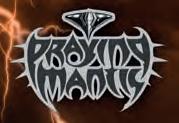







25 October
Eden Court, Inverness
26 October
New Auditorium, Glasgow Royal Concert Hall
27 October
The Queen’s Hall, Edinburgh
29 October
Perth Concert Hall

























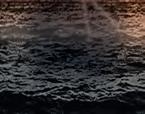





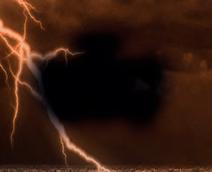























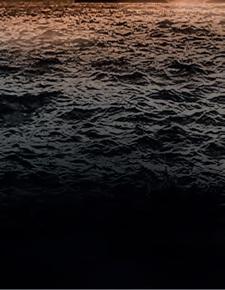
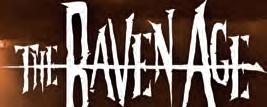











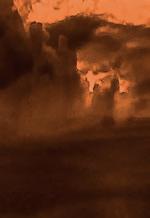











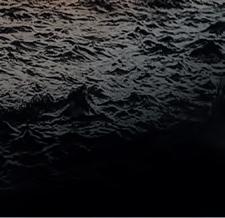
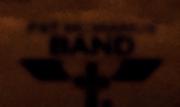
























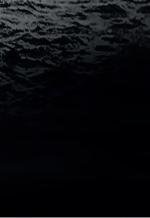



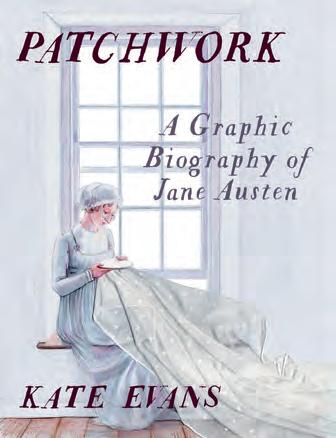
IWith her graphic biography of Jane Austen, Kate Evans has crafted a book of depth and beauty that explores not only the finer detail of Austen’s life but the bigger picture of the society she lived in, says Lucy Ribchester
t is a truth universally acknowledged that anyone with a Jane Austen fan in their life is seldom in want of a Christmas or birthday gift idea. A whole economy of fancy Austen fripperies exists now (Mr Darcy dessert spoon, anyone?), confected to capitalise on our nation’s love of the literary juggernaut. At first glance, this pleasantly hefty graphic biography, written and illustrated by Kate Evans, would appear to fit nicely into the category of Austen Gift; and it does on one level. It’s a beautifully produced book, gentle in its colour palette and neatly conceived, built around images of the patchwork coverlet Austen sewed in her final days. But there is so much more than celebratory whimsy to Evans’ account of Austen’s life. Evans (who was longlisted for the Orwell Prize in 2018 for her graphic novel about the refugee crisis, Threads) centres Austen’s tale as the story’s spine, but also branches off into examinations of colonialism, slavery and the advent of industrialisation. Playing on the concept of patchworking, she collages text from Austen’s letters, novels and juvenilia, to follow her from birth, through the tumultuous rise and fall of her financial fortunes, right through to her death and afterlife. Evans’ own sparse but poetic words are embroidered around Austen’s (‘We are making diamonds, compressed carbon . . . from the hard facts we know,’ she says), along with her intricate sketches, a mixture of naive delight and raw expression. She gives us neat, sherry-glass shots of Austen’s novels in comic-strip form, locating them at the time in Austen’s life in which they were written, and counterpoints Austen’s tale with stories of the women who produced the fabrics she used in her patchwork. Muslin is ‘combed through the jawbone of a catfish’ by Bengali women, while chintz is bartered from exploited Indian workers: ‘such are the threads that criss-cross the fabric of society’. These latter interludes force us to re-evaluate our relationship to the 18th and 19th-century fabrics that have become such stalwart emblems of the Austen brand, through their use in costume dramas. For every frock worn by Lizzie Bennet at a ball, an Irish woman lived in poverty, a child worked in a Lancashire mill, an enslaved woman, kidnapped from Africa, sang a protest song. Austen’s life, underpinned by its 18th-century anxieties about how to gain and maintain a living, was as dramatic as the lives of her characters in its marriage proposals and snatched inheritances. But it is Evans’ eye for telling a story, homing in on its miniature details and zooming out to interrogate the larger picture, that make this biography shine. As a work of both archival collage and historical re-evaluation, it’s a brilliant achievement.
Patchwork: A Graphic Biography Of Jane Austen is published by Verso Books on Tuesday 28 October.
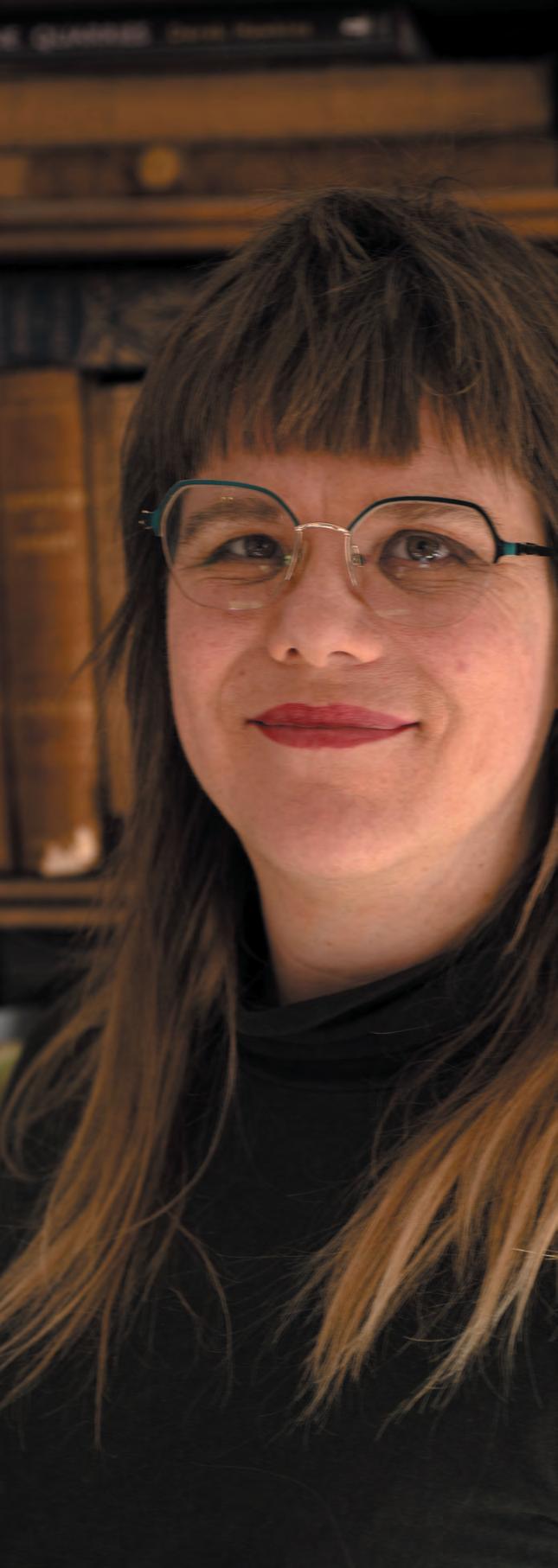

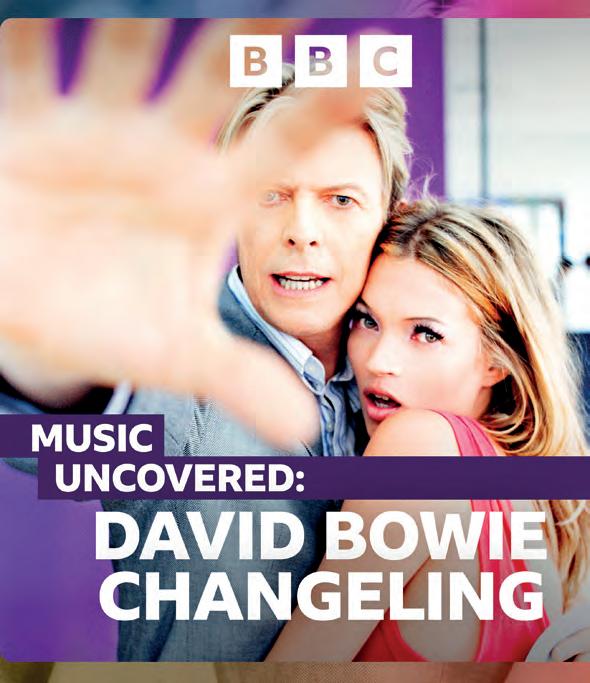
‘He’s chameleon, comedian, Corinthian, and caricature,’ sings David Bowie on 1971’s ‘The Bewlay Brothers’: the musician could well be describing himself. Across 50 years and 26 studio albums, Bowie continually reinvented his image, pushing the boundaries of music, fashion and performance. In David Bowie: Changeling, the latest instalment of BBC Sound’s Music Uncovered series, Kate Moss explores the first decade of the singer’s extraordinary career.
The podcast was no doubt made to coincide with the opening last month of the David Bowie Centre at London’s V&A East Storehouse. Consequently, it serves more as an accompaniment than a standalone production. Split into just eight 15-minute parts, it’s often left to the listener to place the events of each episode within the context of his early work, and Bowie novices may feel discombobulated. But for those who know their Major Tom from their Ziggy Stardust, David Bowie: Changeling is what the Beeb does best: informative, well-produced and engaging. Listeners are treated to a collection of interviews with everyone from childhood friends to Iggy Pop, Woody Woodmansey and Lady Gaga. Most enlightening is the testimony of Bowie himself. The picture it paints is of a studied reader of the cultural temperament; like a magpie, he knew how to take eclectic inspiration from those around him and fashion it into something wholly original. Concluding with the release of Young Americans in 1975, there’s plenty of material as yet unexplored. Don’t be surprised if ‘Part II: The Berlin Years’ drops in the near future. (Eve Connor) n All episodes available now.
The Last Dinner Party were chauffeured onto the indie scene via horse and carriage in 2023, dazzling critics and award panels alike with their quirky brand of histrionic baroque-rock. Just a year and a half on from the release of their acclaimed debut, Prelude To Ecstasy, the five-piece have crafted a 45-minute follow-up amid a busy schedule crammed with sold-out shows.
Proceedings begin on a typically grand note with ‘Agnus Dei’, a shining example of The Last Dinner Party’s ability to transform everyday scenarios into Greek tragedies. ‘Here comes the apocalypse, meet you at the bus stop,’ they cry, on a track that compares the feeling of heartbreak to that of the world ending in a blazing inferno. The project is also interspersed with beautifully raw moments such as ‘I Hold Your Anger’, on which the quintet sound more confident than ever as the strings kick in, and the captivating piano ballad ‘Sail Away’. Particularly impressive is ‘The Scythe’, a poignant reflection on grief and separation that could well be their most emotionally volatile and affecting work to date.
Detractors often regard their penchant for Renaissanceera stylings as a gimmick, but those critics generally fail to acknowledge that the group are producing engaging, unique indie rock music. Though it could have tried to stray a little further from the sounds of their debut, From The Pyre is a strong body of work brimming with bold creative choices and playful experimentation. It helps cement The Last Dinner Party’s place as one of the most interesting bands in the UK.
(Danny Munro)
n Released on Friday 17 October; The Last Dinner Party play Edinburgh Corn Exchange, Monday 17 November.


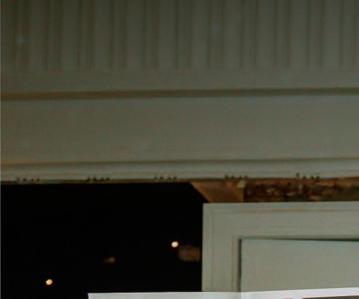
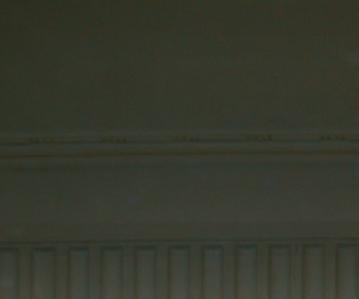


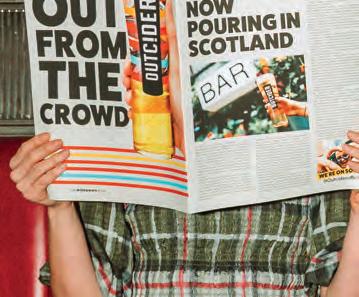


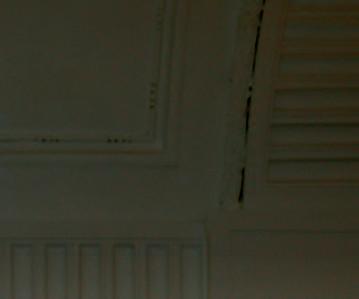


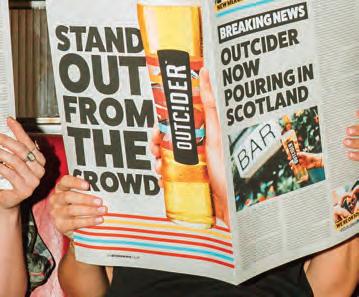
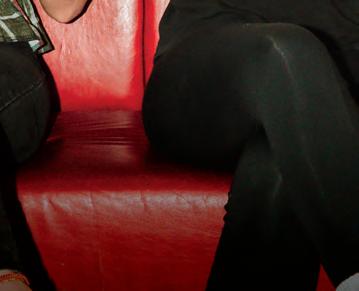

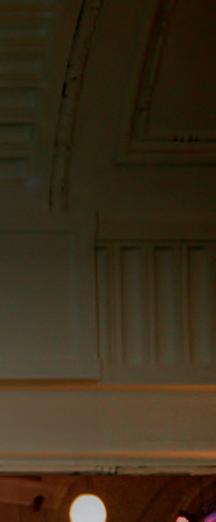

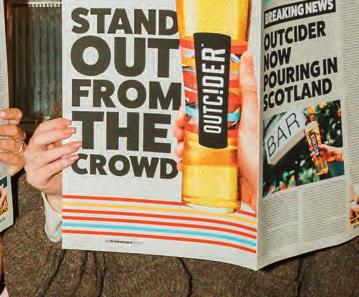


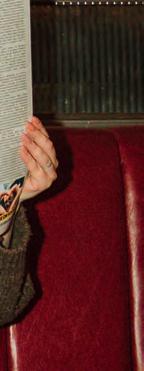












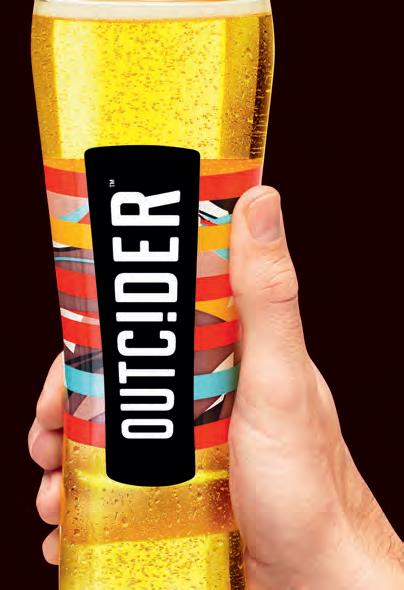









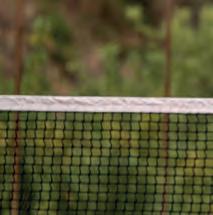
















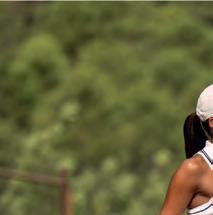




























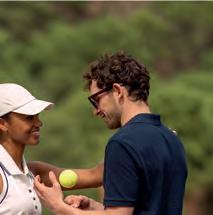

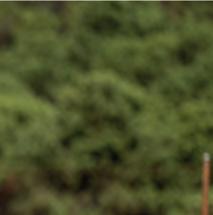





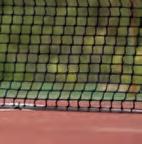

































The equinox has just passed, marking the threshold between summer and autumn. A moment when night and day are in perfect balance, it’s a liminal time to pause, reflect and, of course, binge tons of telly. In this new column about the TV you may have missed over the past few weeks, Claire Sawers encounters three (at least) psychopaths, two face-offs and one oedipal drama
Netflix celebrates the arrival of darker nights with a historical drama about the black stuff, or rather the complicated beefs within the famous Guinness family. House Of Guinness goes behind the scenes of St James’ Gate Brewery, starting with the death in 1868 of Ireland’s wealthiest man, Sir Benjamin Guinness, whose last will and testament triggers power grabs from his four kids. Cue secret babies, sham marriages and blackmail plots: it’s like Dynasty soundtracked by Kneecap. Writer Steven Knight, creator of Peaky Blinders, explores Dublin’s underbelly as he did with Birmingham, so expect more thuggery, this time with plenty paddywhackery. You can almost hear Irish viewers giving out to their screens as stereotypes flow like poitín at a wake (at one point a wise crone, widowed by the potato famine, diagnoses illnesses just by looking at someone), but juicy skullduggery and elegant production make this a slick, entertaining knees-up.
Meanwhile in London, a wealthy mummy’s boy (Laurie Davidson) brings home his new girlfriend, kicking off a tense dynamic between the two VIP women in his life. Based on Michelle Frances’ novel, The Girlfriend (Prime Video) is a psychological thriller flipping between two perspectives. Both mother and girlfriend think the vibes are off, and we must guess who the real psycho is. Saucer-eyed Cherry Laine (Olivia Cooke) has working-class roots but high-spec aspirations while chic, neurotic Laura Sanderson (Robin Wright) still kisses her son on the mouth and micro-manages him to a suffocating degree. There are glamorous interludes at the family’s Spanish villa and yacht, plus several preposterous plot twists. Overall, it’s fun and moreish, touching on serious oedipal issues while skeletons tumble out of closets.
Based on a true story, The Savant (Apple TV+) zooms in on an online agent assisting the FBI by infiltrating terrorist chatrooms. Jessica Chastain is the stay-at-home mom who waits until the kids are in bed then roleplays as a rage-filled patriot. Watching the investigator steer her own son away from misogynist games with the neighbours’ kids while tracking teen gamers embroiled in hate-crime plots, it’s gripping and unnerving, a taut, disturbing exploration of the manosphere, and a scaled-up American counterpart to Adolescence
In the light of all that torrid drama, documentary miniseries SneakerWars:Adidas VsPuma on Disney+ is a palate-cleansing and fascinating deep dive into the famous rivalry between brothers Adi and Rudi Dassler. Disney’s team got two years’ access to the sporting brands, plus interviews with David Beckham and Usain Bolt. Using early celeb endorsement as they gifted shoes to Jesse Owens at the 1936 Berlin Olympics, the Dasslers’ story is enjoyable not just from a sports-fan perspective, but from fashion, trivia and business angles too.
Meanwhile, set in the Highlands, ITV’s oddball serial-killer romp Coldwater follows John (Andrew Lincoln), a family man toiling to stay afloat in his own life while being called a ‘bloody cuck’ by the neighbour (a gloriously cloying Eve Myles). In a strong cast, Ewen Bremner is great as the henpecked psychopath but some farcical moments, plus the casting of comedy actors Greg Hemphill, Sanjeev Kohli and Jonathan Watson, steer the show away from inky darkness towards a more tongue-in-cheek caper.
Trump’s arrival in the UK last month prompted inspired programming from Channel 4, who devoted an evening to ‘the longest uninterrupted reel of untruths, falsehoods and distortions ever broadcast on television’. TrumpVsTheTruth is 100 lies from the Tangerine Toddler, fact-checked for your amusement slash horror. Over two chaotic hours with the logic-dodging Cheeto, we hear blood-chillingly sinister fake news, brazenly dumb brags and snort-out-loud daft fibs ($50m spent on condoms for Hamas is pure comedy gold). While giving flashbacks to every primary-school bullshitter, you’ll probably laugh, cry and despair in equal measure.
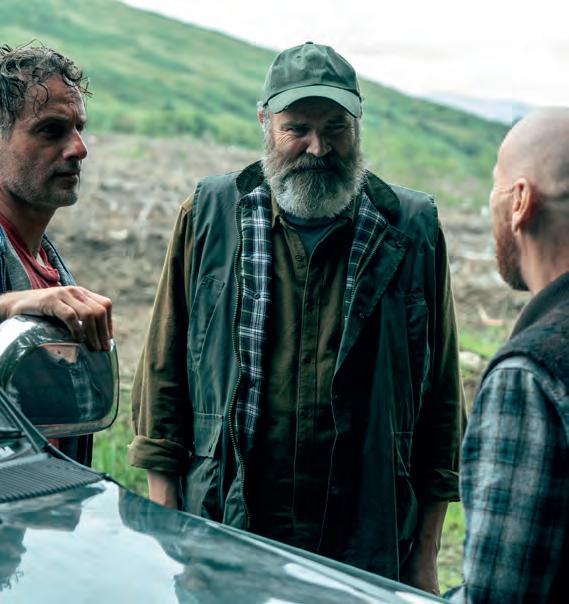
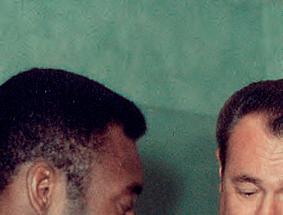
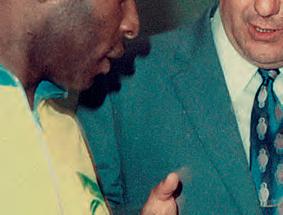
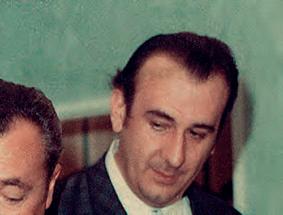




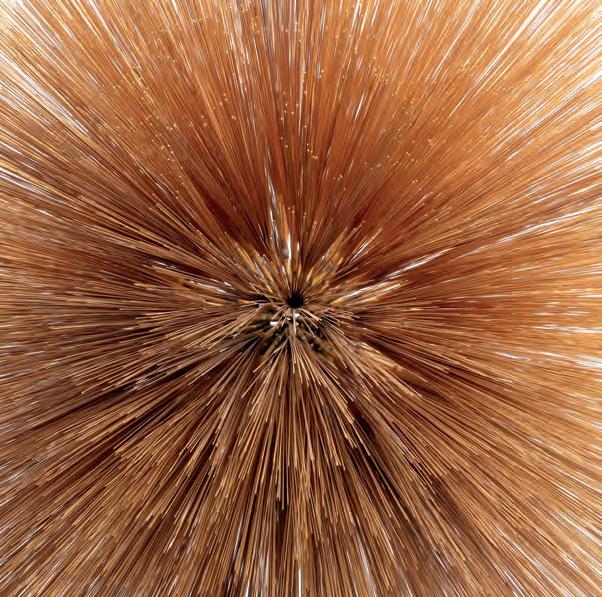
A master of mallet percussion, Mexican-born Patricia Brennan makes a swift return after 2024’s Breaking Stretch with an album that’s as alluringly mysterious as its predecessor was determinedly rooted in rhythm. When not composing and playing music, Brennan can be found with her telescope examining the stars, and the music here is apparently the result of her superimposing the circle-of-fifths music theory over a series of constellations that she viewed in the summertime sky of the northern hemisphere. If this sounds esoteric, a more grounded way into her work might be her experience in playing percussion pieces by John Cage and Karlheinz Stockhausen and her liking for the 90s alt-rock of Radiohead and Soundgarden, although lovers of early-70s King Crimson will find much to enjoy here, too.
Brennan’s compositions can be densely layered and complex, and the instrumentation she uses here (a ten-piece comprising string quartet, piano, guitar, bass, drums and electronics alongside her own vibraphone and marimba) creates soundscapes that are deeply impressionistic. Her own playing, however, always charts a clear, easily followed path. The opening ‘Antlia’ features both a simple, repetitive vibes lick that draws you in and a solo from Brennan over John Hollenbeck’s concise, insistent drumming that’s marvellously imaginative.
The close partnership of vibes and guitar on ‘Aquarius’ negotiates an exploratory but ultimately gorgeously involving melody before the two instruments go off in parallel improvisations, and the dizzying strings and insistent drumbeats of ‘Andromeda’ inspire delightfully eccentric solos from guitarist Miles Okazaki and the brilliant Sylvie Courvoisier on piano. It’s an album that demands but rewards concentration from the listener. While the penultimate ‘Aquila’ projects a feeling of nervous energy, the closing ‘When You Stare Into The Abyss’ brings both a sense of vastness and quiet resolution. (Rob Adams)
n Released on Friday 24 October.
In this meditation on the tangled, tender nature of friendship, Andrew O’Hagan (Mayflies, Caledonian Road) invites you to forage through a lifetime of personal experiences as he examines how our closest relationships enhance and imbue our lives. Constructed as an extended essay, O’Hagan posits the notion of companionship as a universal constant, the guiding force that keeps our best and worst excesses in balance, an ever-flowing well of strength especially in these times of dark adversity.
Having O’Hagan as a guide through his own reminiscences is akin to being ensconced in a cosy pub on a filthy night, enveloping the reader with recollections of times gone by and offering succour like a literary hot toddy. The vagaries of his many relationships will inspire grinning recognition or head-nodding sympathy, from the laddish escapades of childhood to professional allegiances turned sour, each section illuminated by his poetic, lyrical prose.
The warp and weft of regret and loss are intertwined among the best of this. The death of a friendship (in both a metaphorical and literal sense) sees O’Hagan delicately inferring a wider discussion on the human condition and speaks to his natural capacity for empathy and observation. With that said, the beating heart of the essay always returns to the potency of human togetherness. Luminary and mentor Seamus Heaney is invoked and recalled upon often, Edna O’Brien anchors his heart and inhabits his senses, Colm Tóibín sends him oranges. On Friendship taps into the lifeblood of what it means to be a living, breathing, sentient being and the connections that sustain us. In a world of AI, digital assistants and ‘social’ media, Andrew O’Hagan’s curative superpowers are needed more than ever. (Gary Sullivan) n Published on Thursday 9 October.
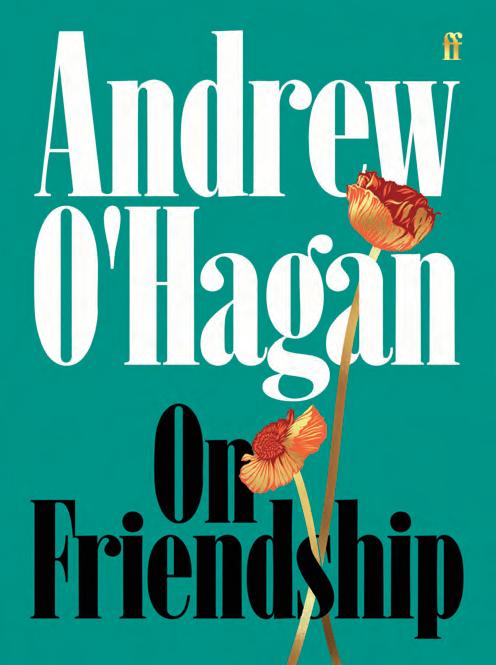

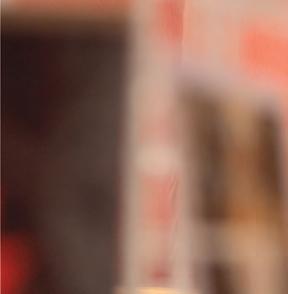
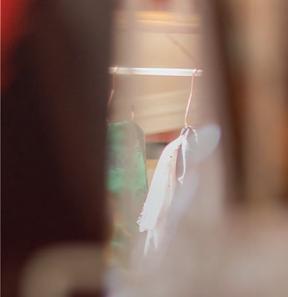
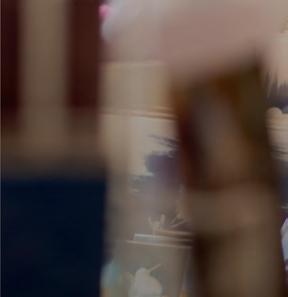

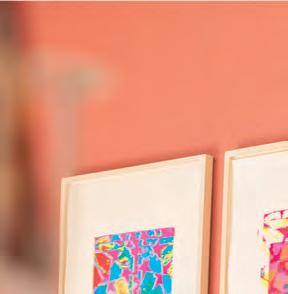


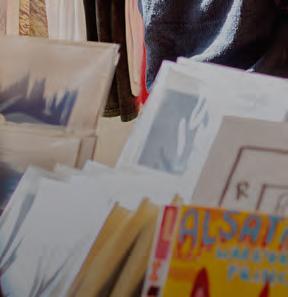



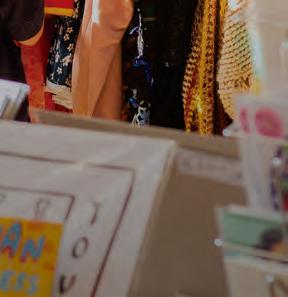
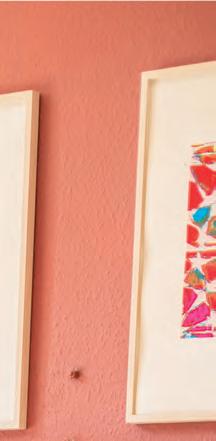
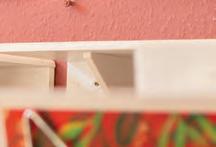
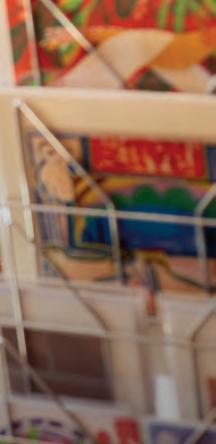
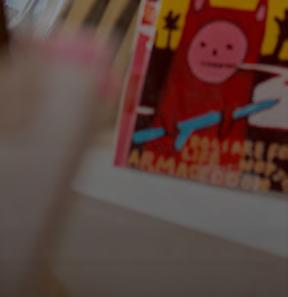
open Wed - Sun (11am - 5pm)
A new shop offering unique art & design pieces by creators from Edinburgh and beyond Summerhall, Edinburgh, EH9 1PL @summerhallartsboutique summerhallarts.co.uk
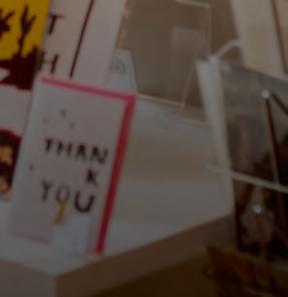


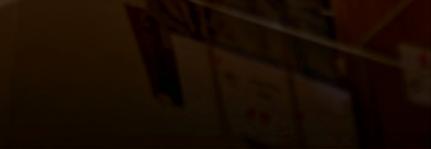

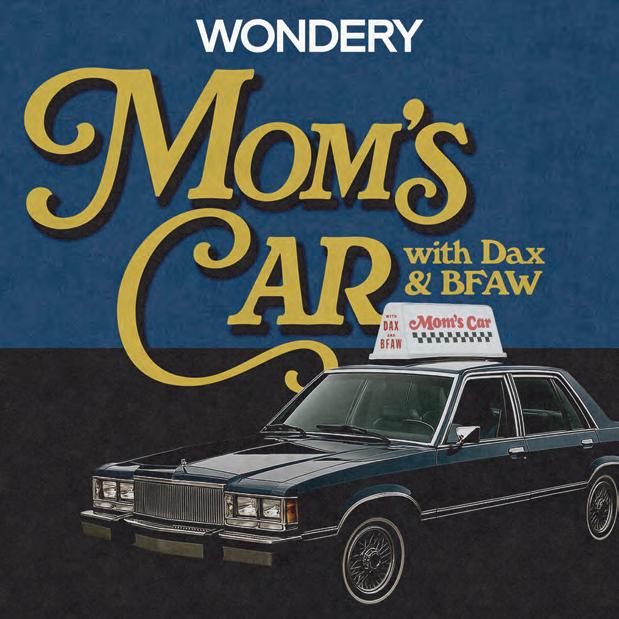
Avid listeners of Wondery podcasts will have a determinedly positive mindset turning on Dax Shepard’s Mom’s Car Alongside his best friend, Aaron Weakley, they hop into his wife Kristen Bell’s motor and deliver food while chatting to guests about their lives. All of this is simultaneously being filmed for YouTube, so the audio ends up sounding like a recorded conversation instead of a podcast. From the outset it’s all a bit vague, using the first five minutes of its foremost episode, with Bell herself, guessing (at length) the width of a bus. The listening atmosphere is then filled with constant nasal laughter and references to ‘crazy’ stories, the details of which are frustratingly withheld.
The food delivery process isn’t used to forward the narrative, outside of hearing a door slam, and there doesn’t appear to be much content in the first episode until a Reddit story is thrust in late on. Hurtling into a deep discussion about cheating in relationships, Bell brings depth, trying to answer questions in a way that will impart some wisdom about life phases and accepting new milestones in a healthy way. Acting as ‘America’s Mom’, she makes a clear attempt to raise core themes of the podcast and tie them together.
In the following episodes, guests such as Deadpool’s Karan Soni do a decent job of keeping the conversation on track (essentially running the interview) but vulnerable discussions about life, addiction and recovery are interrupted by stale 90s humour and shameless namedropping. At one point, Weakley even remarks, ‘I almost forgot this was an episode’, perfectly illustrating the podcast’s inherent problem. Having listened to other car-based pods, this feels muted in its technique, with tiresome forced guffaws, and falls short of being something a Wondery devotee might turn on again. (Rachel Morrell)
New episodes available every Tuesday.
From her previous two albums, we know Sudan Archives to be a bold, alternative multi-hyphenate violinist, singer and rapper. With The BPM, she adds the role of executive producer as she packs up her vocal and composition skills, and pivots to electronic dance music. Opening track ‘Dead’ (the record’s most impactful piece) is a theatrical introduction to the album’s dance-forward palette, revealing earth-shattering bass and drum loops after a cinematic prelude played on the artist’s signature violin. As we move through the track’s multiple arias, it’s apparent this is a step into something more experimental for Sudan Archives; a big swing akin to FKA Twigs’ Eusexua or even Charli XCX’s Brat before their mainstream success. In many ways, this is a sound-system album that belongs in the dark moist corners of a strobe-laden club.
Yet, with its aggressive beats, prickly lyrics and cinematic string arrangements, there’s something more introspective and confronting at play. While the Chicago and Detroit-inspired club sounds heard in many tracks tie back to Sudan Archives’ roots (the respective cities are her parents’ home towns), many other genres are explored, from Celticsounding violin hooks in ‘She’s Got Pain’ to jazz and funk sensibilities in ‘Los Cinci’.
The punky rap we heard in her 2022 album Natural Brown Prom Queen returns in ‘Ms Pac Man’, mixed with a more abrasive trap beat and juvenile lyrics (‘anyway, round two, so sick pee yew breeze through’). In other places, lyrics are more sweeping and metaphorical while remaining simple and repetitive, only occasionally bearing something more soulful. At times they touch on themes of sexuality and romance, at others on technology and mental health. In all instances, the instrumentation, which is expressive and dynamic in its production, is prioritised, even if melodies don’t have the same sticking power as on previous records. (Megan Merino)
Released on Friday 17 October.
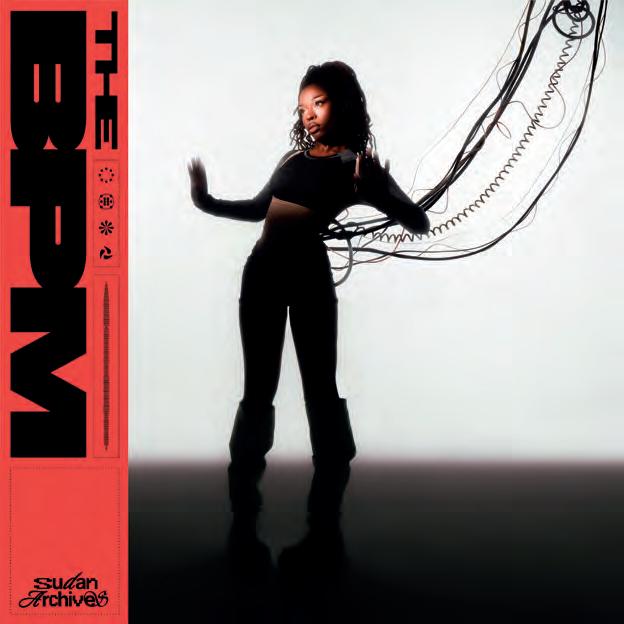


A packed month of things to do indoors or consume on your travels include the debut album of an acclaimed Scottish singersongwriter and the TV drama series which may do for phone-hacking victims what Mr Bates did for subpostmasters
ALBUMS
ASH
The Northern Irish trio are still seemingly obsessed with outer space. In the 90s, there was ‘Girl From Mars’, sound effects from Star Wars, and being led on stage by Stormtroopers, and now they’re posing as astronauts for new album, Ad Astra Cosmic etc.
n Fierce Panda, Friday 3 October.
RIANNE DOWNEY
The Consequence Of Love is the debut album from a much-heralded artist who dubs herself as a ‘Scottish country-folk fairy’. Her winter tour is doing very well, thanks, with plenty sold-out signs already on show.
n Run On, Friday 17 October.
GRAEME MACRAE BURNET
Benbecula is the latest in Polygon’s Darkland Tales with the author of His Bloody Project writing about a brother who investigates the brutal killing of his sibling on the eponymous Hebridean island in 1857.
n Polygon, Thursday 2 October.
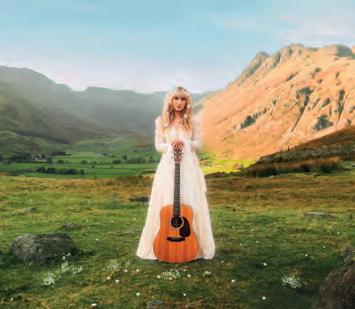
ZADIE SMITH
A non-fiction publication from the author of the Booker-nominated On Beauty, her Dead And Alive is an immersive affair which encompasses work by artists, musicians and writers who are no longer with us.
n Hamish Hamilton, Thursday 30 October.
BATTLEFIELD 6
Here comes the 18th instalment of this firstperson shooter game in which we are pushed forward slightly to 2027 where a fractured NATO take on a private military company.
n Electronic Arts, Friday 10 October.
PODCASTS
HEAVYWEIGHT
According to creator and host Jonathan Goldstein, this pod’s title refers to the emotional burden we all carry around. So don’t expect light and fluffy but do anticipate engaging and intelligent as Goldstein talks to regular people (not celebs, thank goodness) about an issue they’d love closure on.
n Episodes available widely.
David Tennant plays another real human, this time Guardian reporter Nick Davies who exposed the phone-hacking scandal. Toby Jones plays his boss Alan Rusbridger and Steve Pemberton is Rupert Murdoch while the excellent cast is filled out further by Rose Leslie and Robert Carlyle.
n All episodes available on ITVX.
Ariel Winter (Modern Family’s Alex) is the lead voice in this animated adaptation of Michael Buckley’s book series in which two orphaned sisters navigate a town of fairytale characters while uncovering the mystery of their missing parents.
n Apple TV+, Friday 3 October.
The aforementioned broadsheet had this modern romcom, where a ‘hot rabbi’ (Adam Brody) gets cosy with an agnostic sex podcaster (Kristen Bell), in its top ten of 2024, so if it’s new to you, catch up quick before its return.
n Netflix, Thursday 23 October.

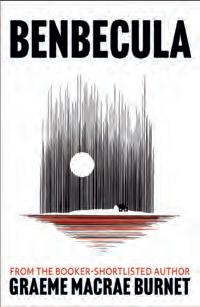


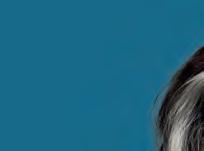




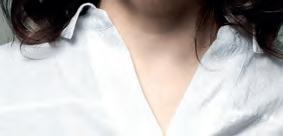

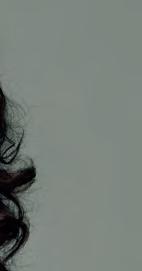

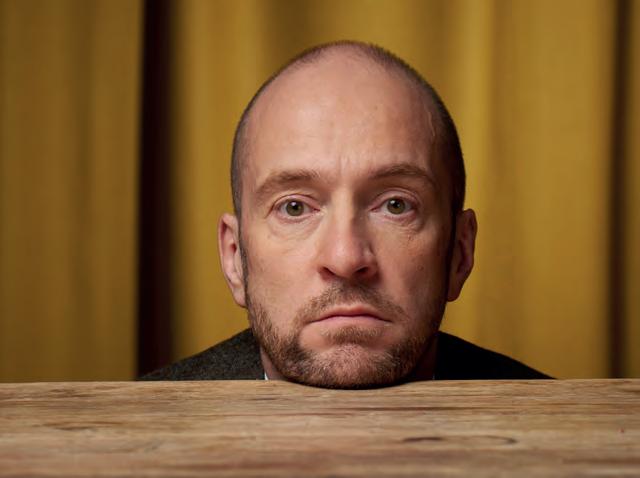
As we reach the climax to our 40th anniversary issue and in the spirit of an end-of-term class, we thought we’d do something a little bit different. So, for this month’s Q&A, here’s a compilation of some favourite answers since we relaunched in March 2022, featuring superyachts and seamen as well as existential angst and 11am techno. Dive in . . .
Who would you like to see playing you in the movie about your life? I’d be happy with any of the obvious choices: Stallone, Idris, Mirren (Derren Brown).
What’s the punchline to your favourite joke? ‘They both contain seamen’ (Courtney Pine).
If you were to return in a future life as an animal, what would it be? One of them whales that’s destroying superyachts (Ashley Storrie).
If you were playing in an escape room name two other people (well-known or otherwise) you’d recruit to help you get out? I’d only need Boris Johnson. He seems to be able to get out of anything (Sandi Toksvig).
When was the last time you were mistaken for someone else and what were the circumstances? On a visit to NYC, they closed Prada so I could shop in peace because they thought I was Kylie. It got a tad embarrassing in the end (Clare Grogan).
What’s the best cover version ever? ‘Duvet Know It’s Christmas’ (Milton Jones).
Whose speaking voice soothes your ears? Adam Buxton walking his dog. Mary Anne Hobbs breathily teeing up some 11am techno (Ivo Graham).
Tell us something you wish you had discovered sooner inlife? Croissants are not a low-calorie health food. Too late now (Stewart Lee).
Describe your perfect Saturday evening? Not living in existential angst. Being with people who make me laugh. Or group therapy. Or both (Will Young).
If you were a ghost, who would you haunt? Don’t think I want to haunt anyone. Sounds boring (Arielle Free).
If you could relive any day of your life, which one woulditbe? Gosh, I don’t know. I barely remember yesterday, haha (Bambie Thug).
What’s your earliest recollection of winning something? Stuck a pound on a raffle at a party when I was about nine or ten. I won £100. Been chasing that high ever since (Connor Burns).
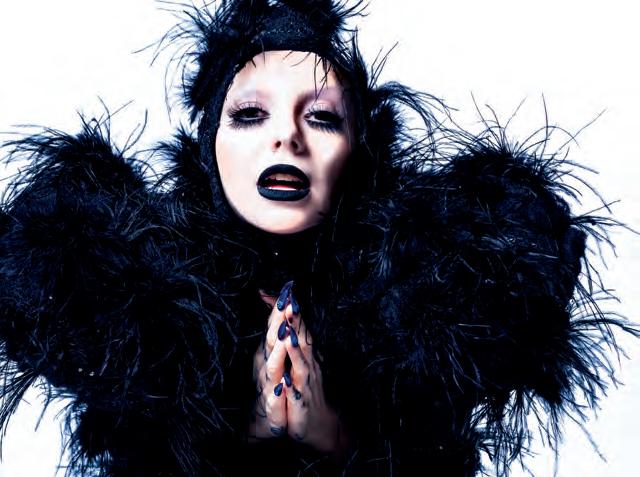
Did you have a nickname at school that you were ok with? And can you tell us a nickname you hated? All my nicknames were derogatory. My sister calls me Slob. My brother called me Stick In The Mud. I’ve been called Hop Along and Maggot. But my lawyer calls me Goddess (Toyah Willcox).
If you were to start a tribute act to a band or singer, who would it be in tribute to and what would it be called? Kate Bush, and it would be me and 12 other similarly Kate Bush-obsessed middle-aged women, and we would be called Mothering Heights (Caitlin Moran).
When were you most recently astonished by something? The number and quality of these questions (Myra DuBois).
What tune do you find it impossible not to get up and dance to, whether in public or private? I can usually resist that stuff (Tim Key).
Which famous person would be your ideal holiday companion? Anthony Hopkins. He’s just got a great sense of humour. I love the fact that he’d already gone to bed when he won his second Oscar (Eddie Izzard).
As an adult, what has a child said to you that made a powerful impact? My older sons bought me a lovely ceramic coffee cup with the word ‘wanker’ artfully embossed on it (Shaun Keaveny).
Tell us one thing about yourself that would surprise people? I think I know all the words to A Goofy Movie (Kiell Smith-Bynoe).
When did you last cry? On a plane watching a film. I always cry on planes. It’s the pressure apparently. I also get uncalled-for erections because of it too (Alan Cumming).
What’s the most hi-tech item in your home? I own a hi-tech games console upon which I often play Grand Theft Auto. It compromises my principles but at the same time is tremendous fun (Chief Commissioner Cameron Miekelson).
What’s a skill you’d love to learn but never got round to? Dancing with marginally greater elegance than a newly born giraffe (Chris Brookmyre).
By decree of your local council, you’ve been ordered to destroy one room in your house and all of its contents. Which room do you choose? I would tell the council to get to fuck (Louise Welsh).
If you were selected as the next 007, where would you pick as your first luxury destination for espionage? I have difficulty with this question because I don’t think MI6 works like that (Reg D Hunter).
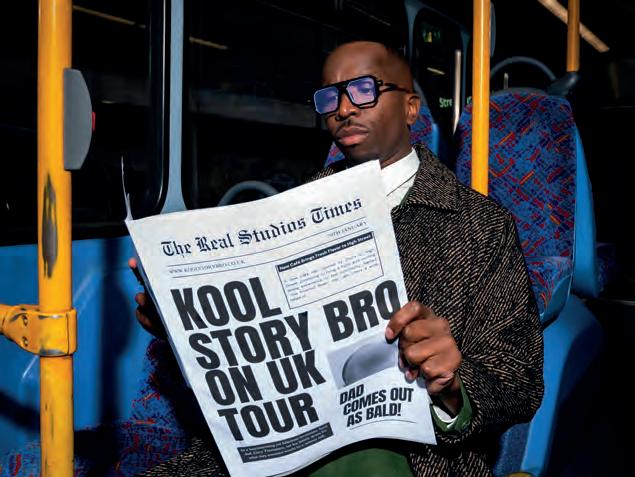

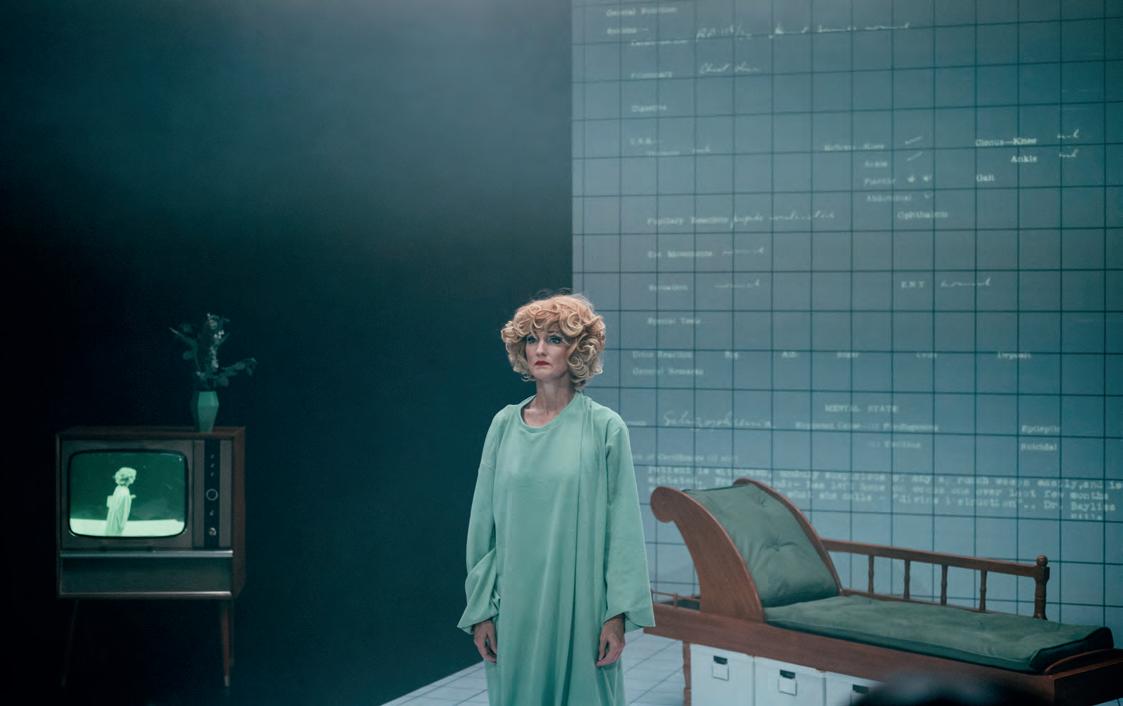

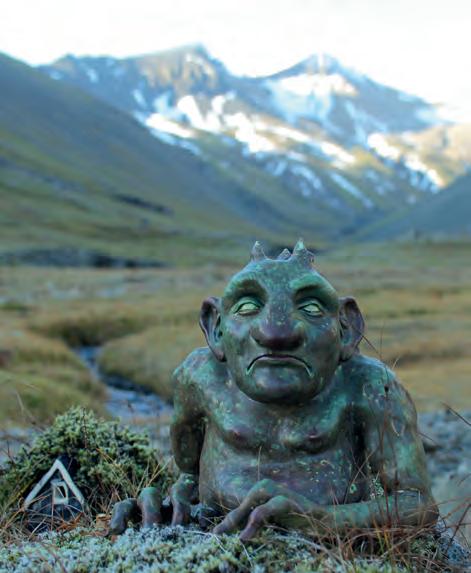
1 2 3
With the theme of ‘comfort and disturb’, the Scottish Mental Health Arts Festival (20 October–9 November) is back featuring its International Film Awards selected from over 400 submissions and theatre highlights including Leah Shelton’s Batshit (pictured) and a one-day showcase entitled Are You Sitting Comfortably?
Take Me Somewhere (15–26 October) lays on another programme of radical performance across Glasgow inviting audiences into spaces of ‘care, resistance and transformation’. Getting involved is Dan Daw with a new dance reflection on class and queerness, and The Mongrel (pictured) from Shawn Nayar which tackles imperialism.
Under the umbrella of Lights Of The North, the Scottish International Storytelling Festival (22 October–1 November) brings evocative tales to various parts of the country from Dumfries to Shetland. As well as performances, events and workshops, there’s an exhibition of illustrations and ceramics (pictured) from Hester Aspland.
